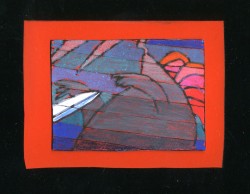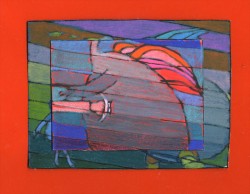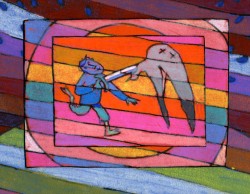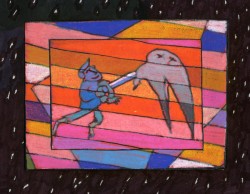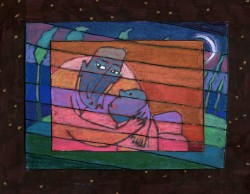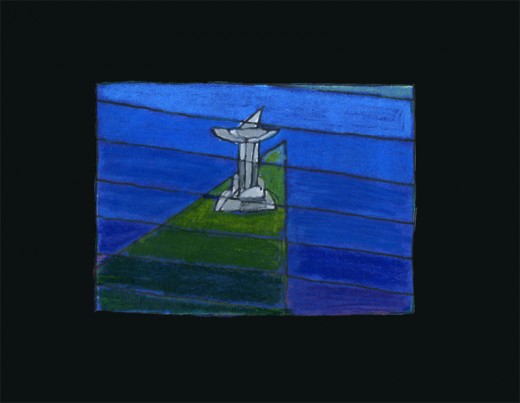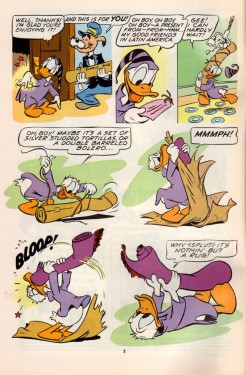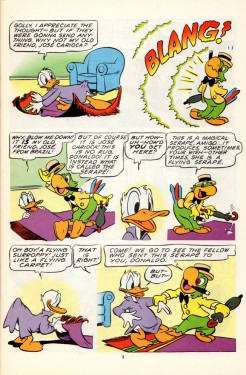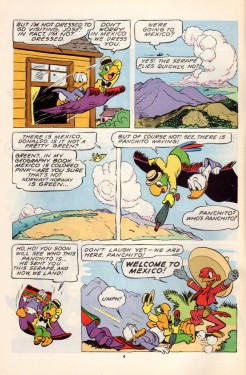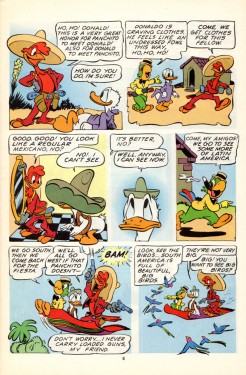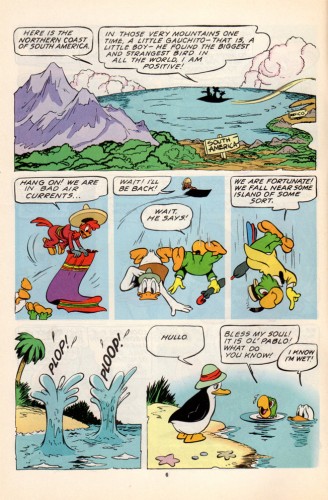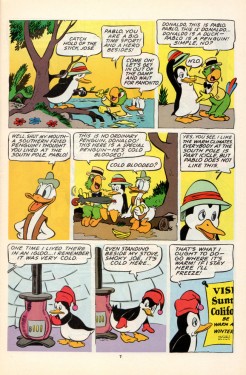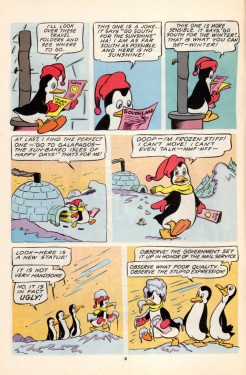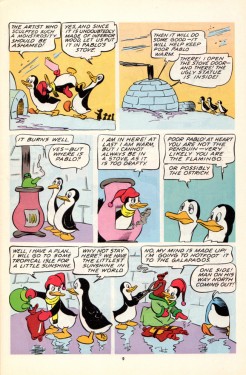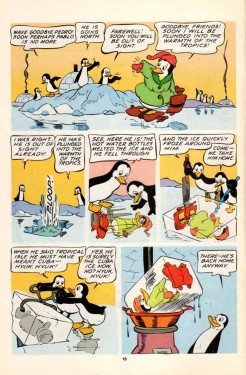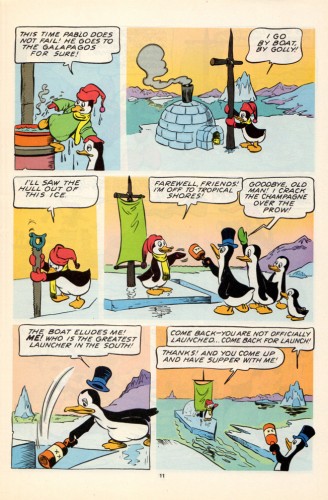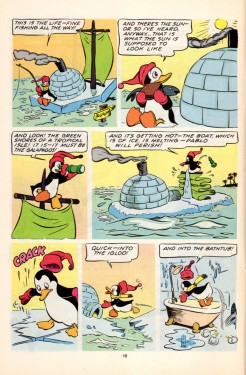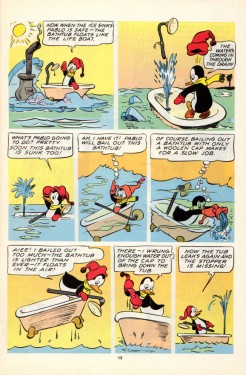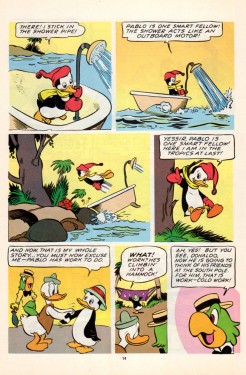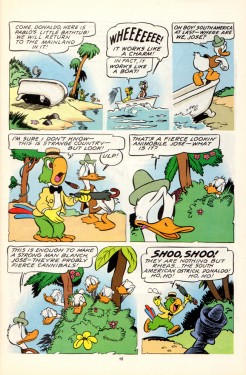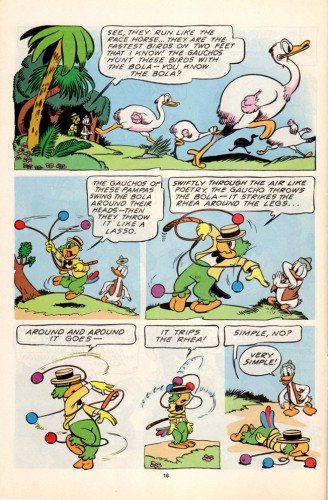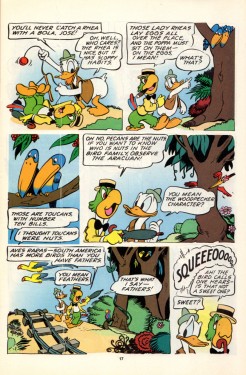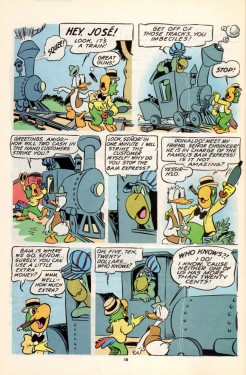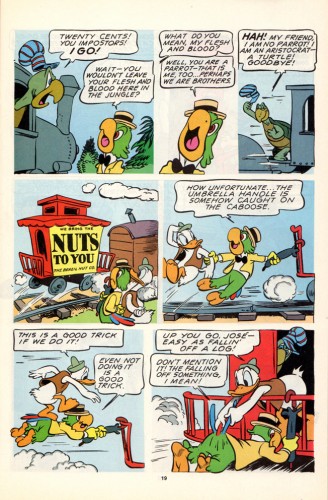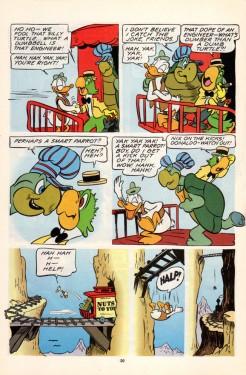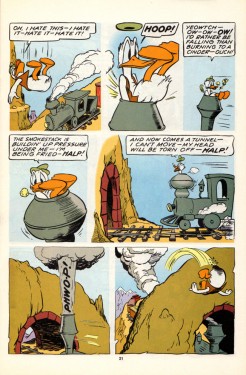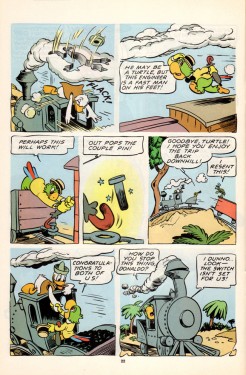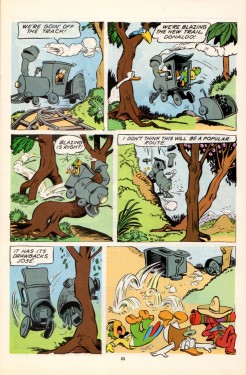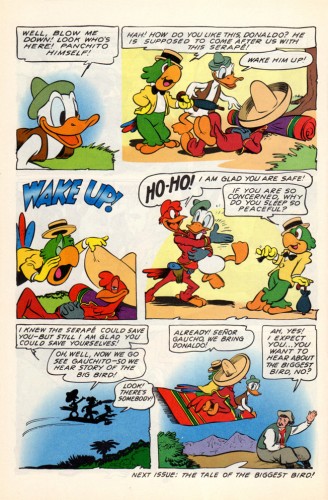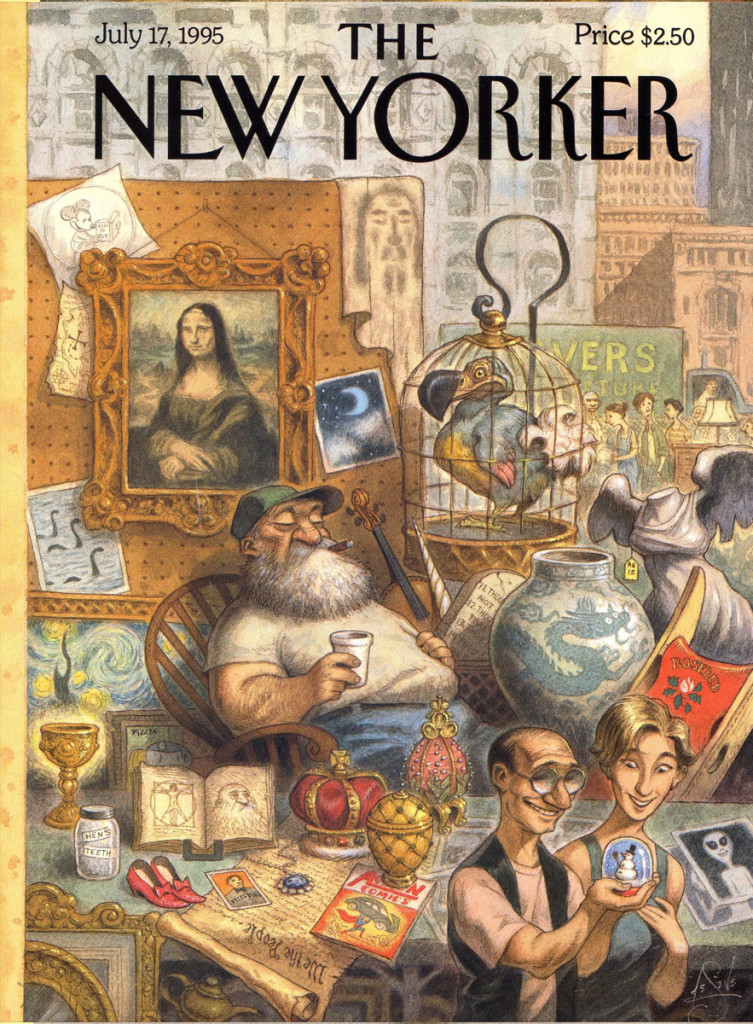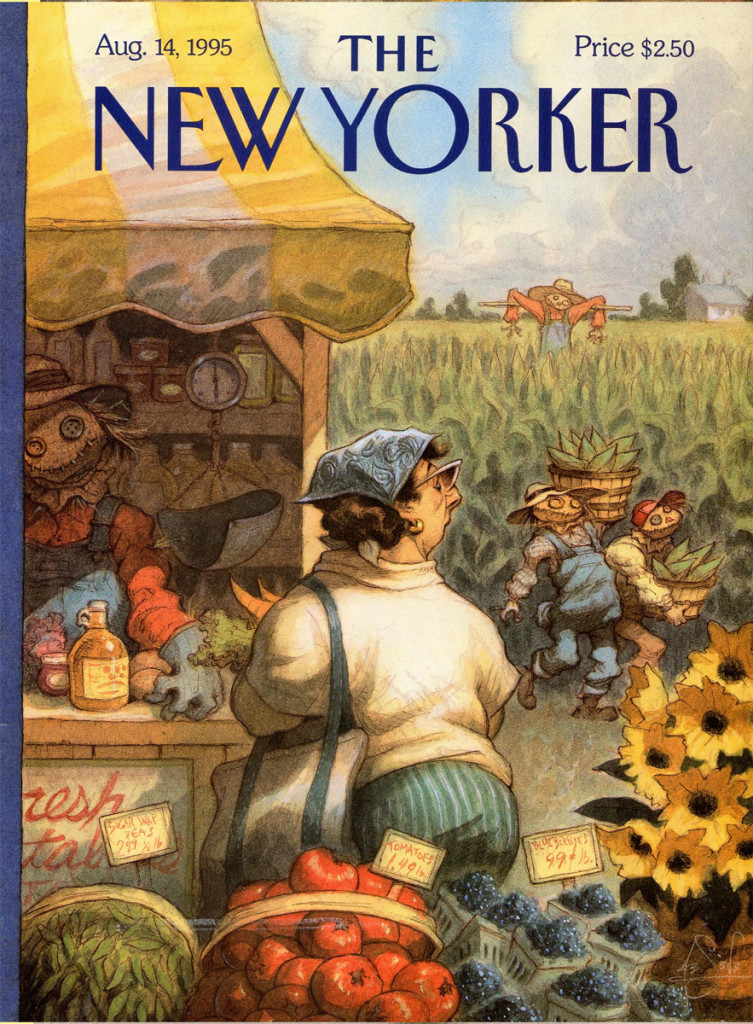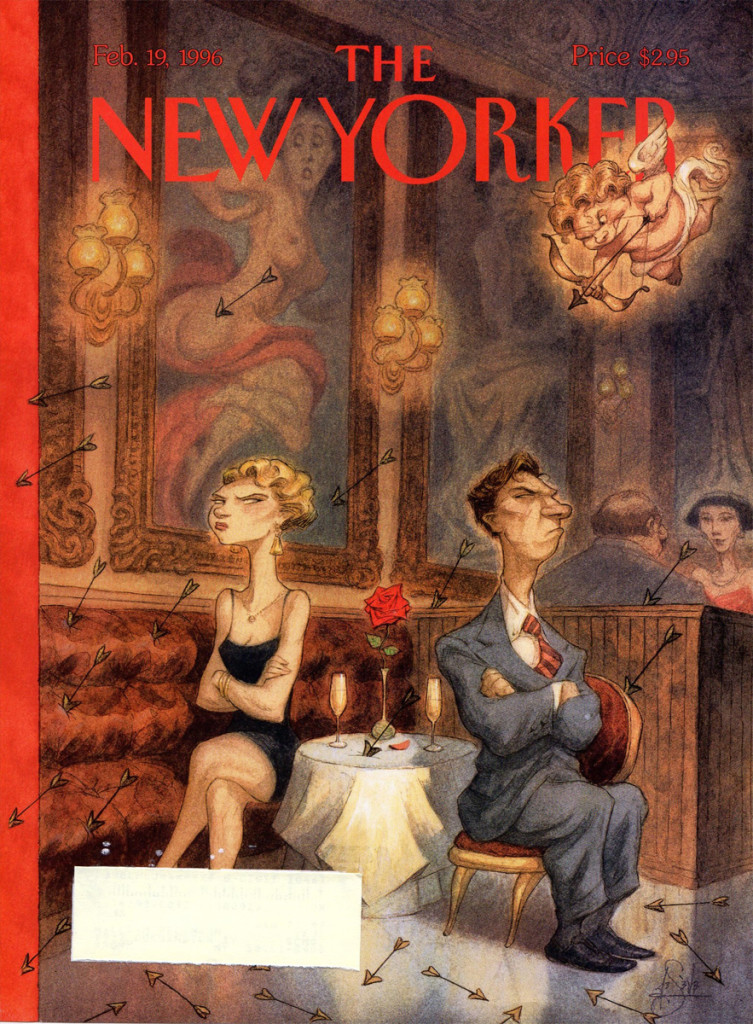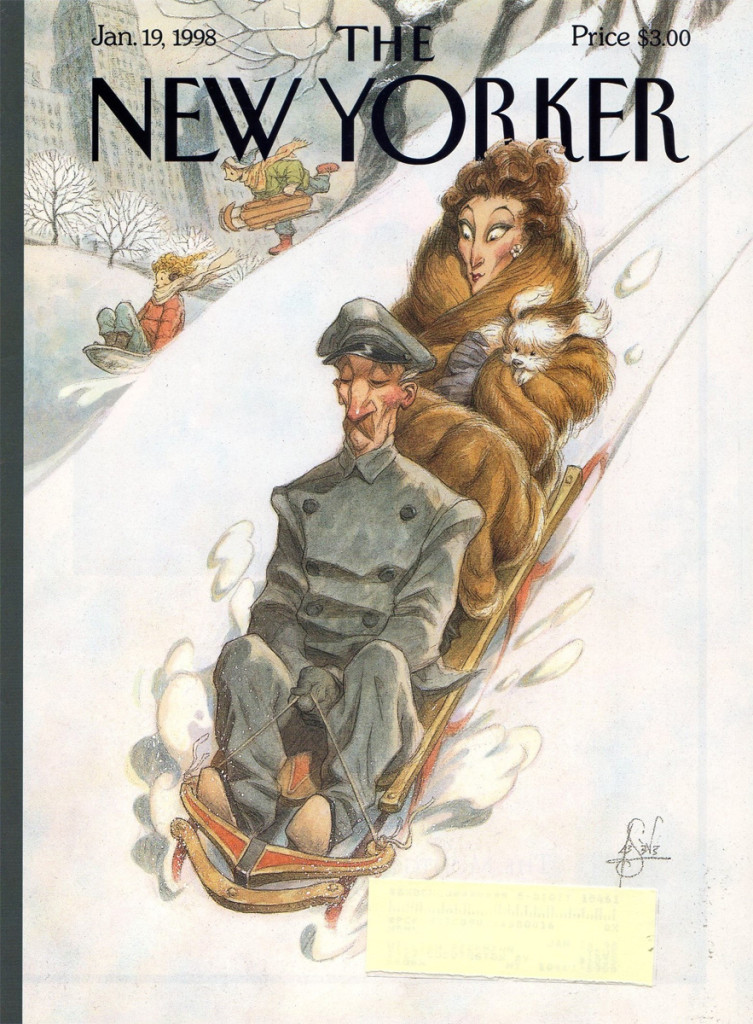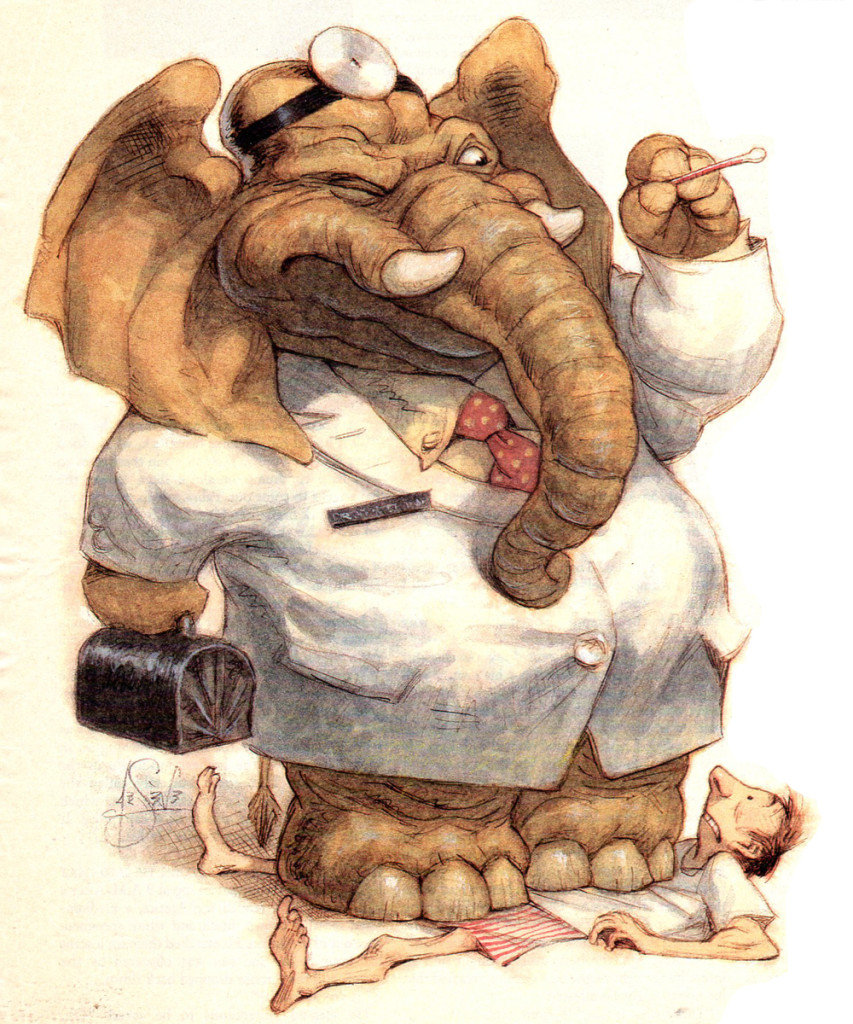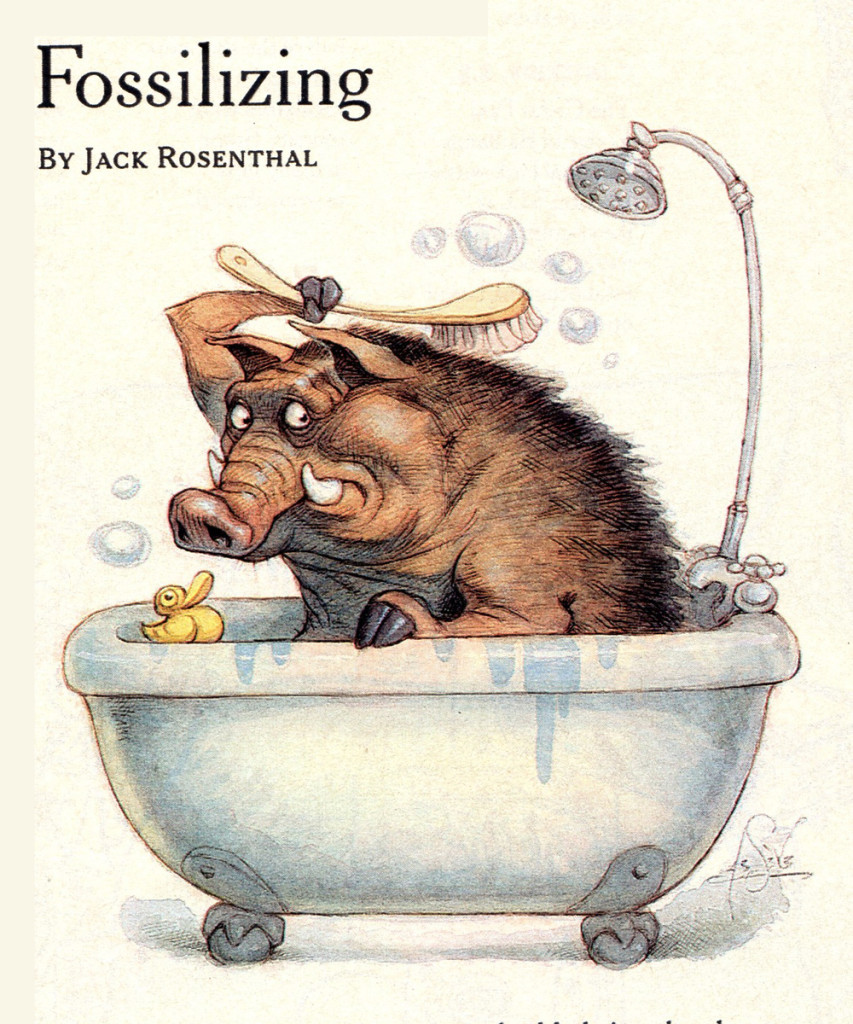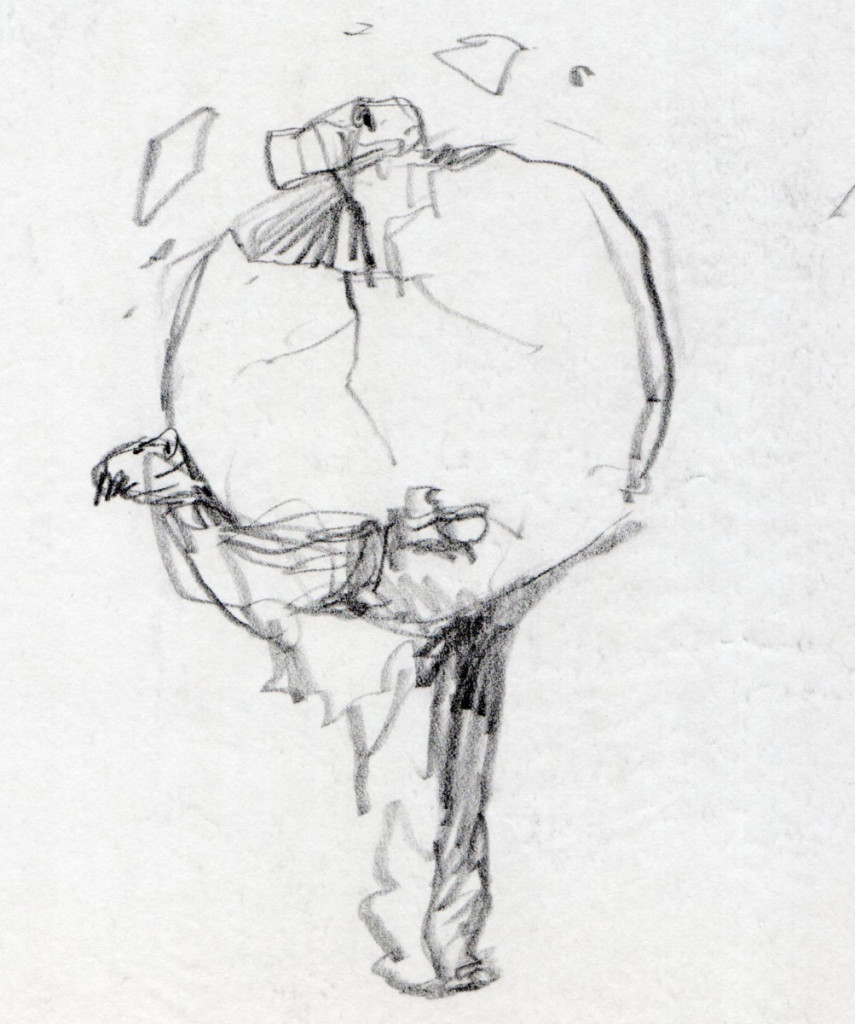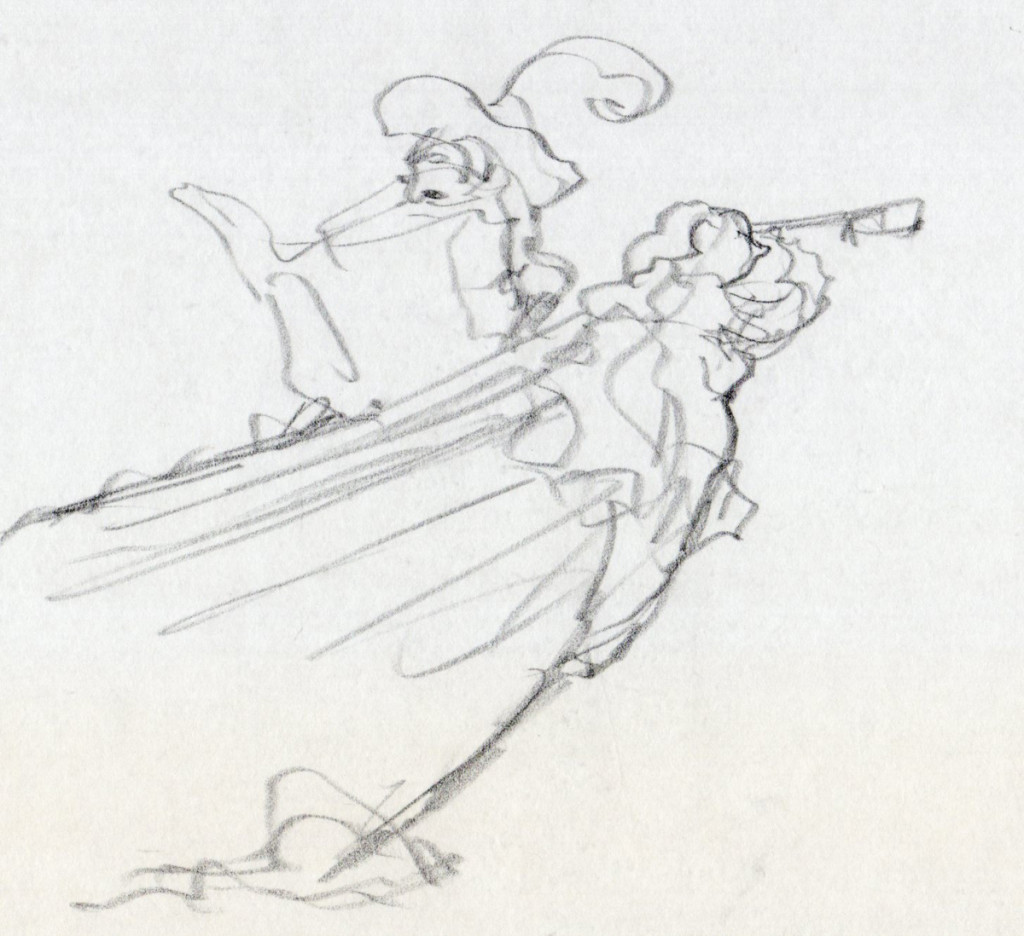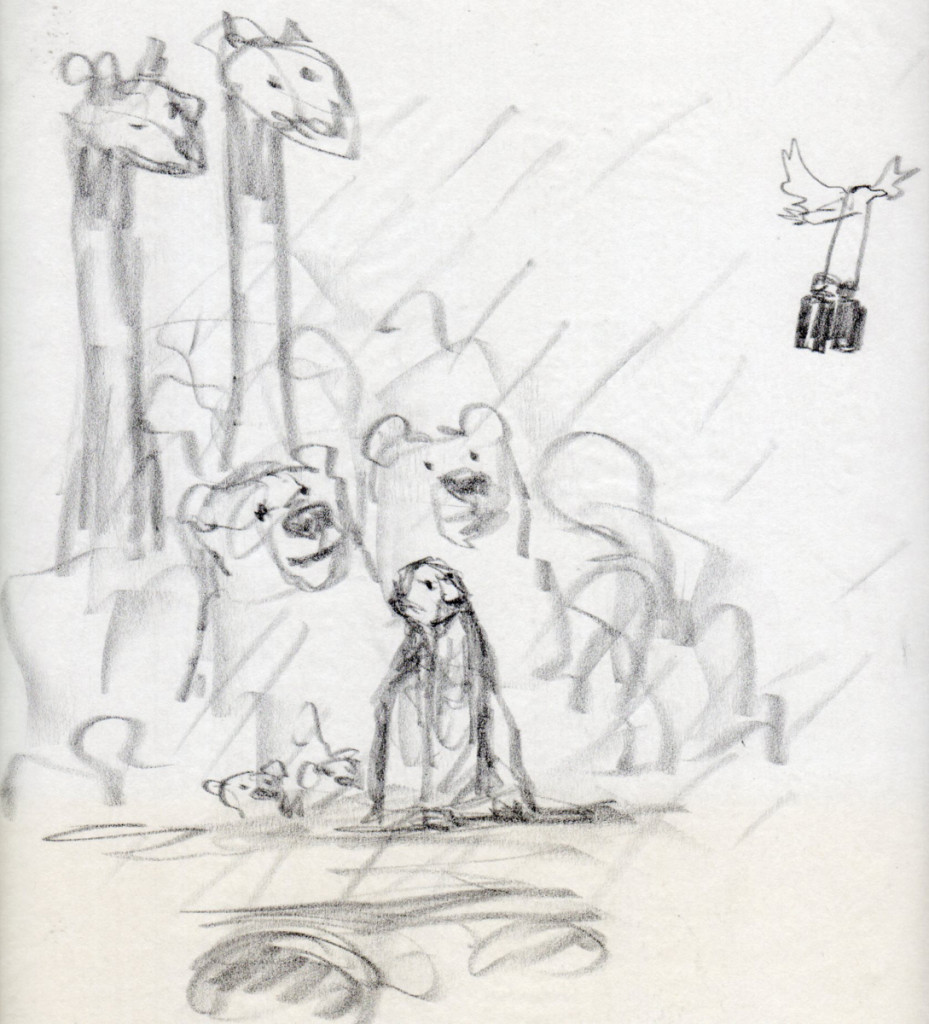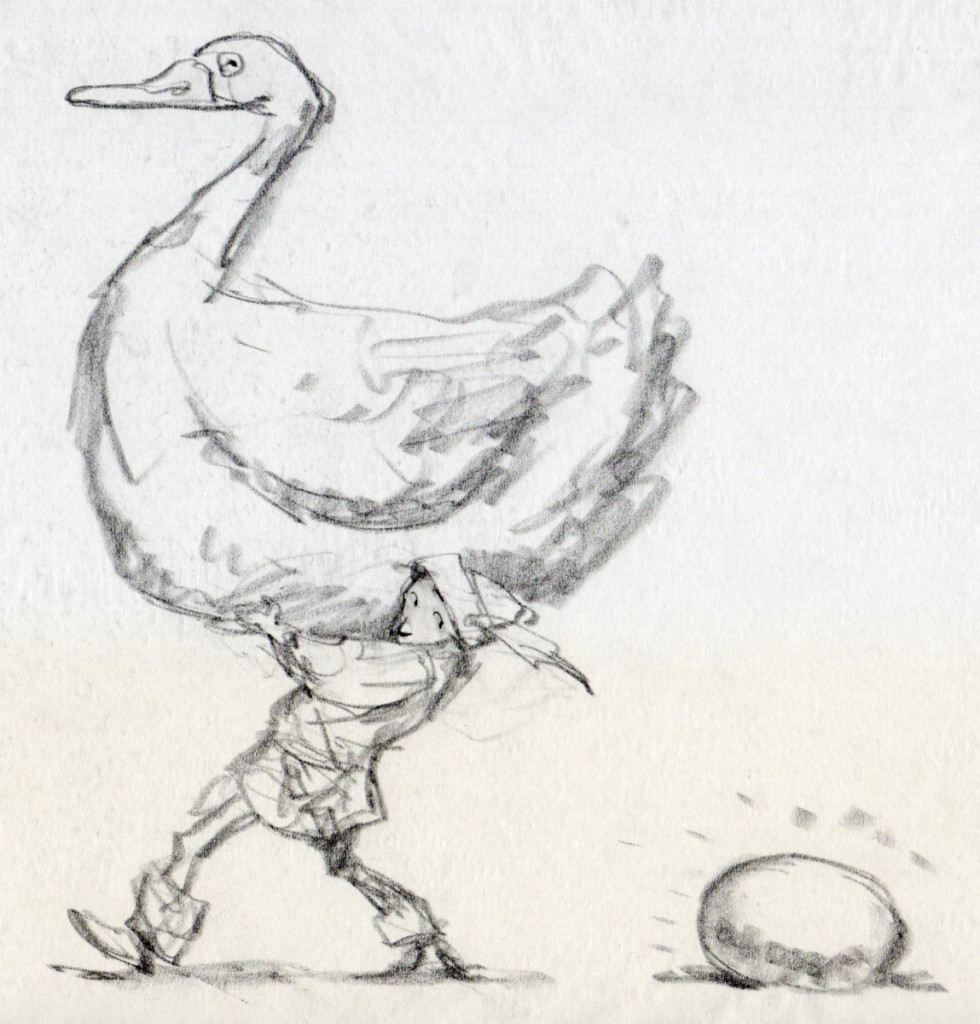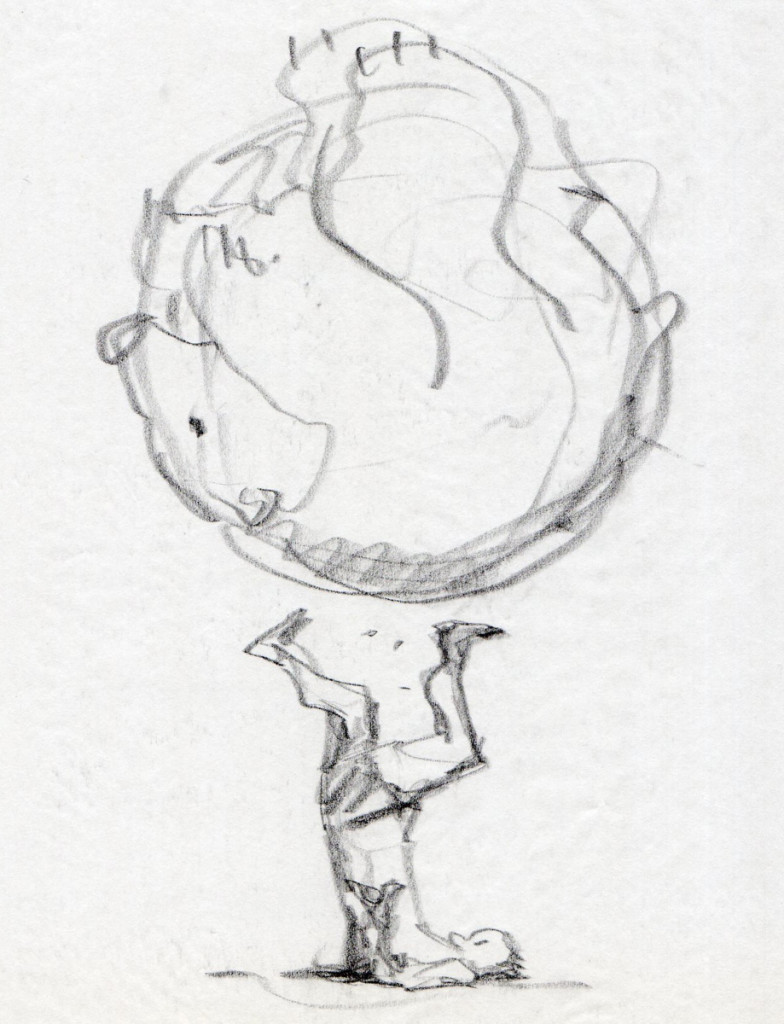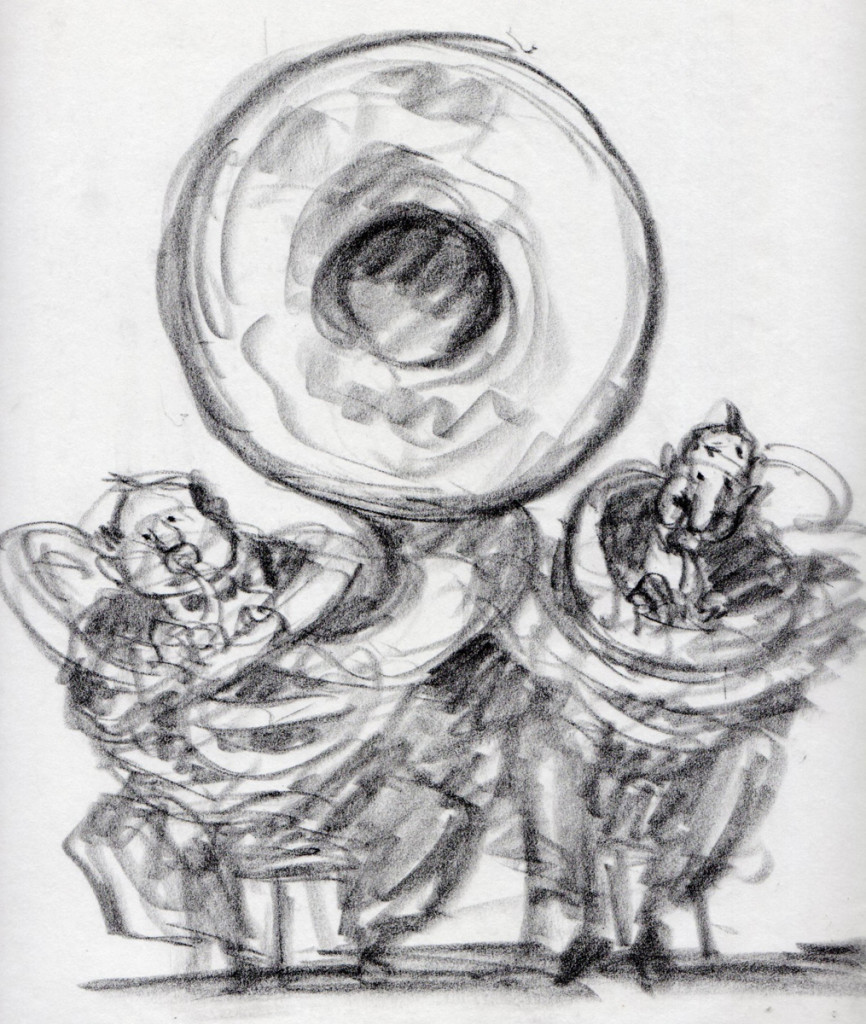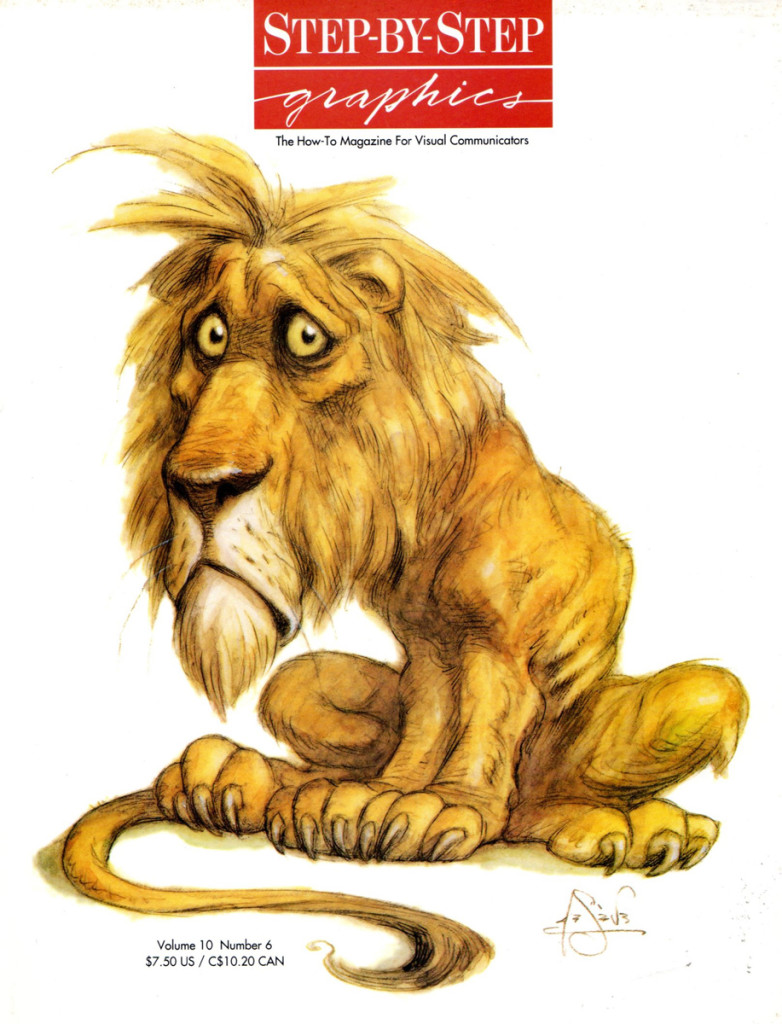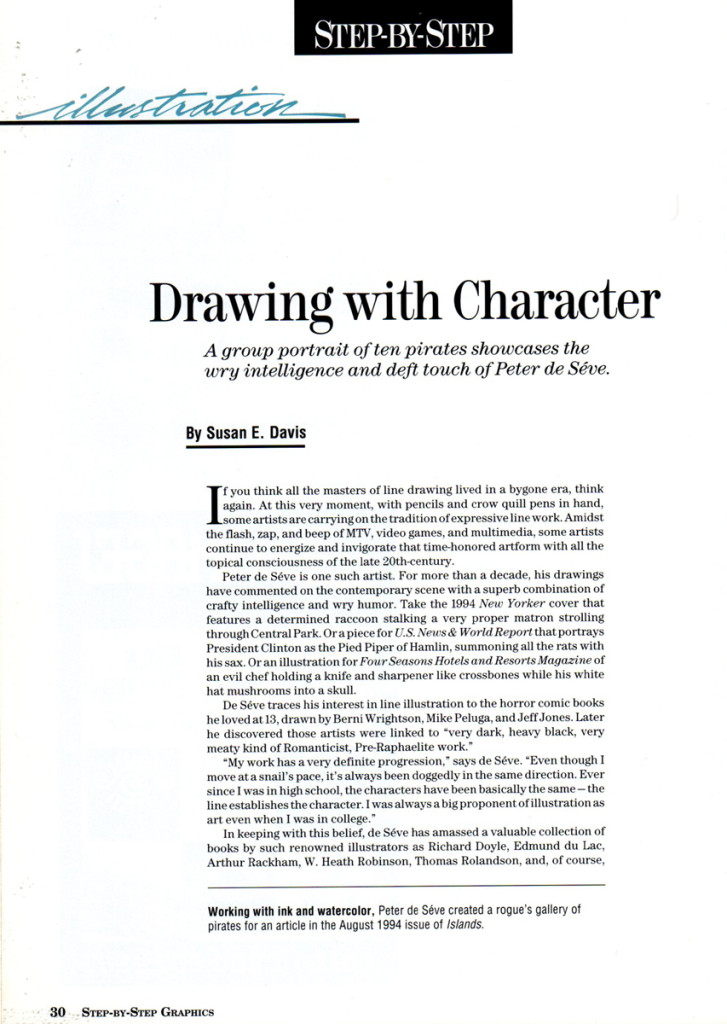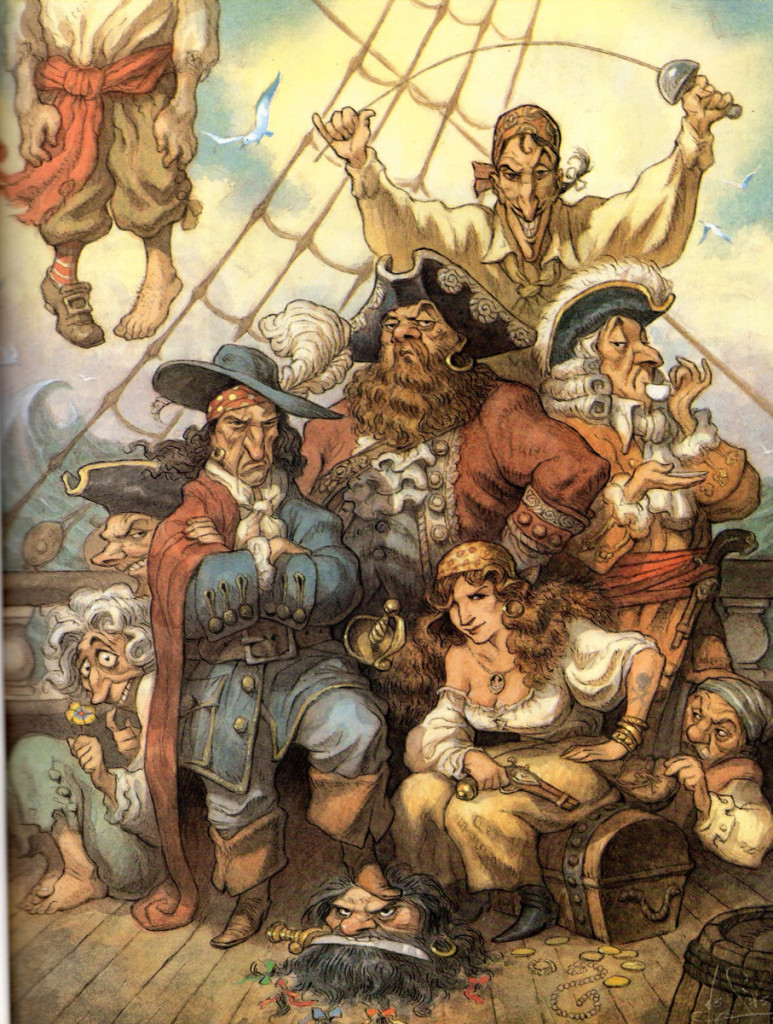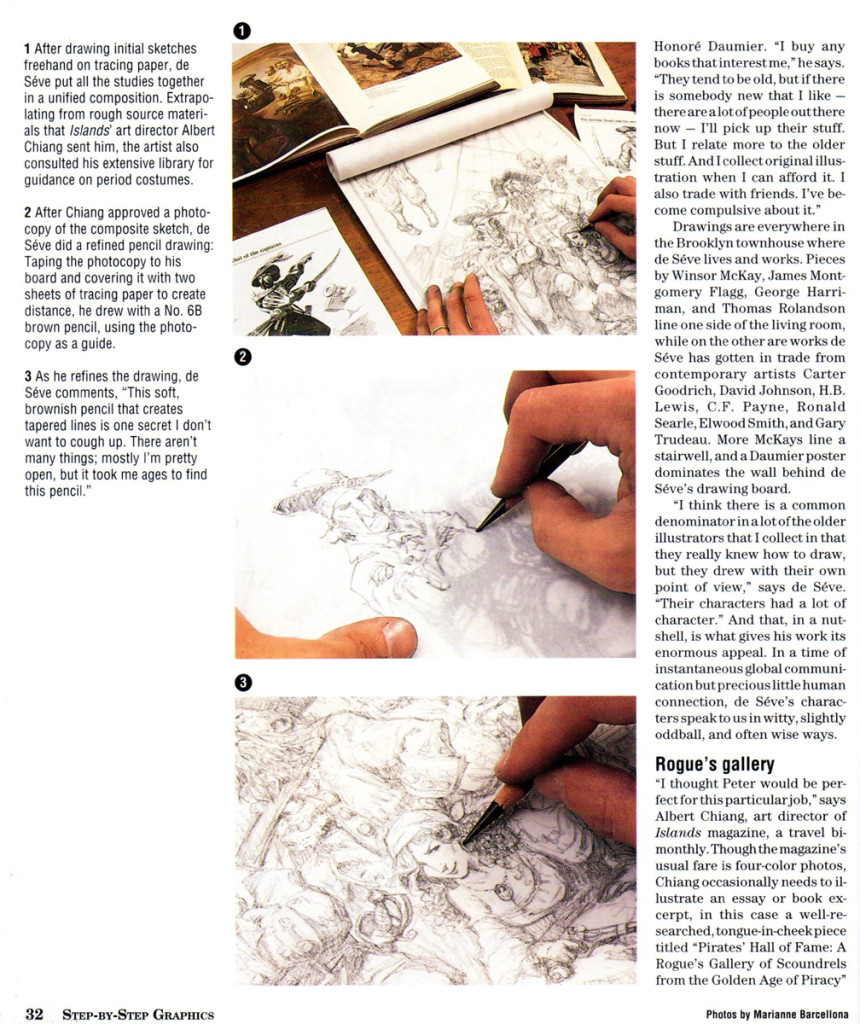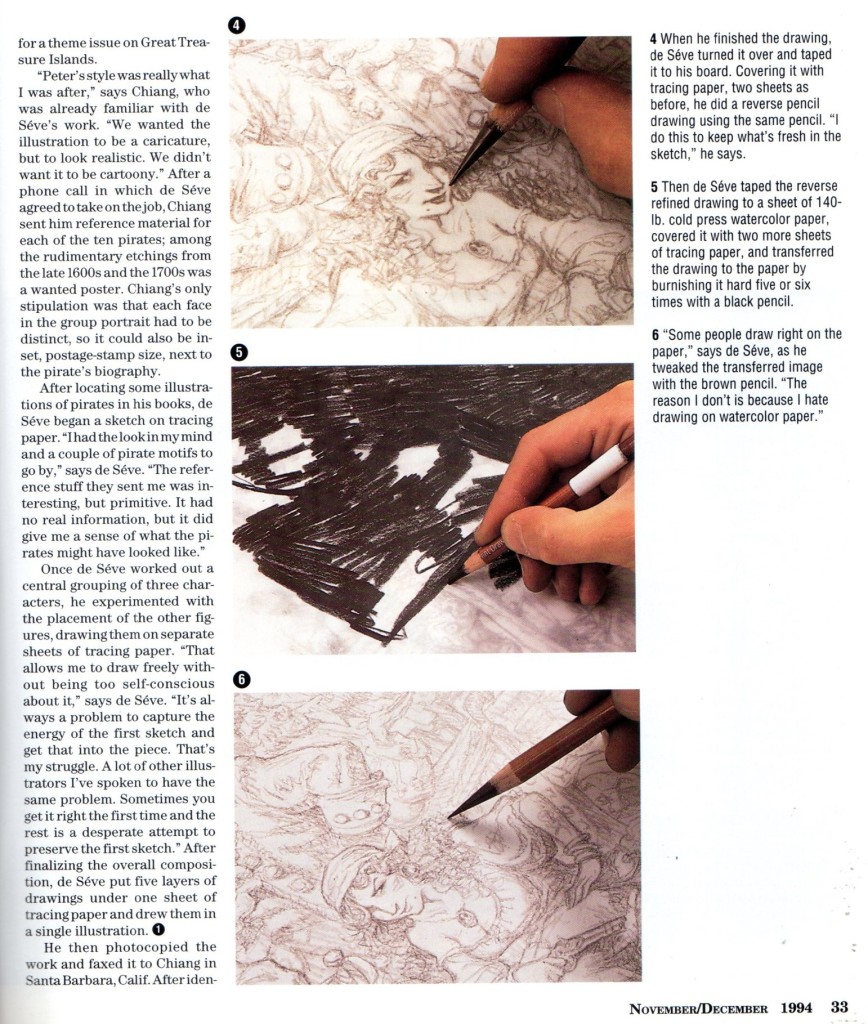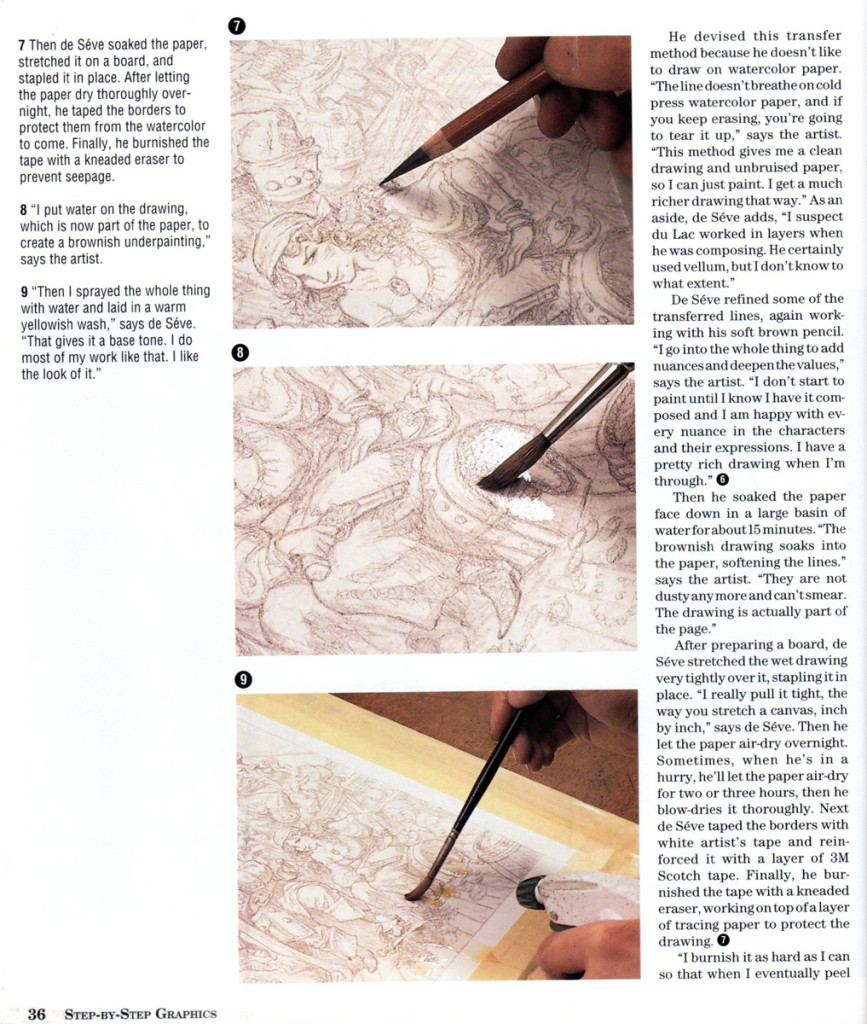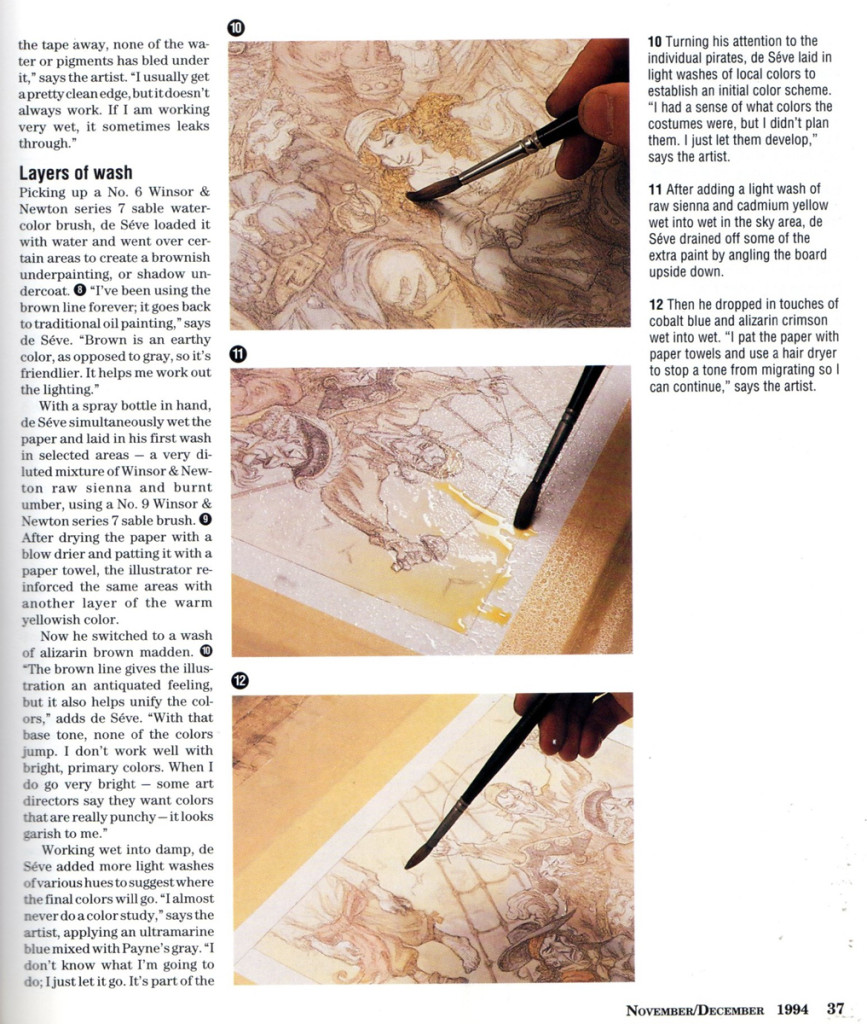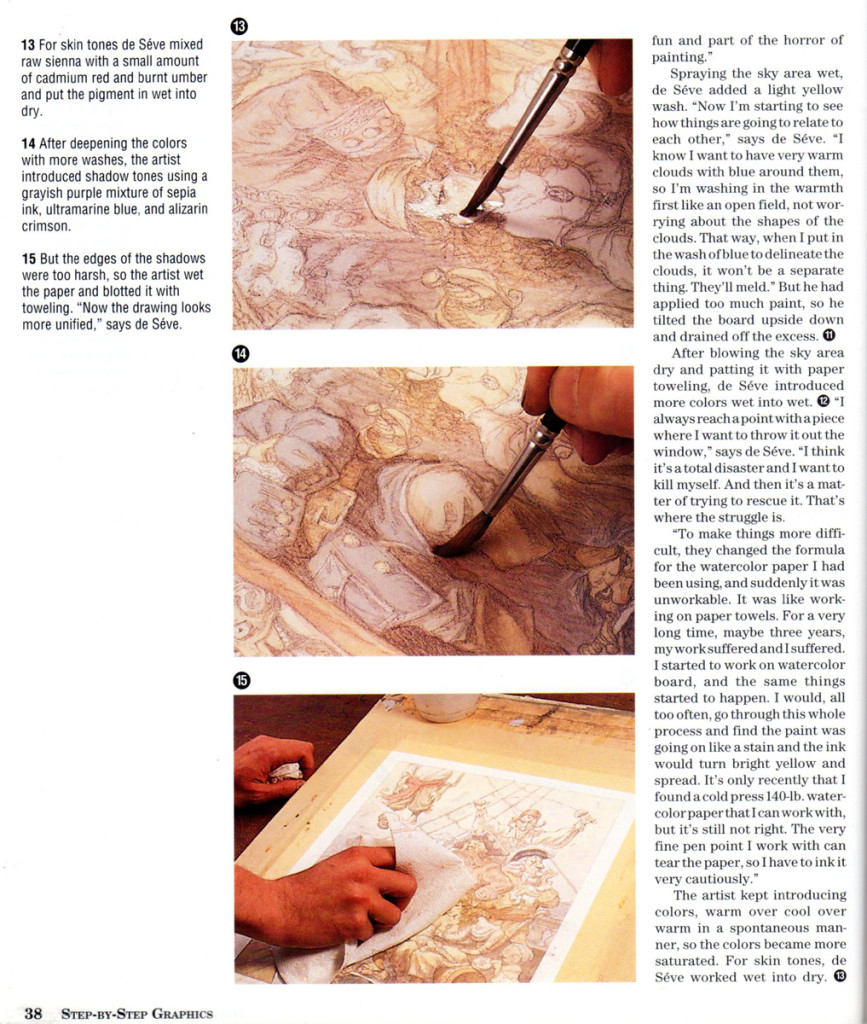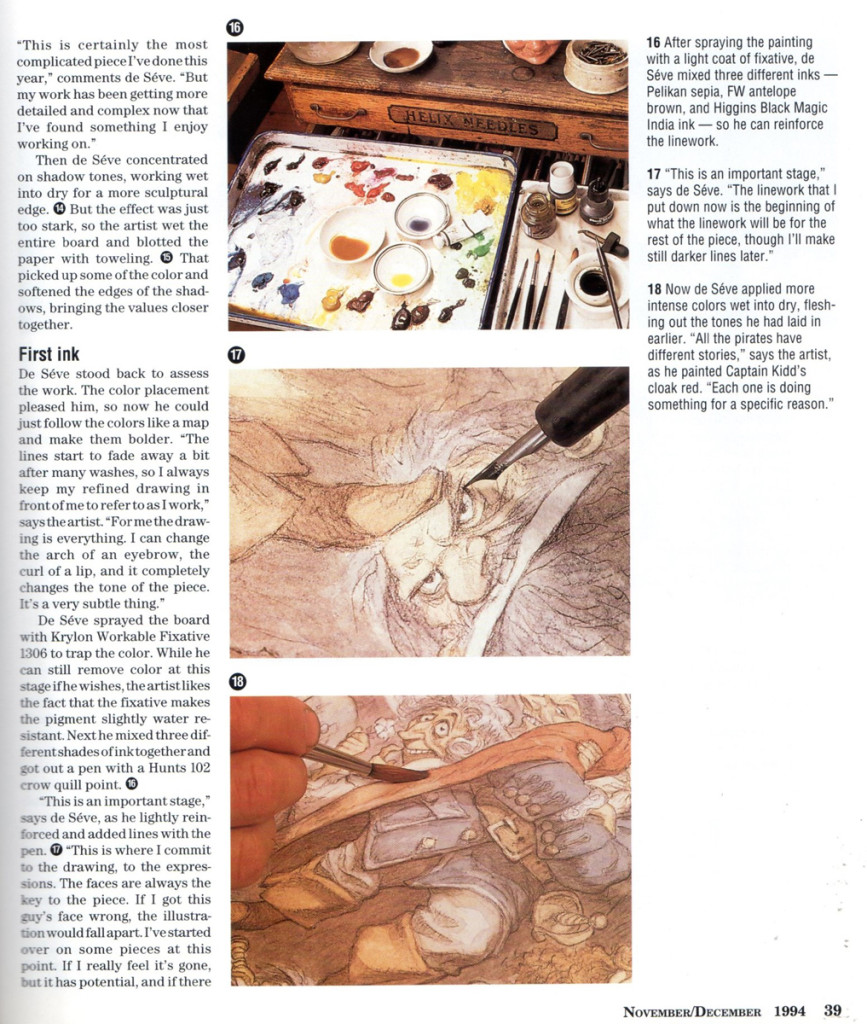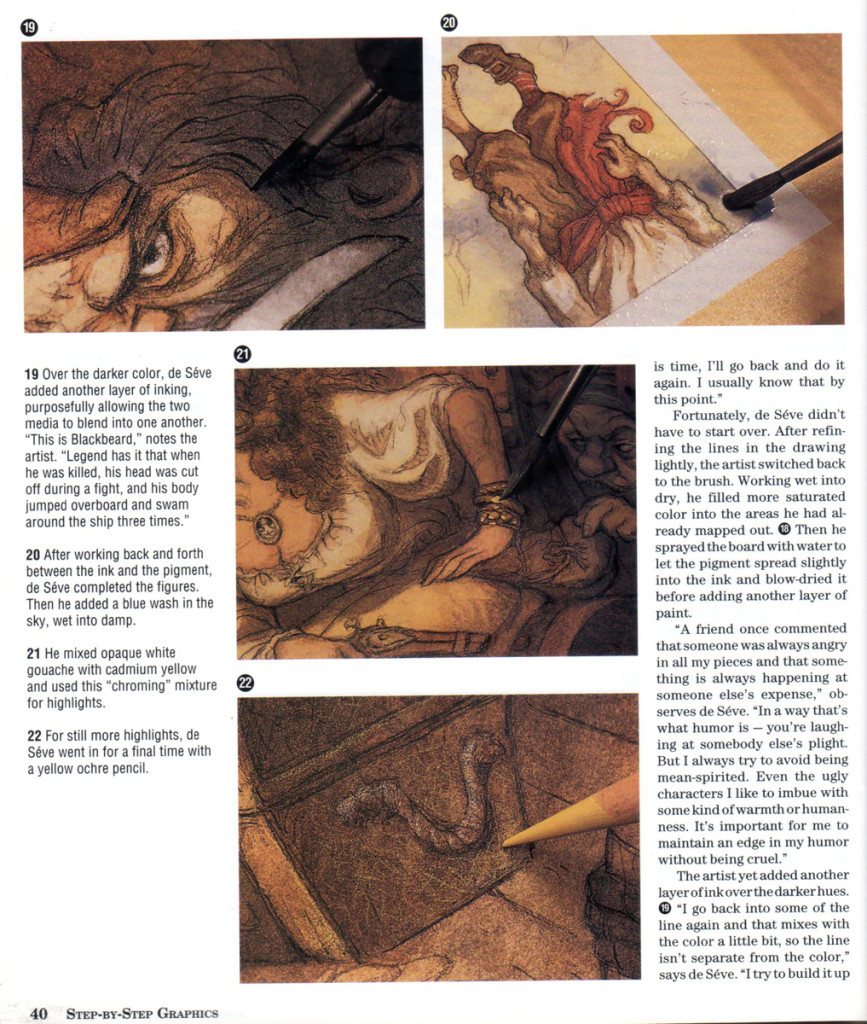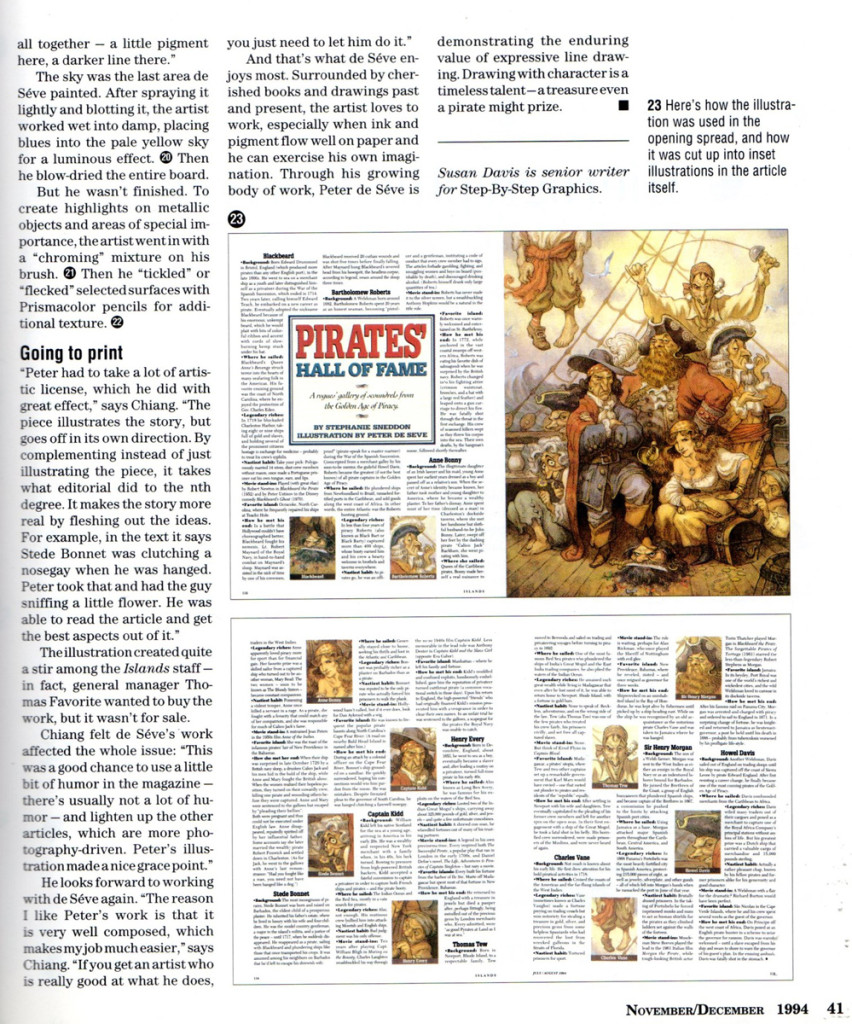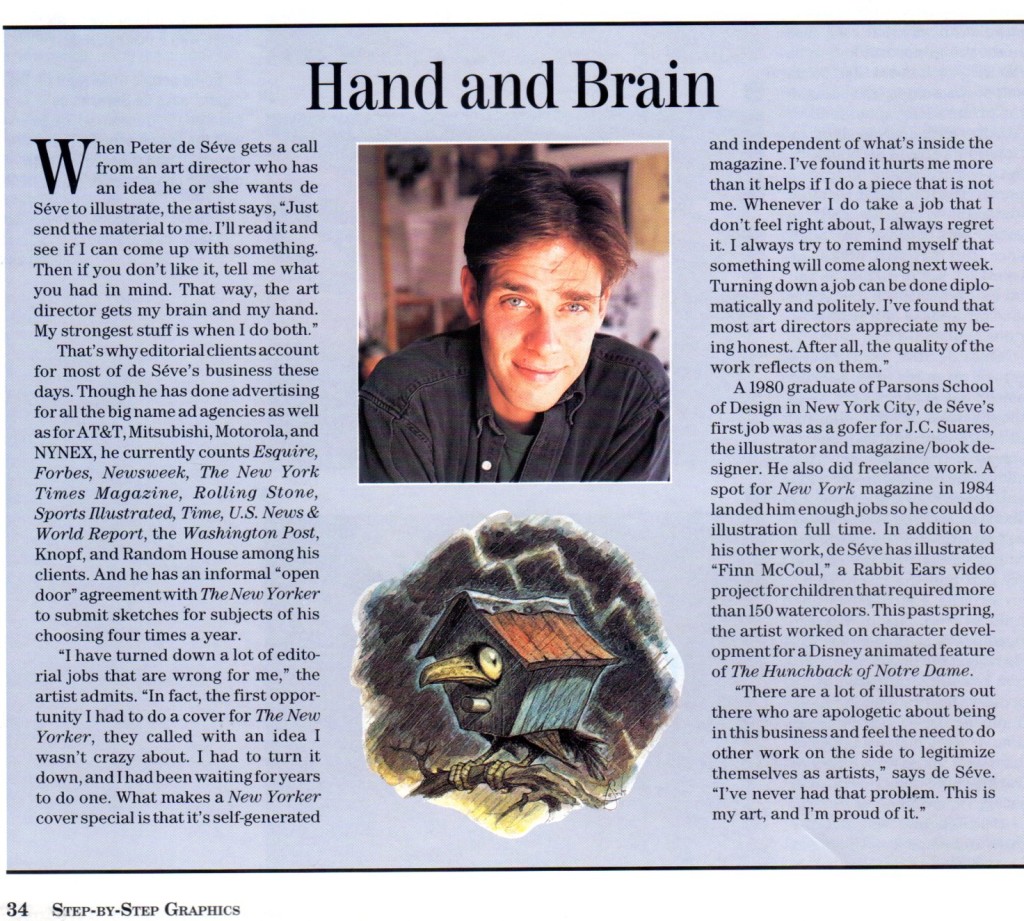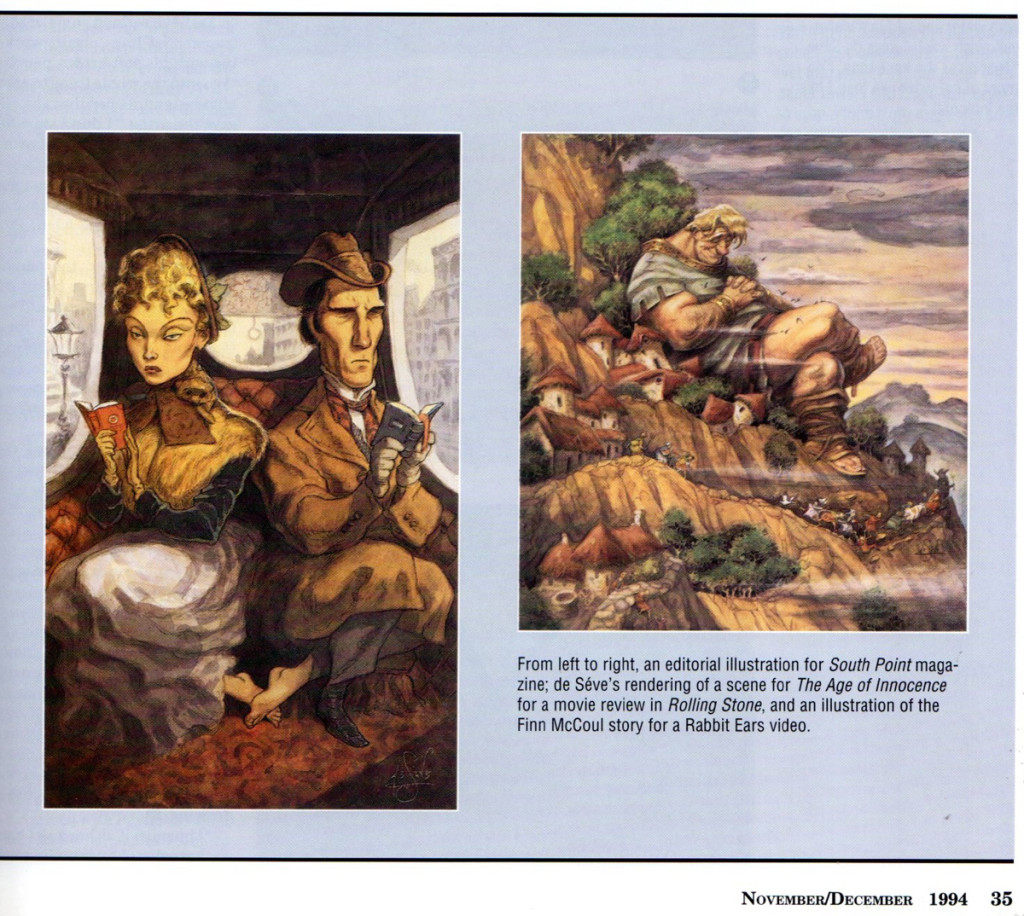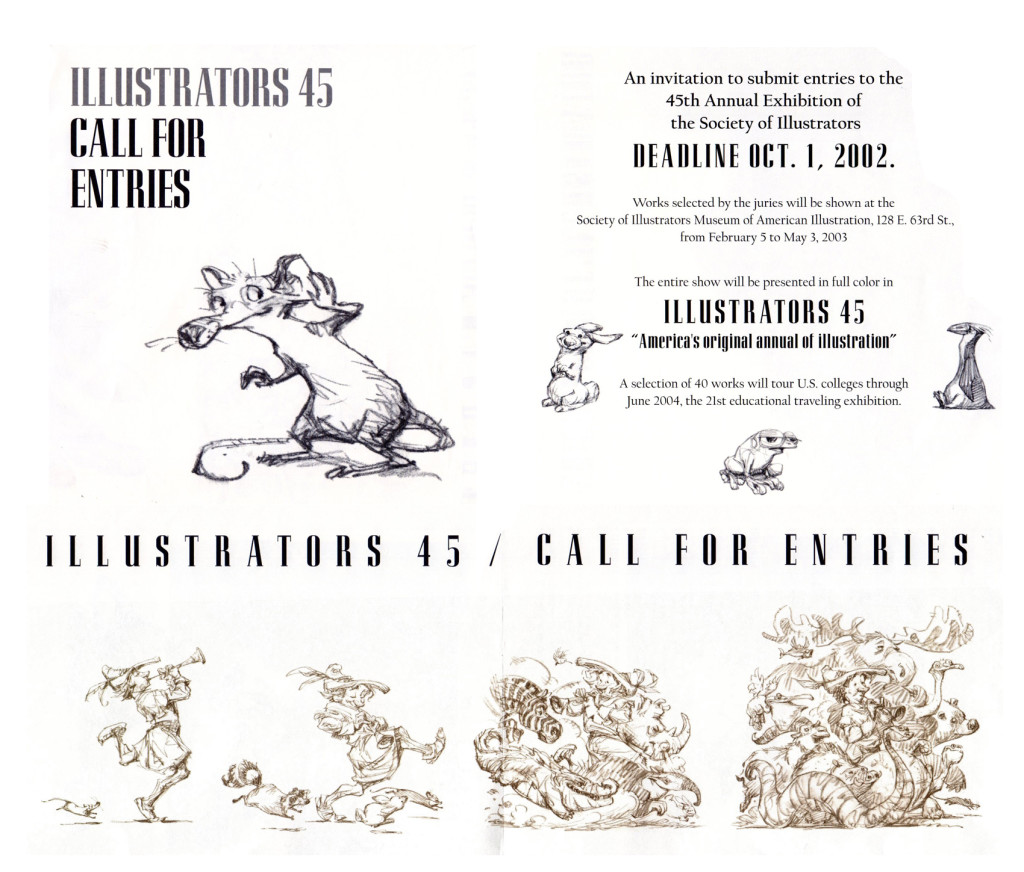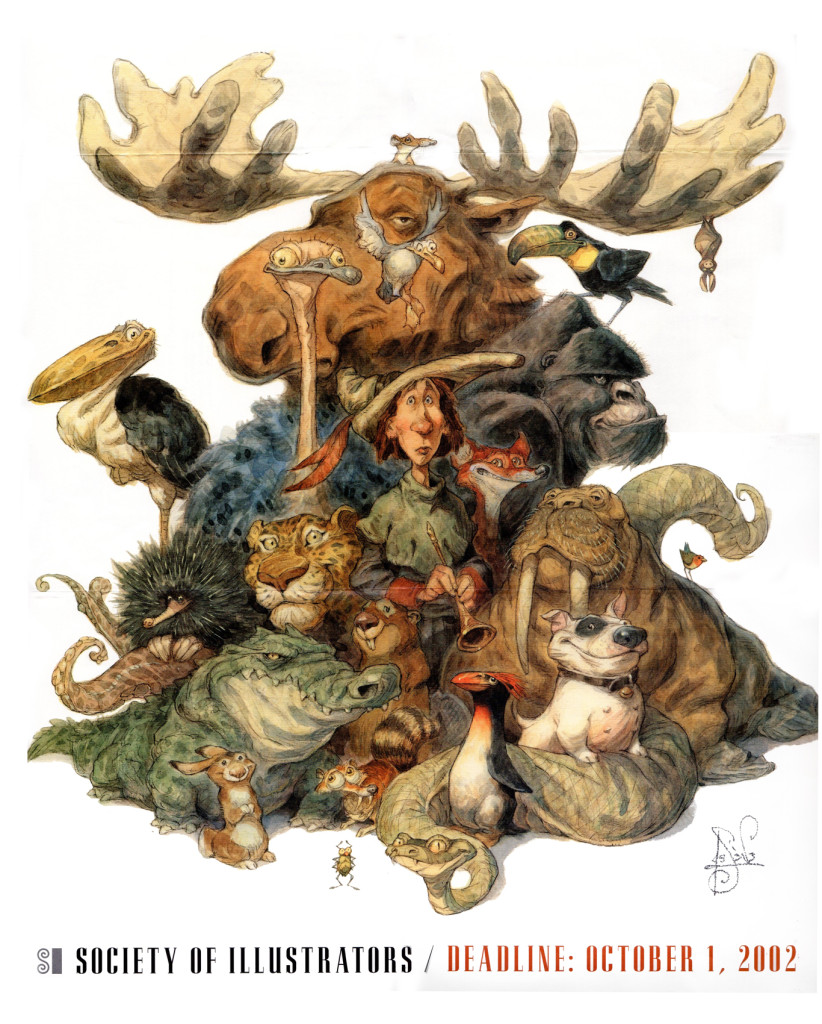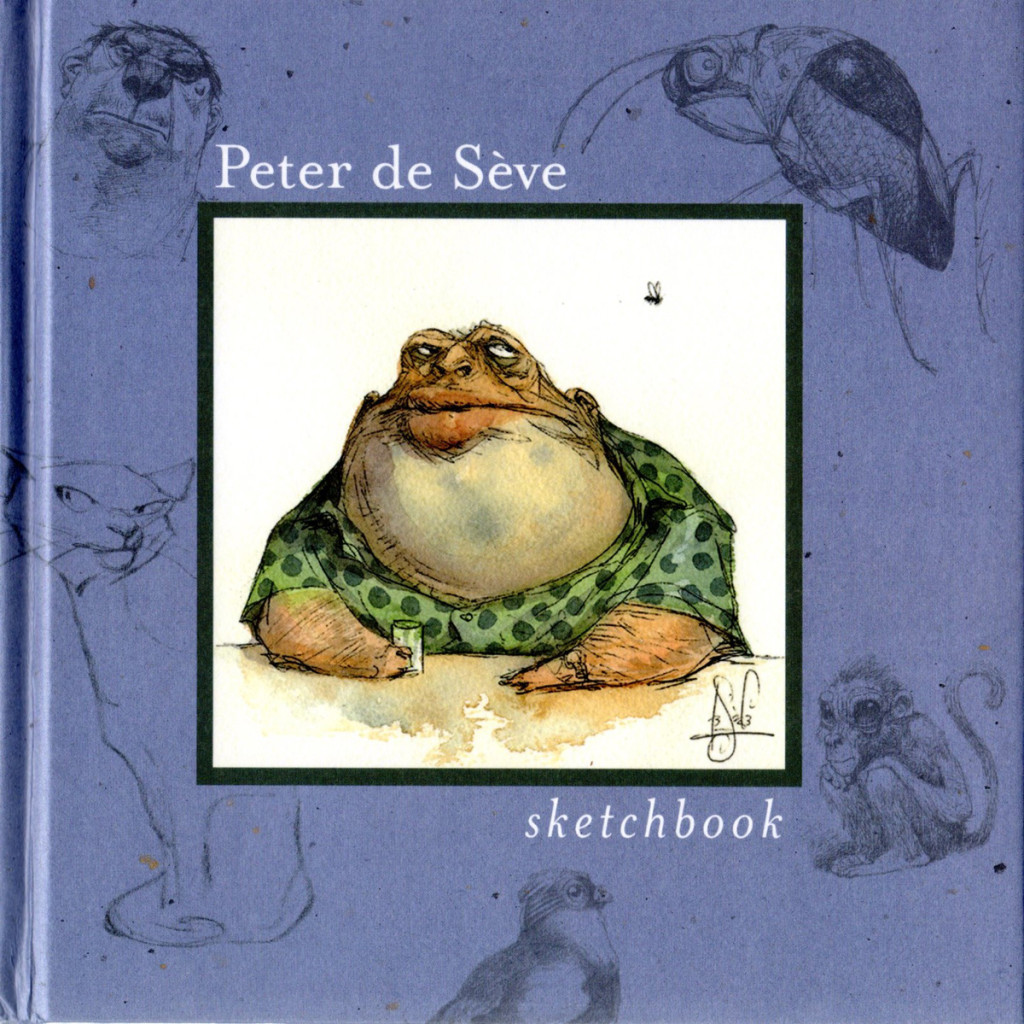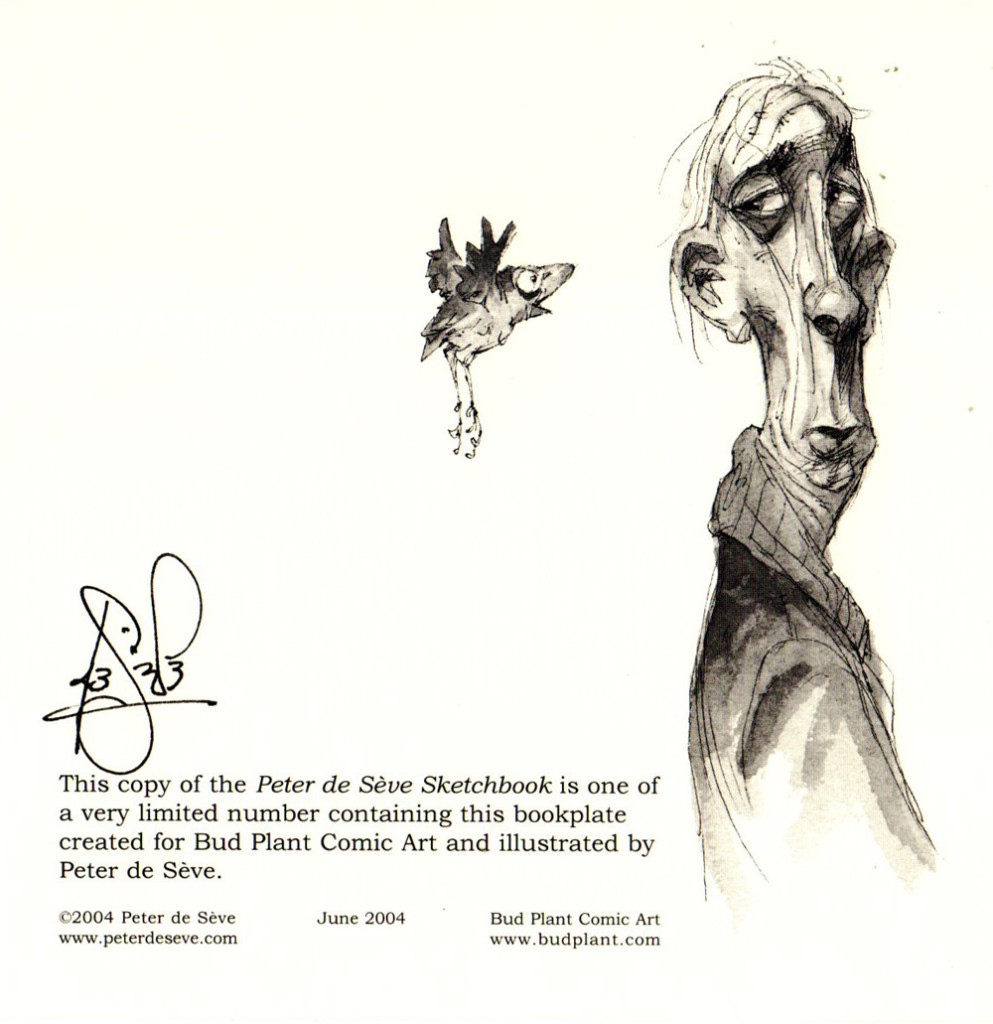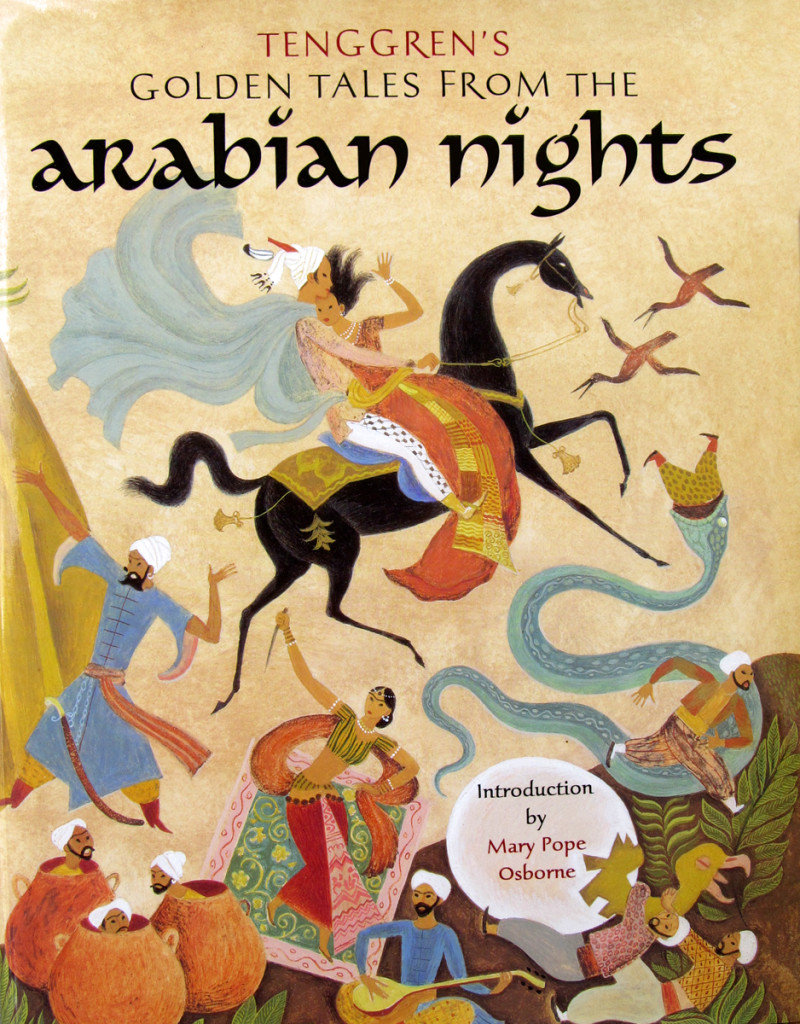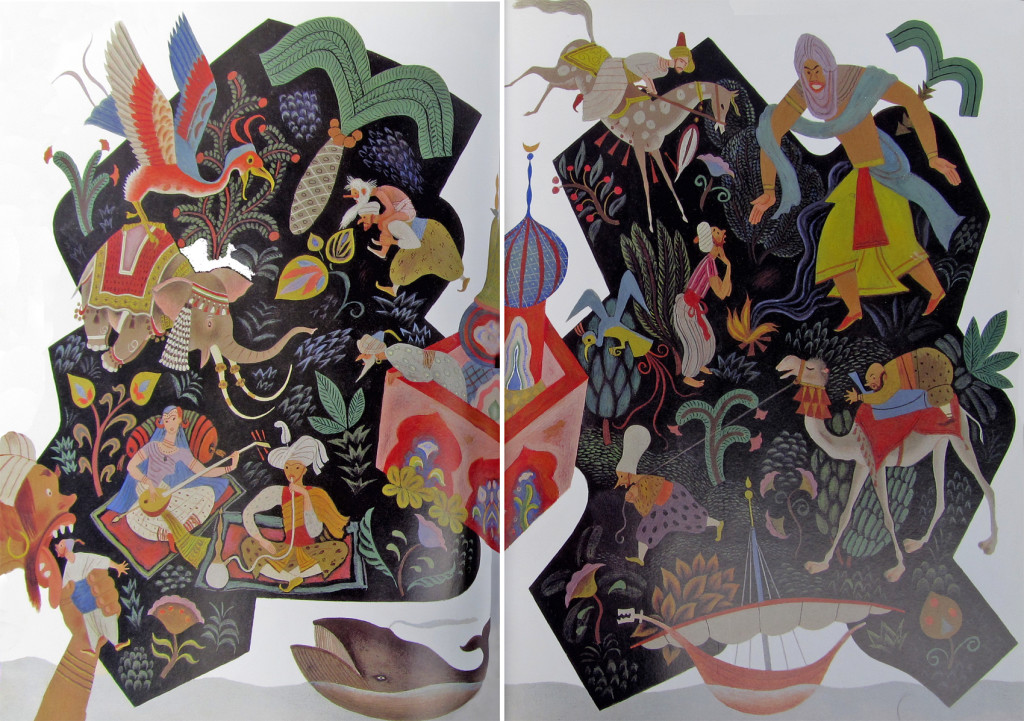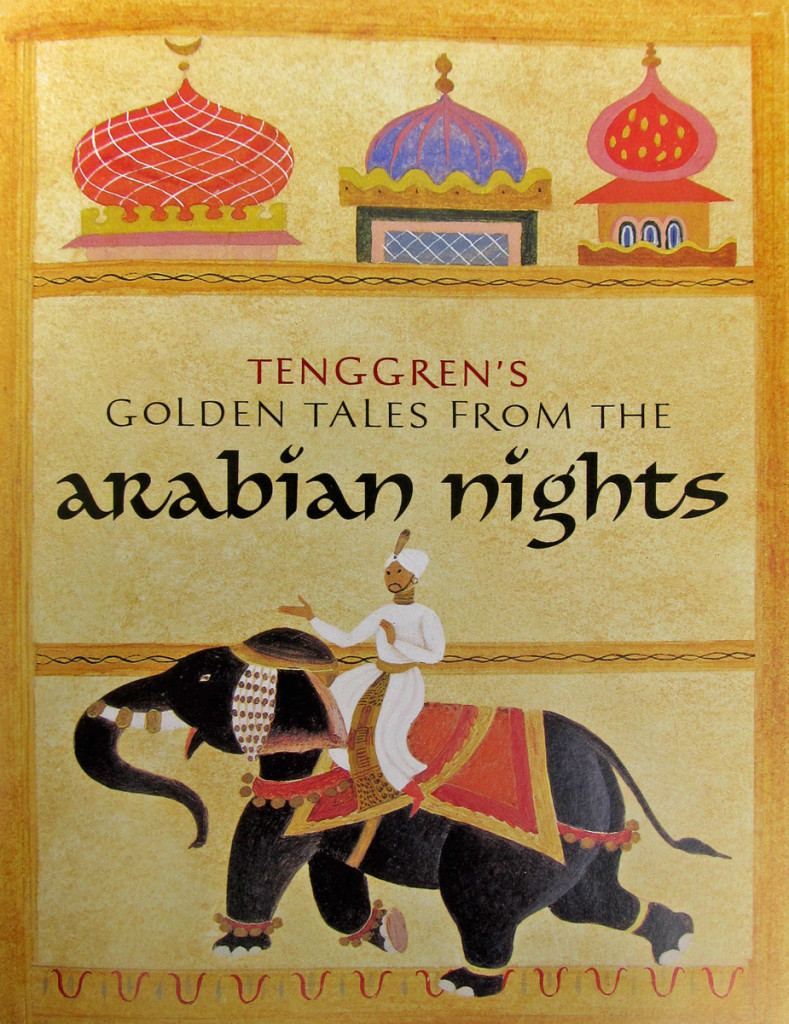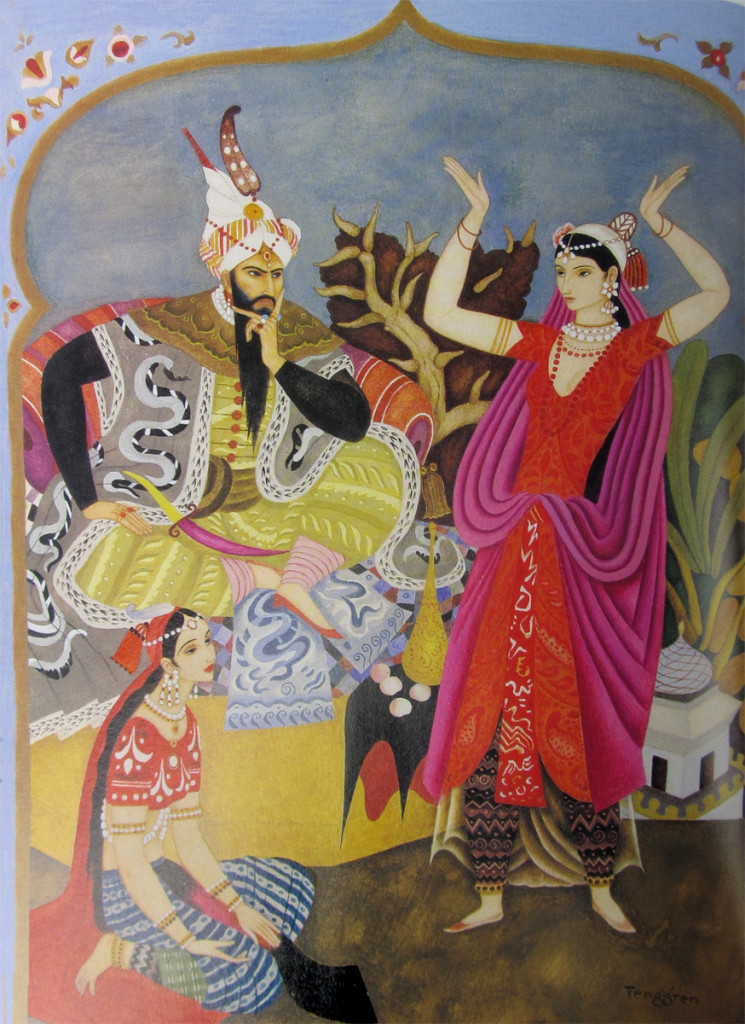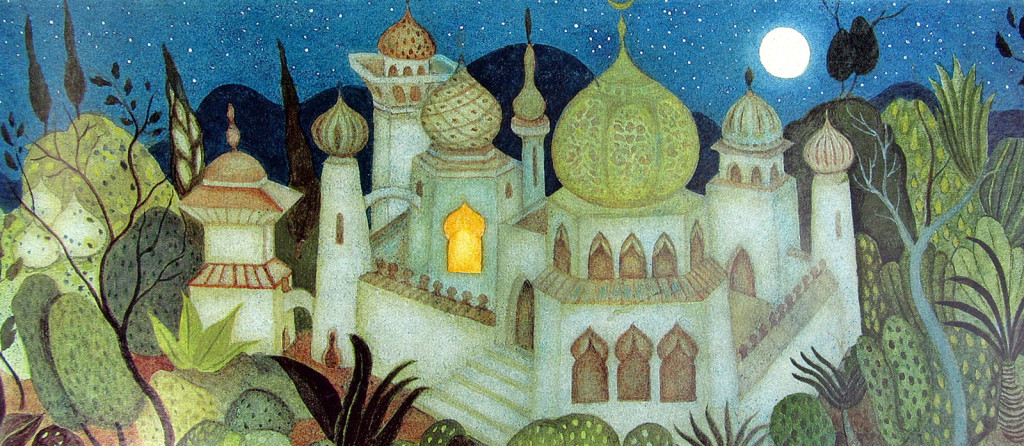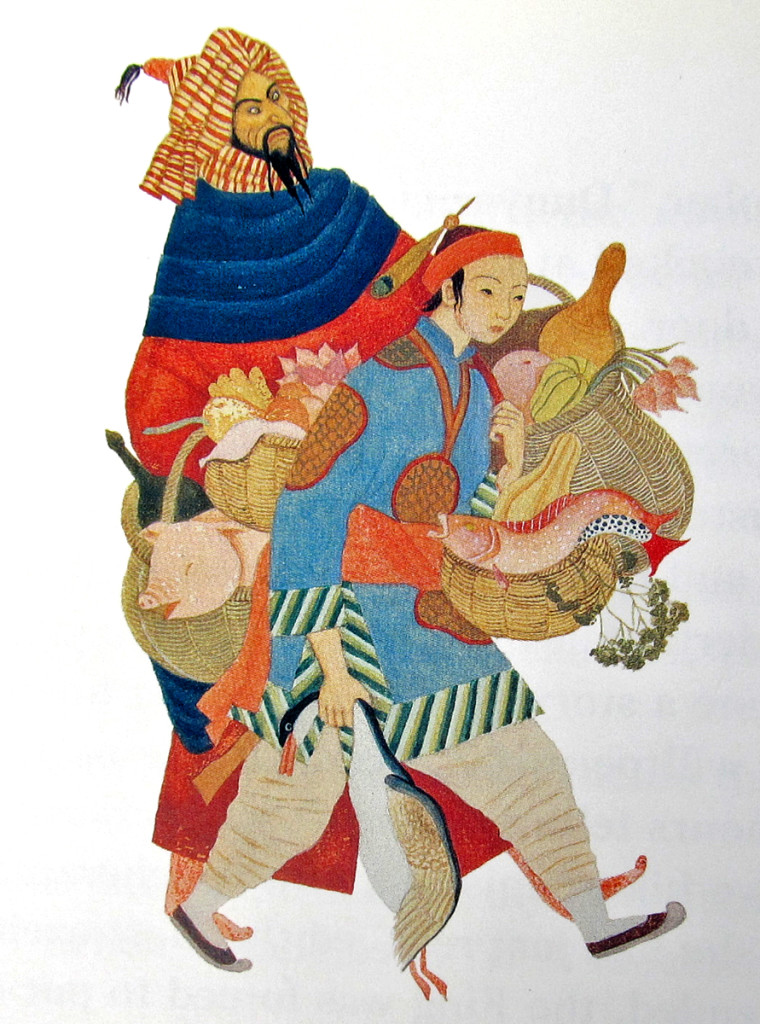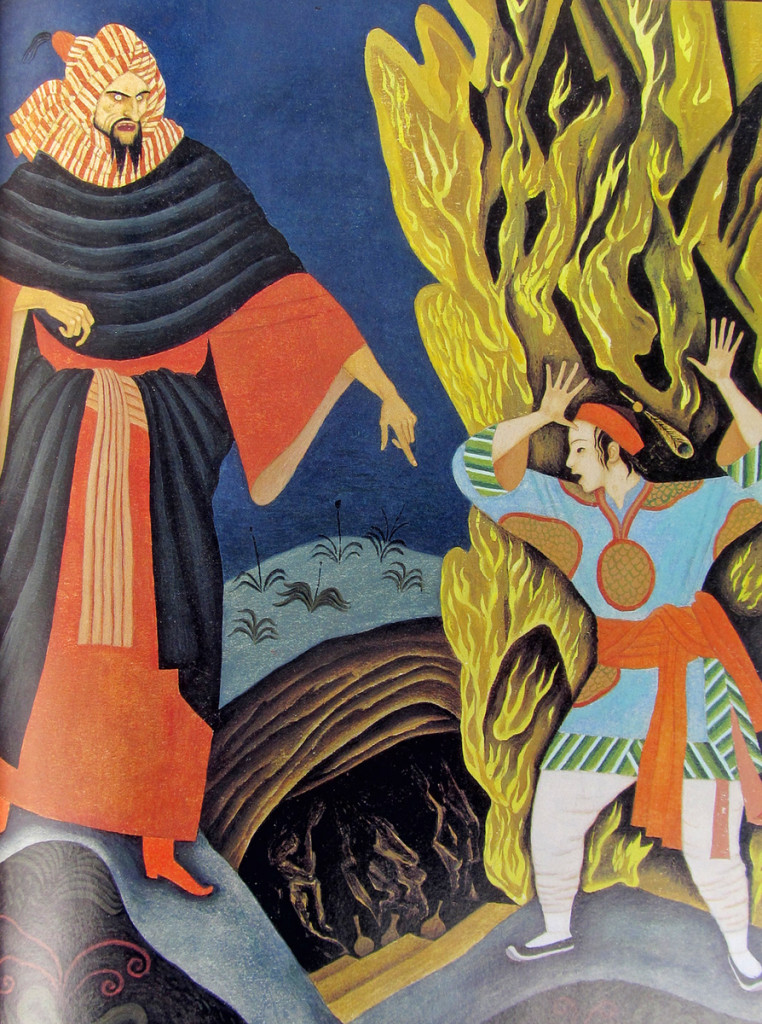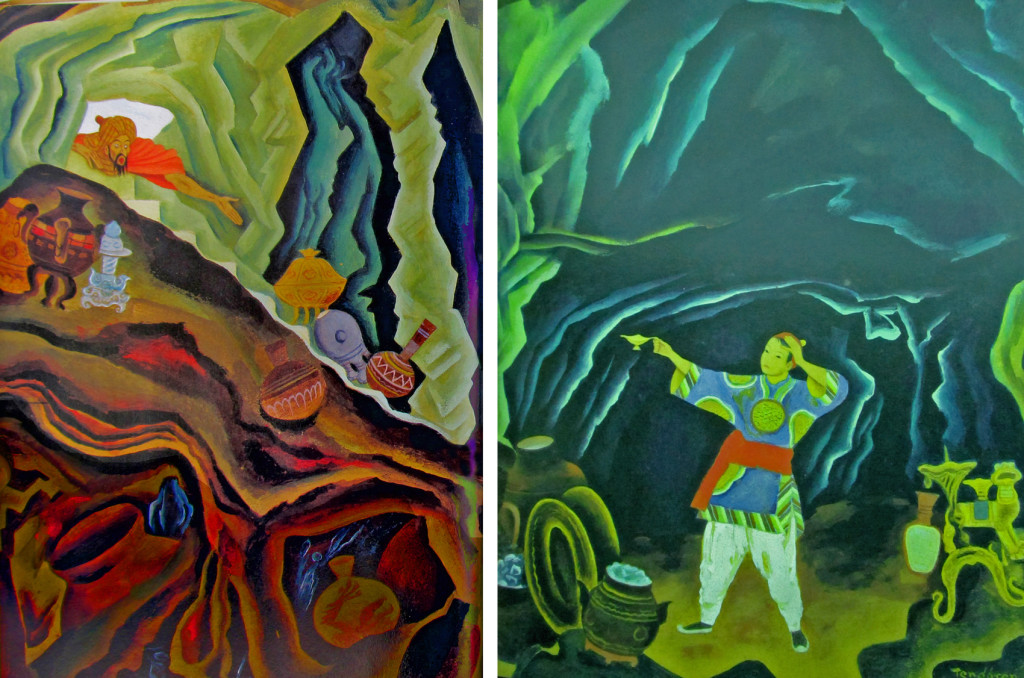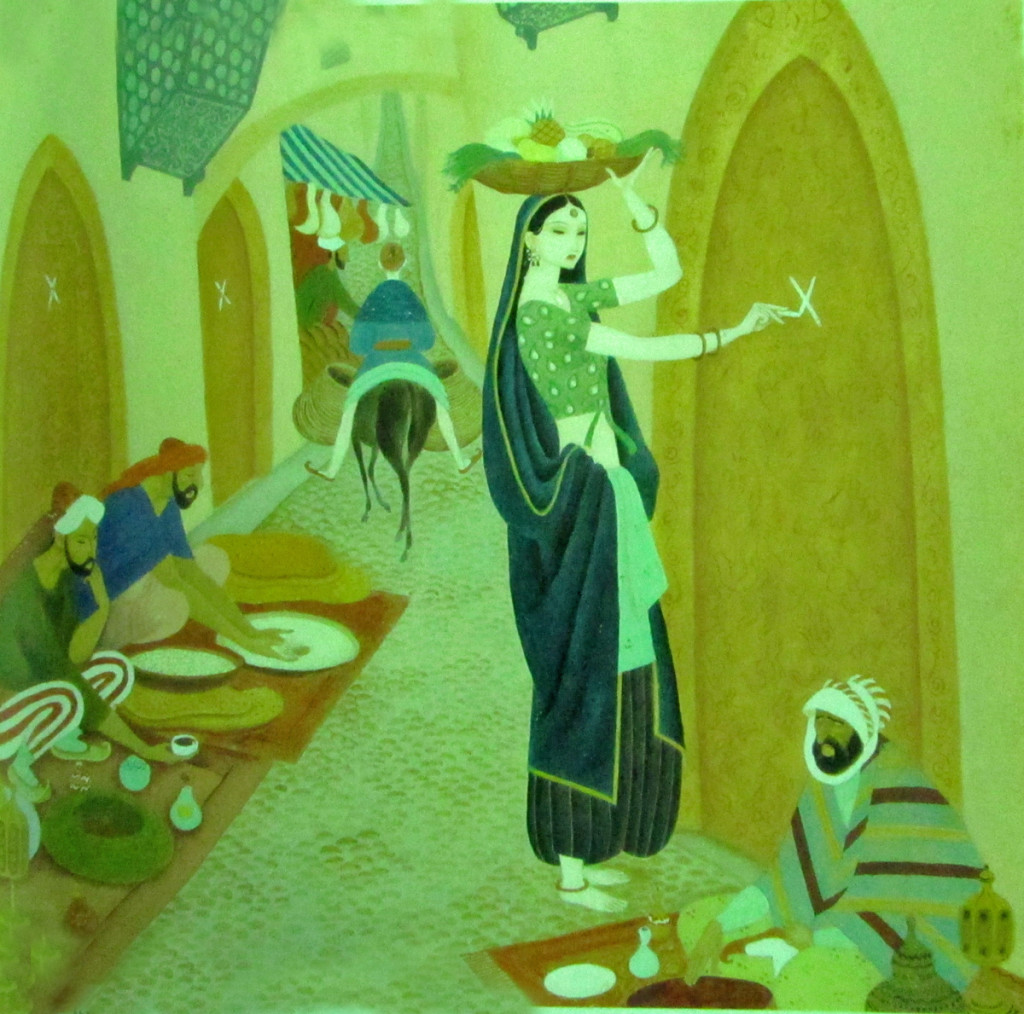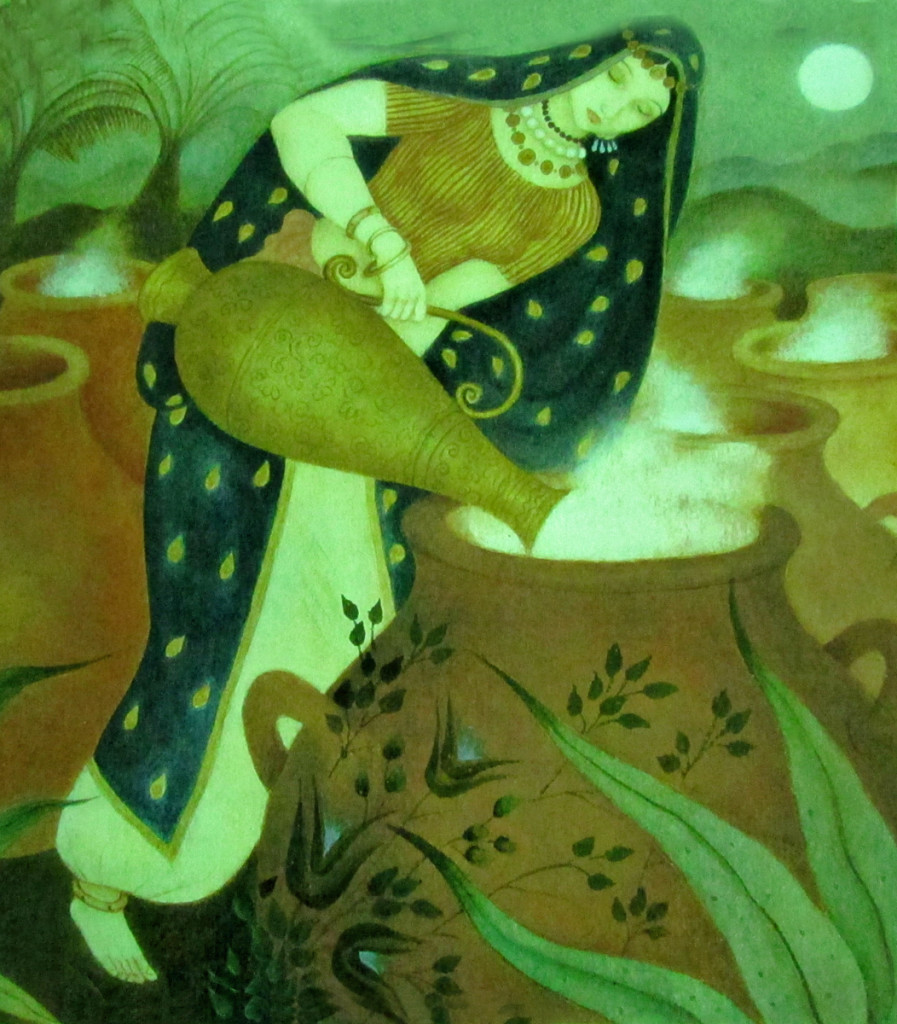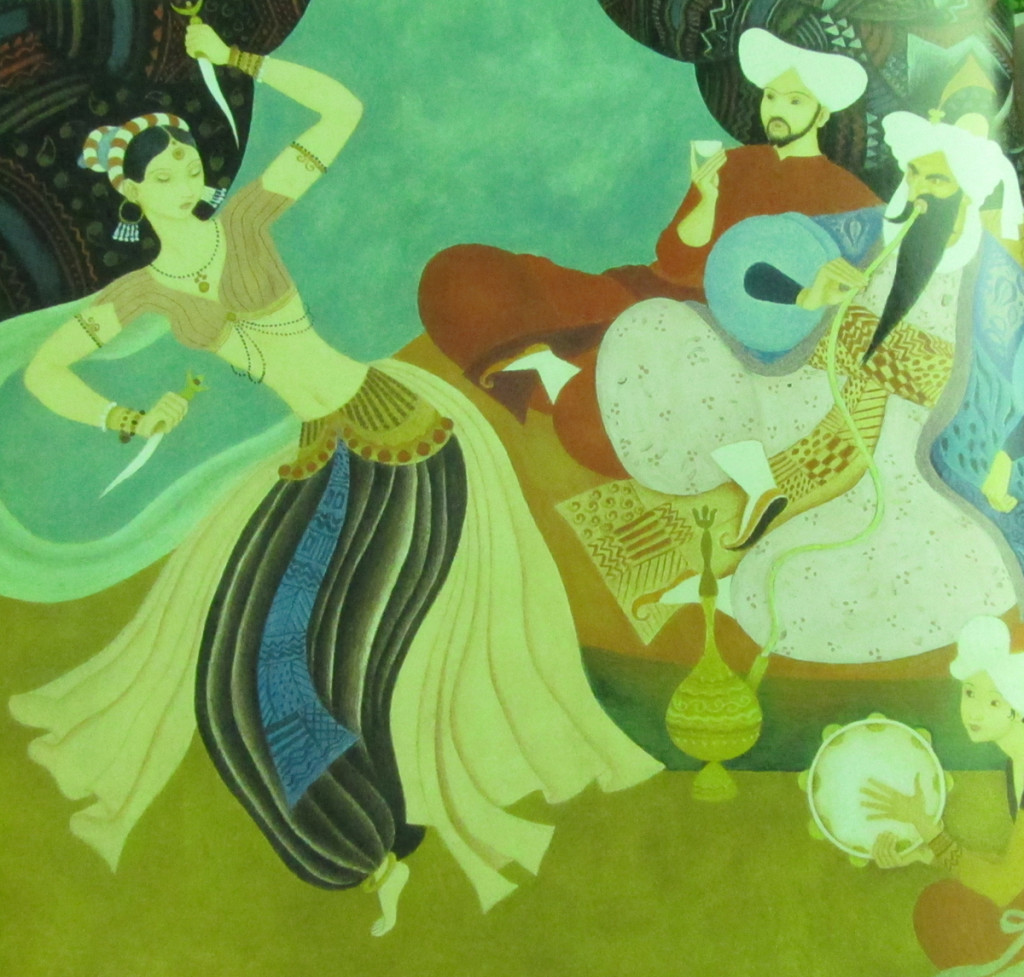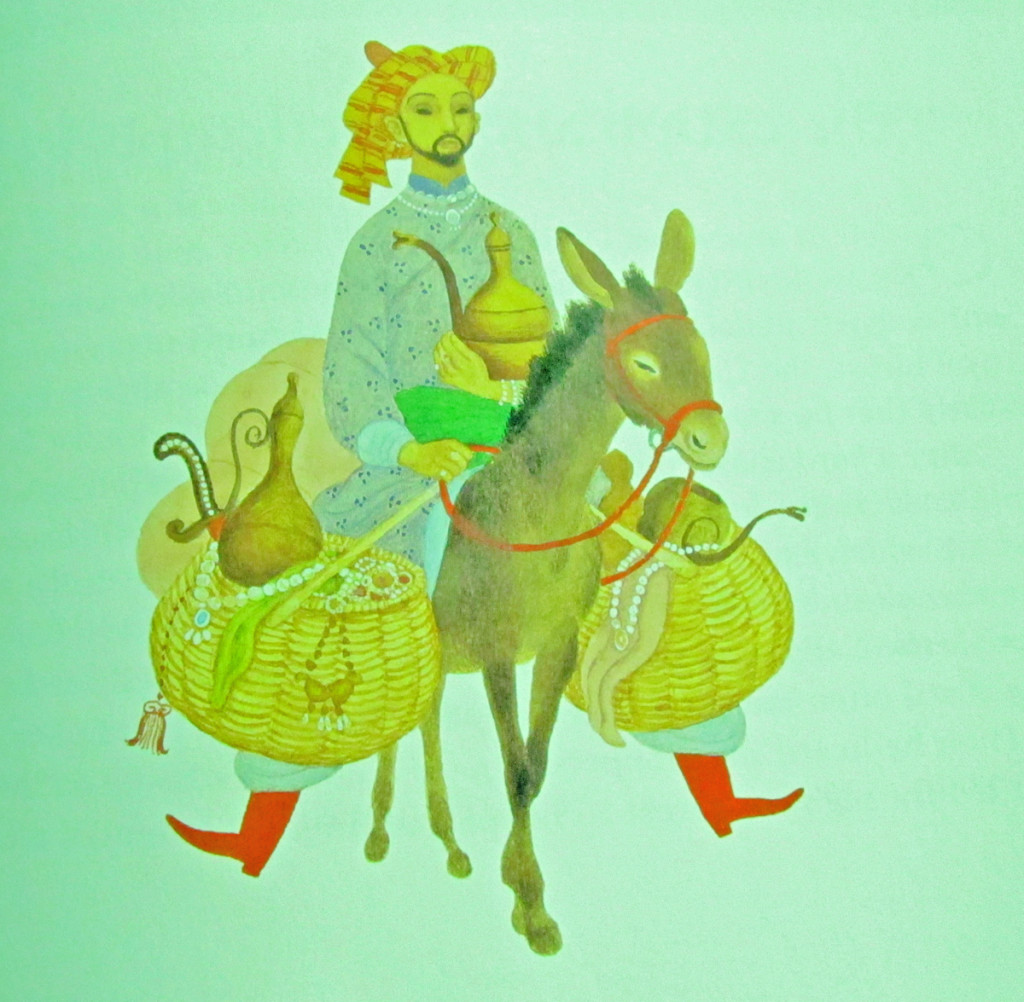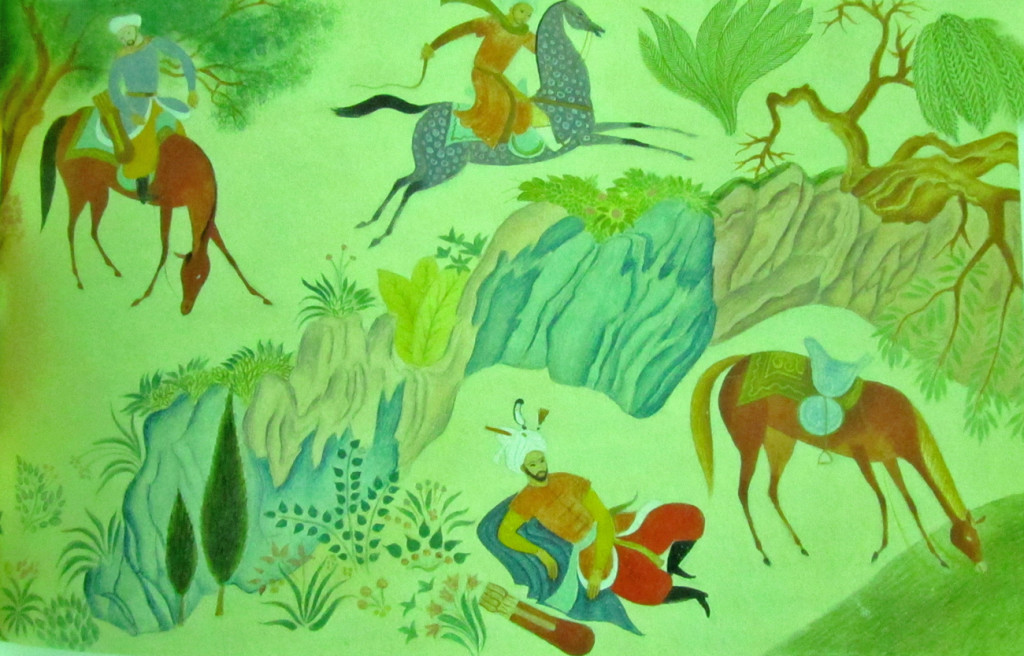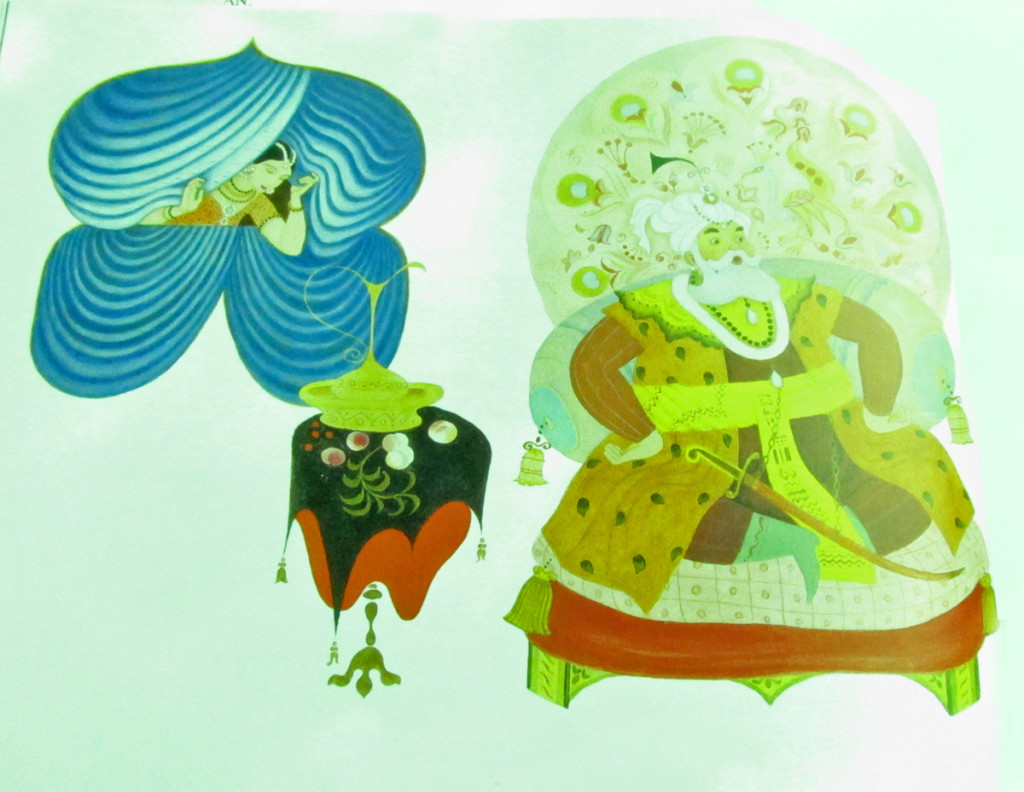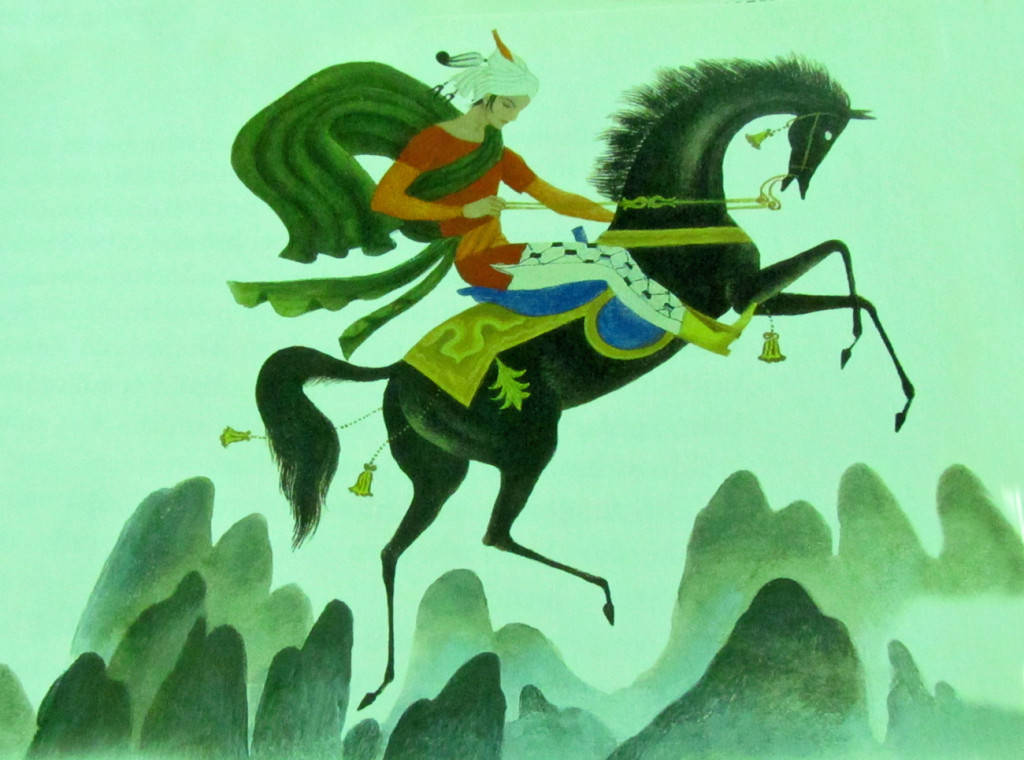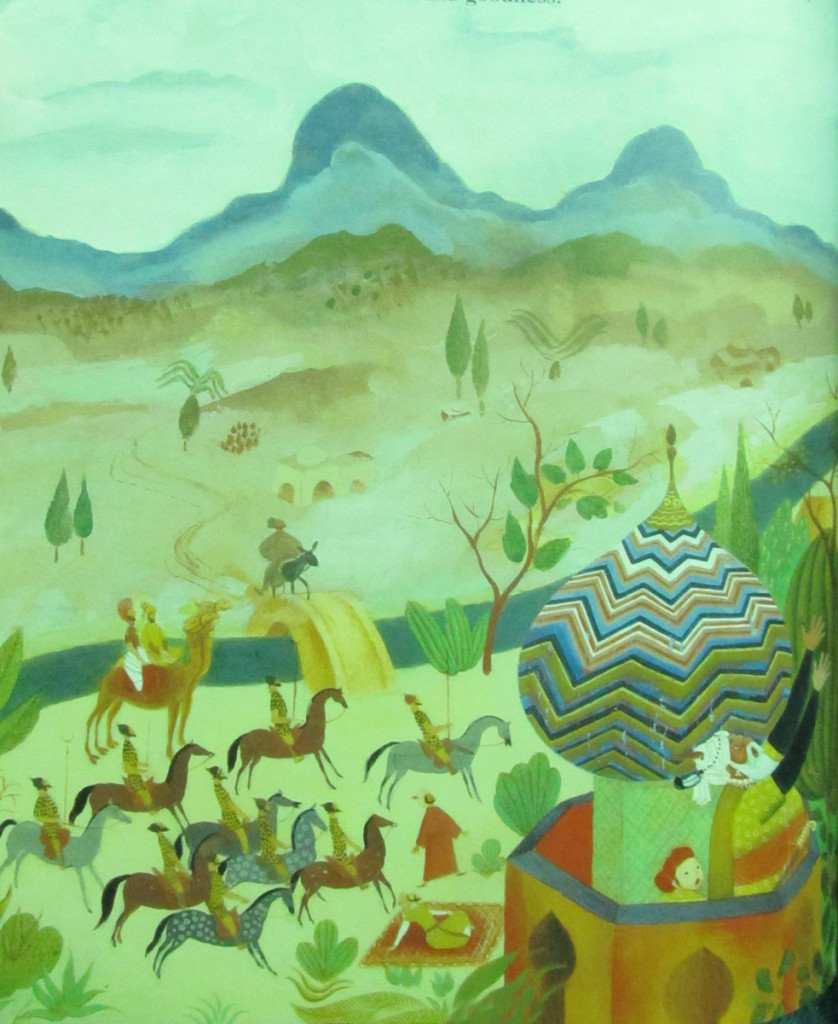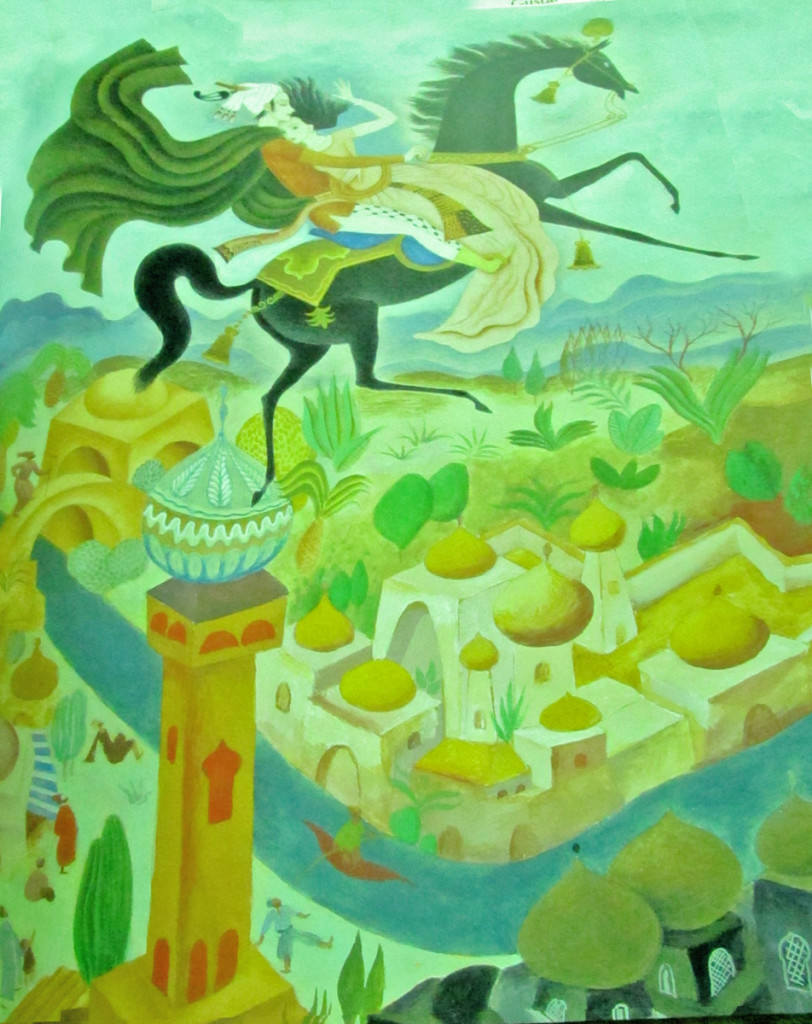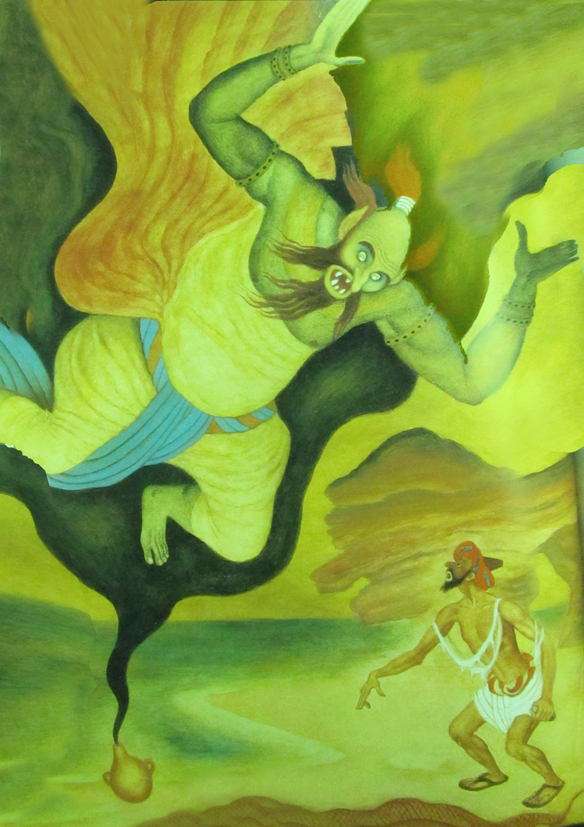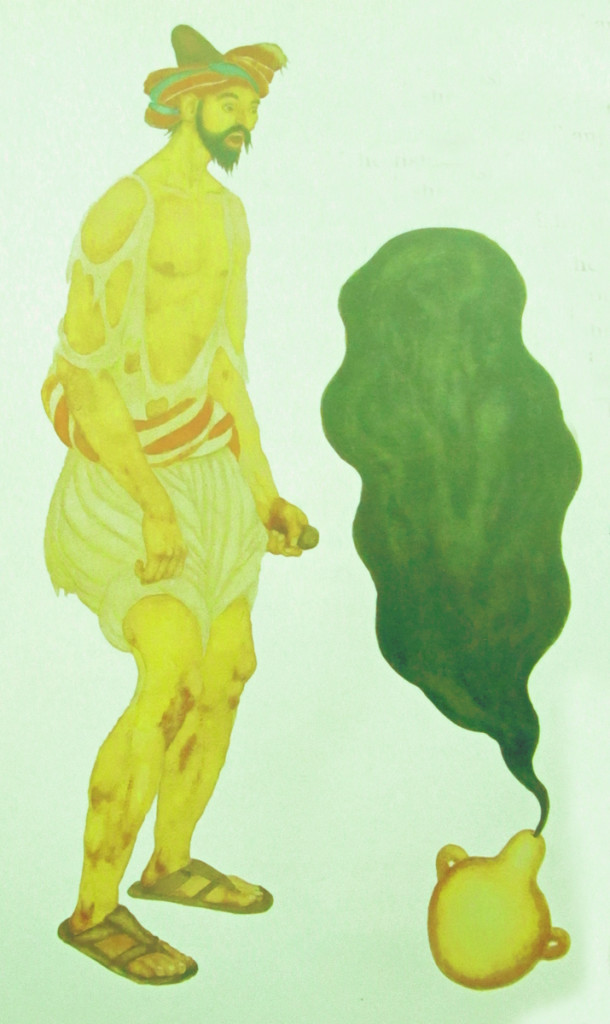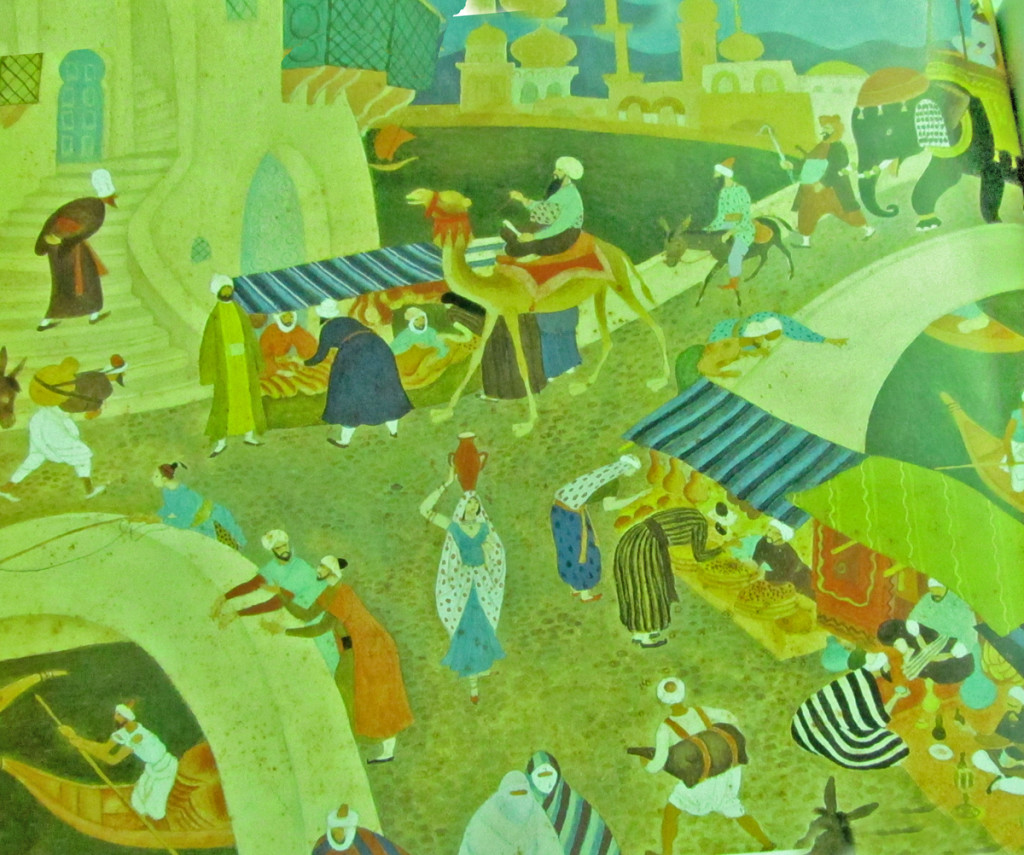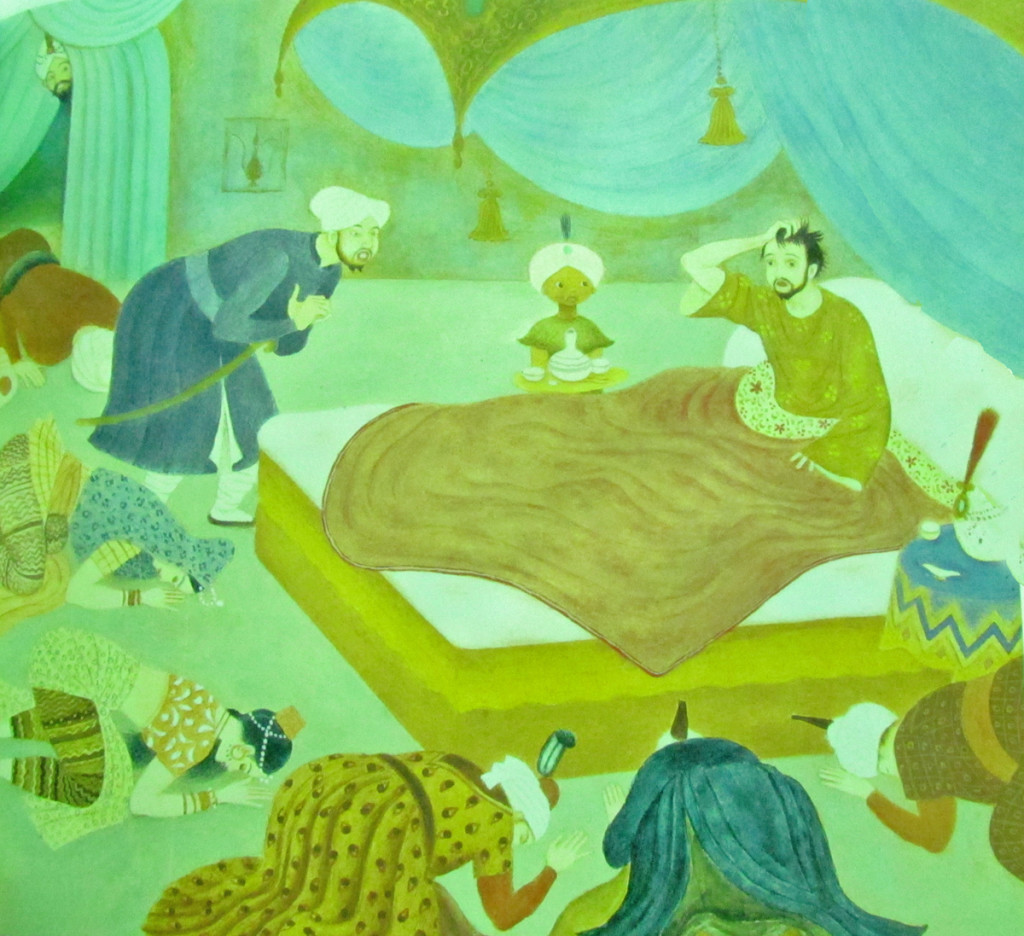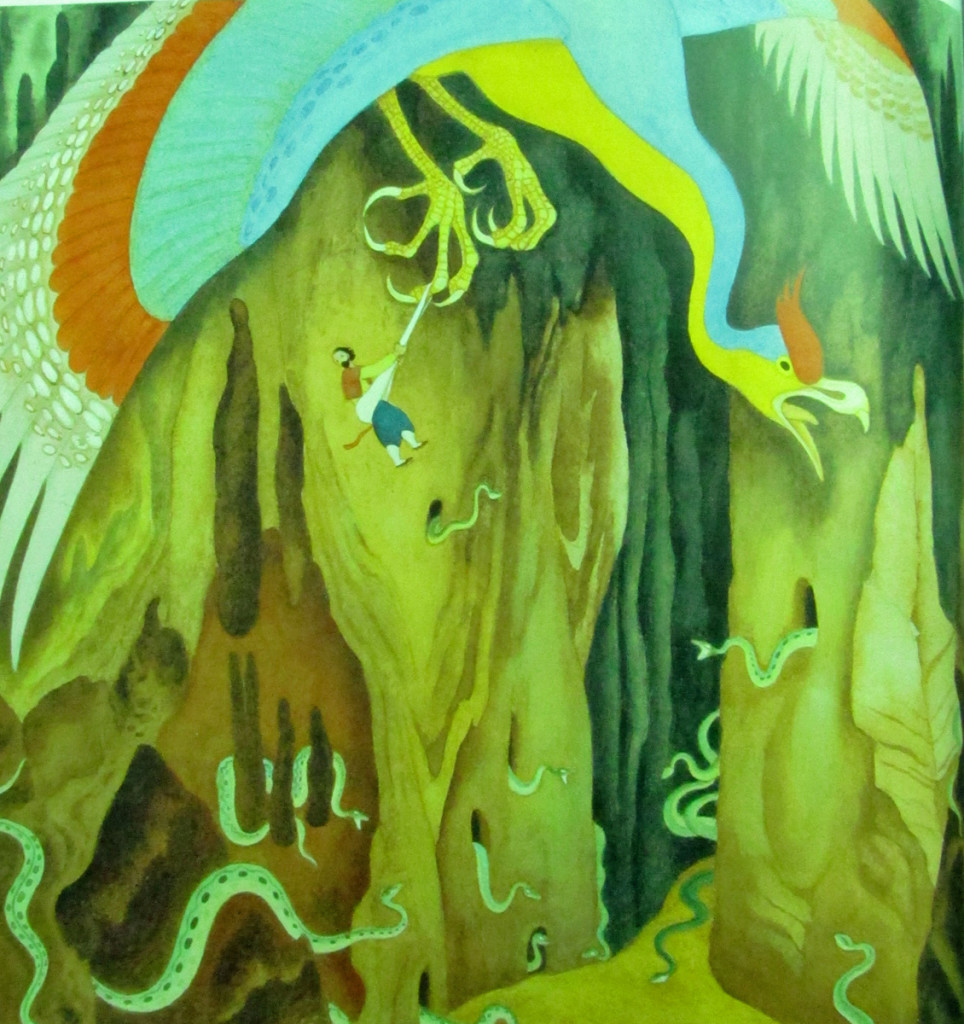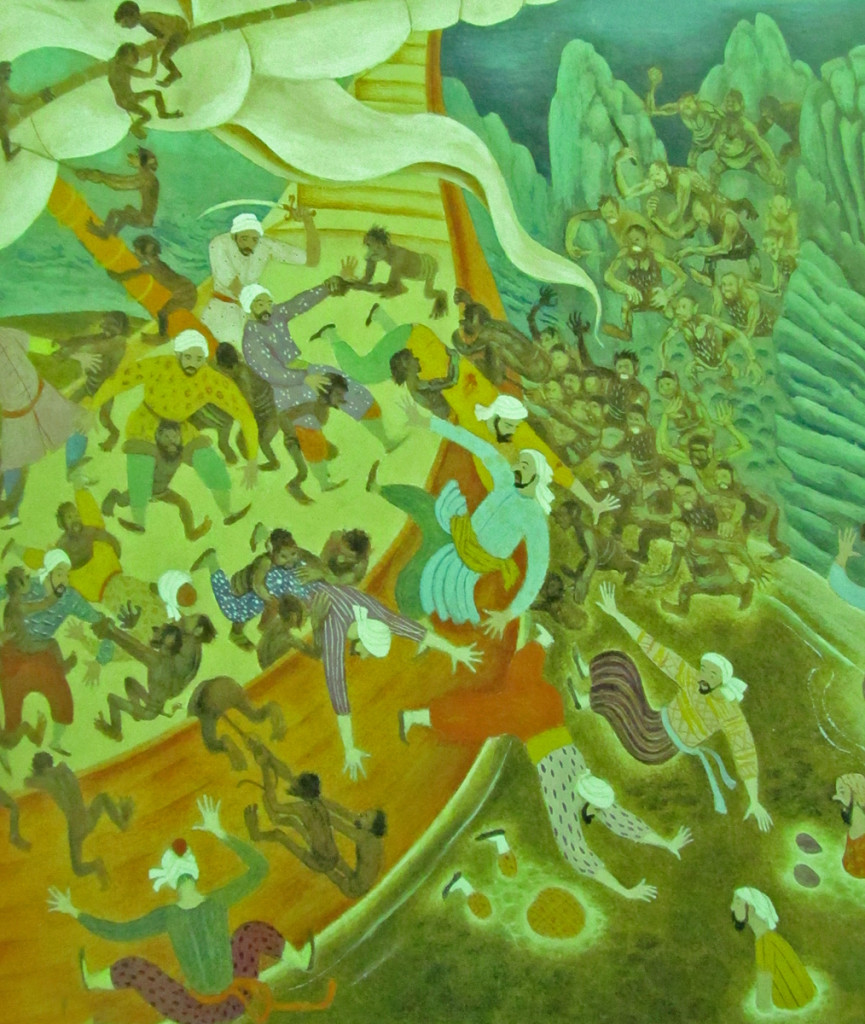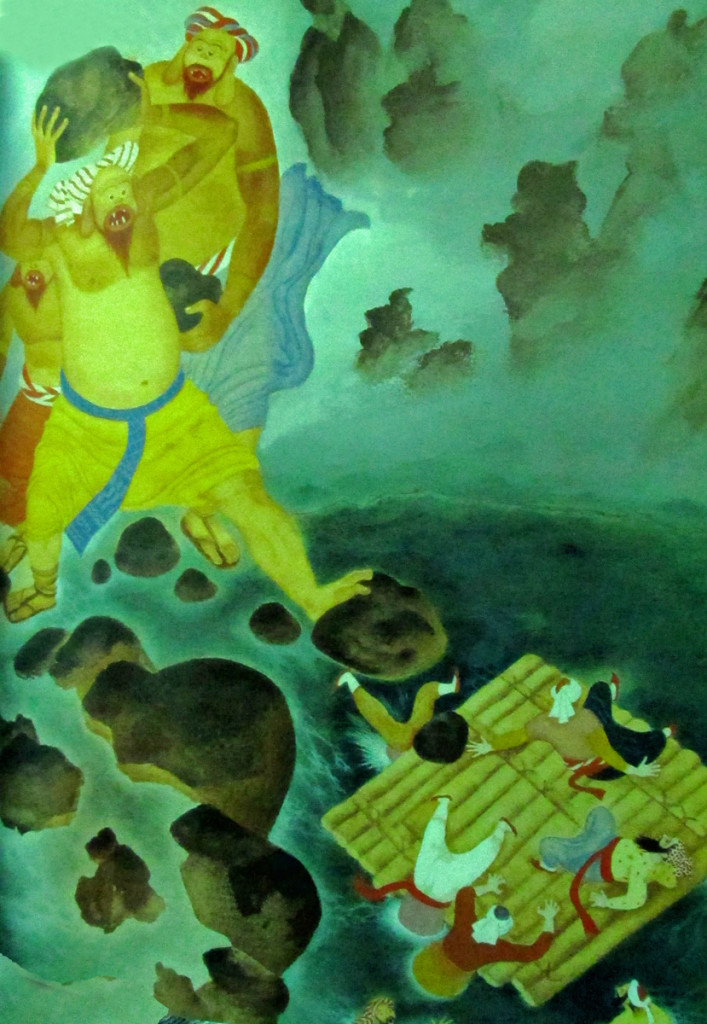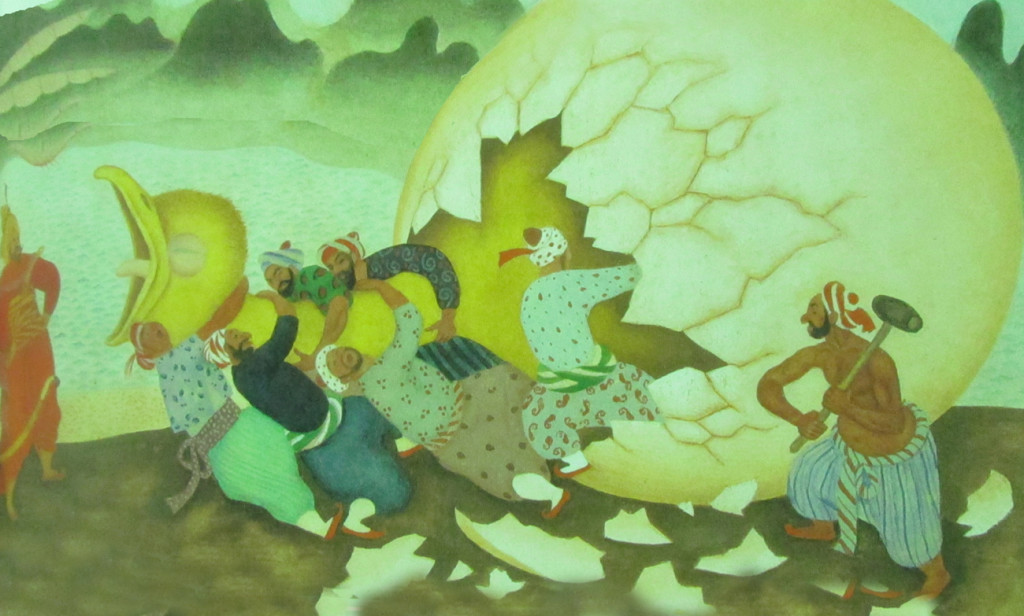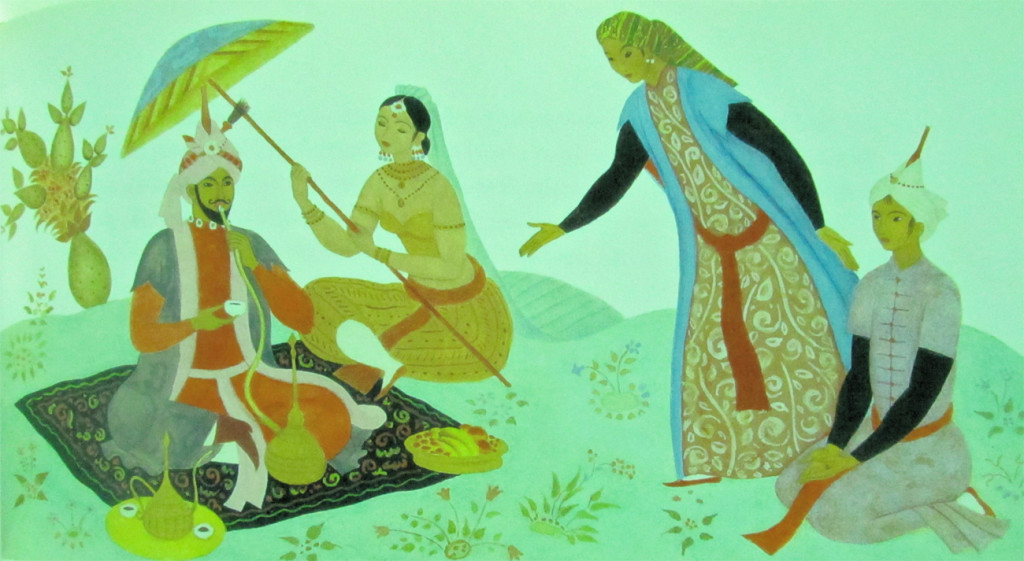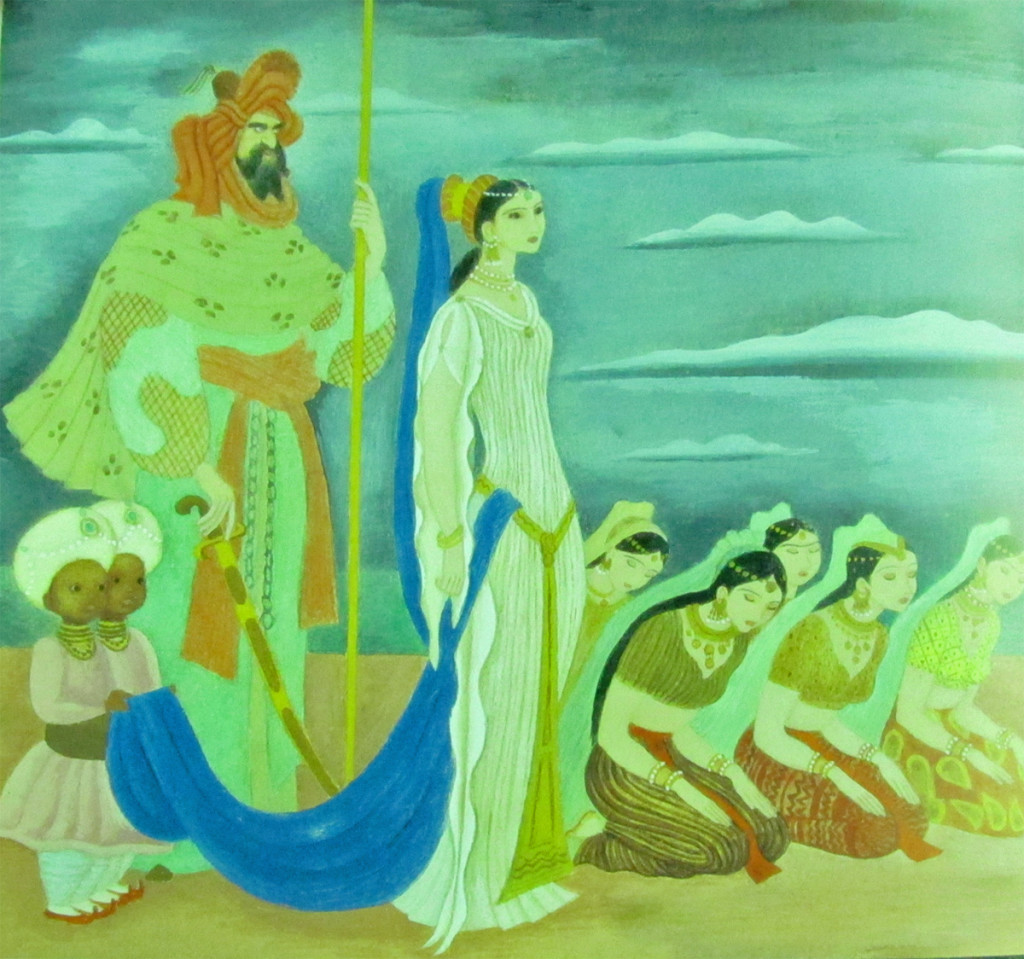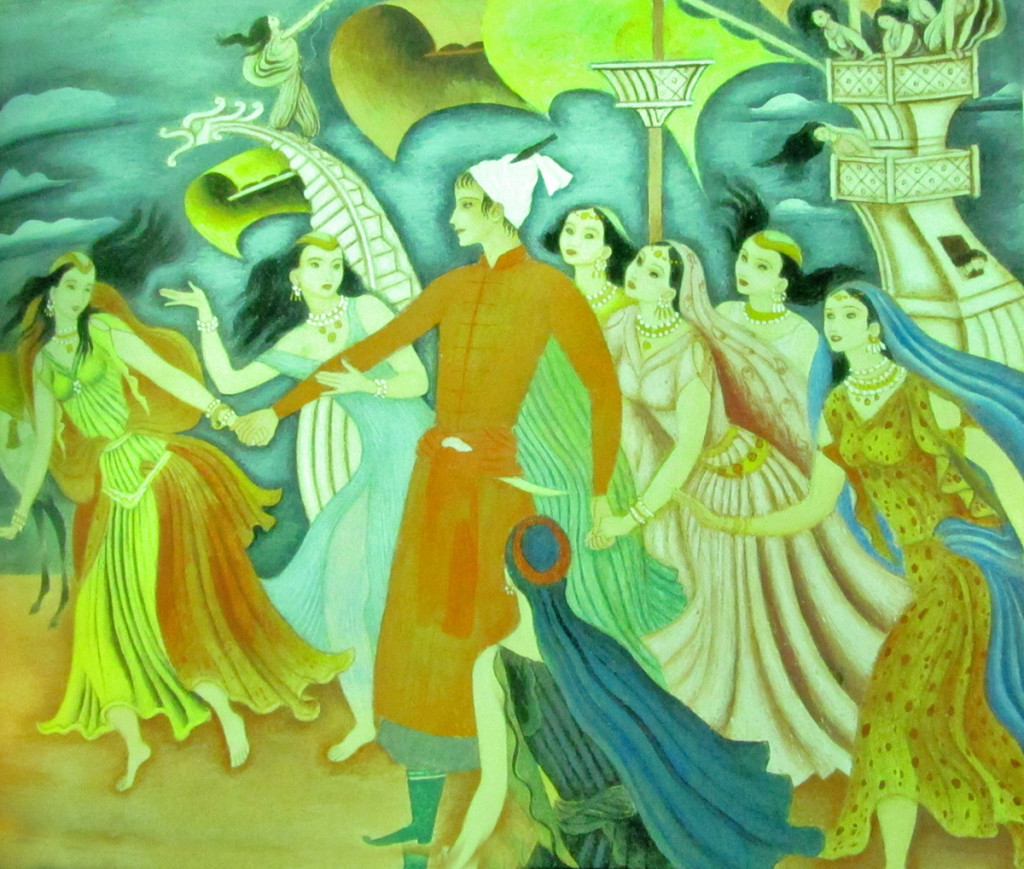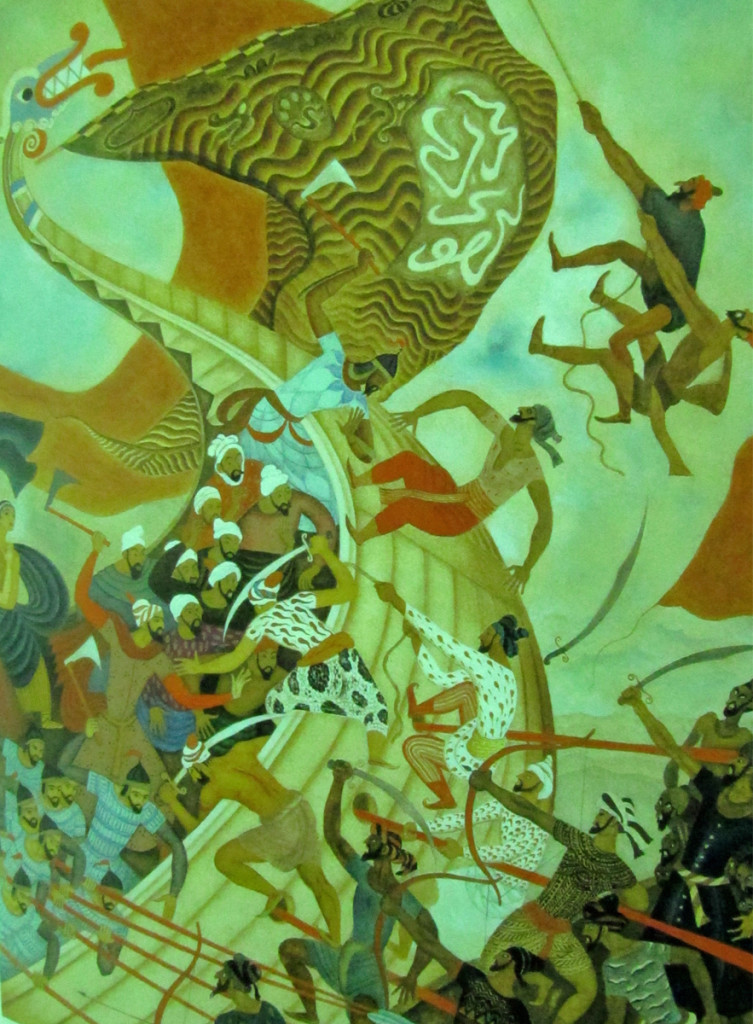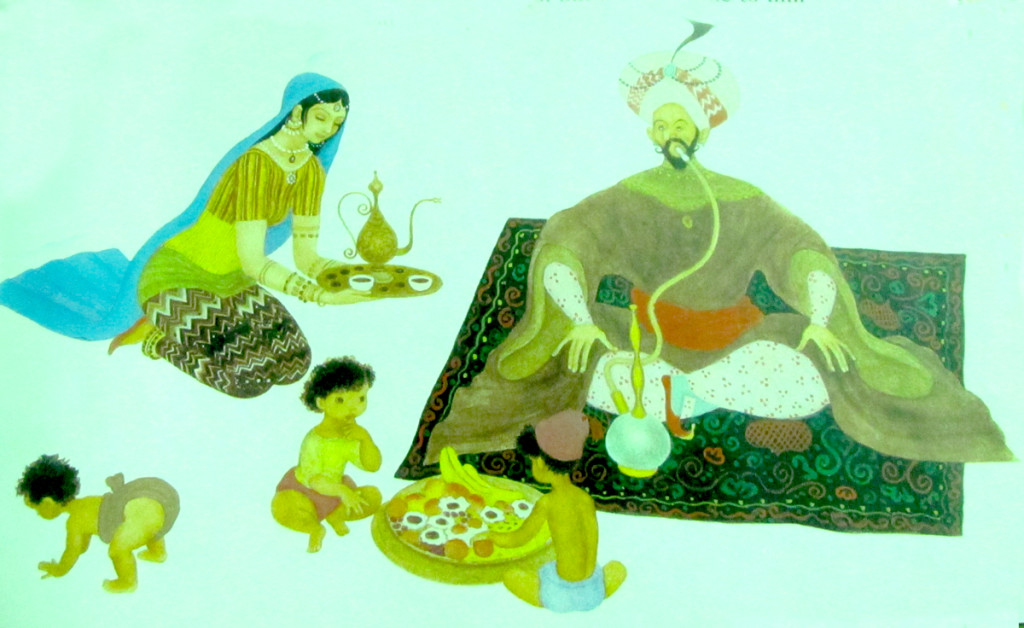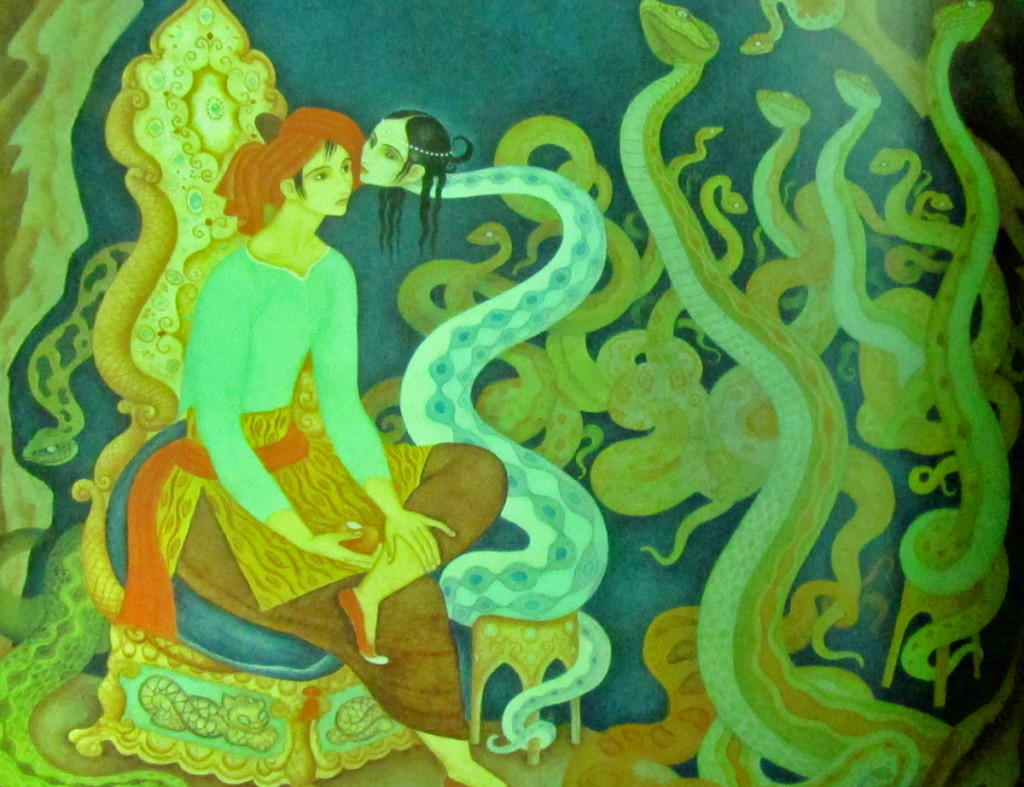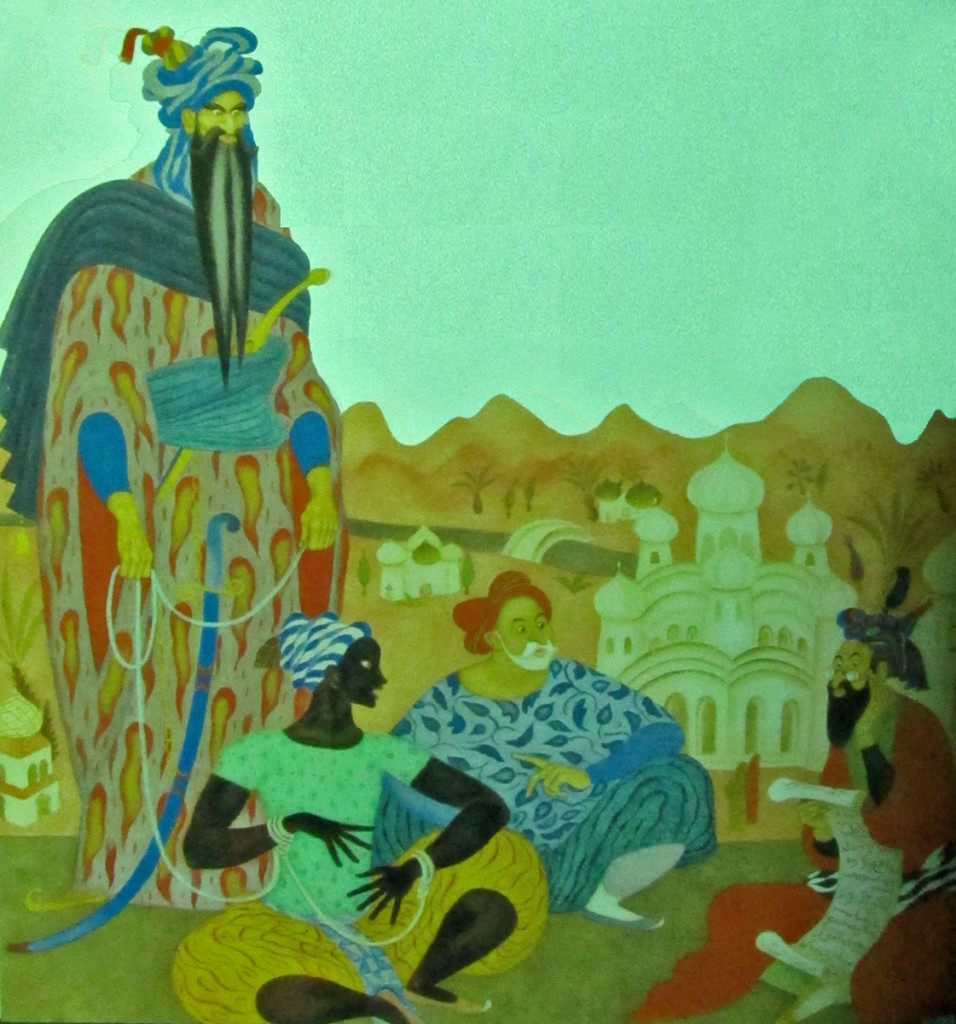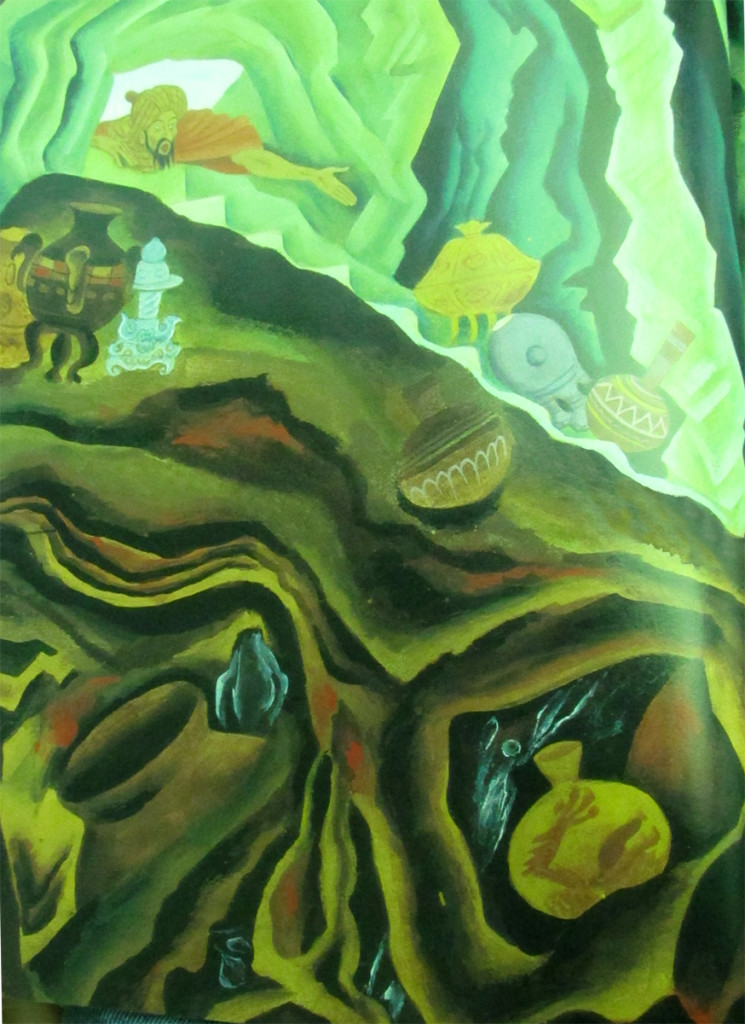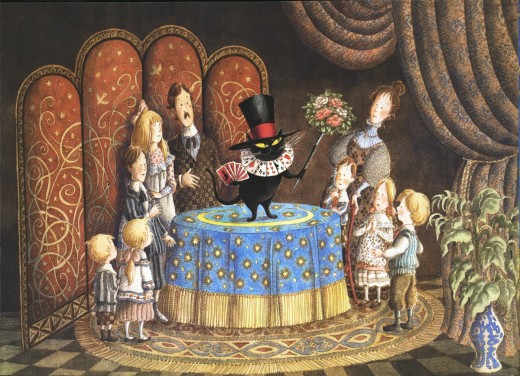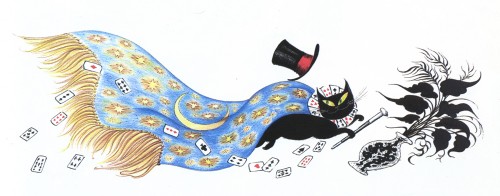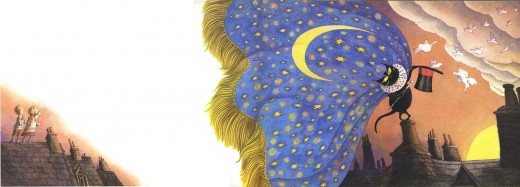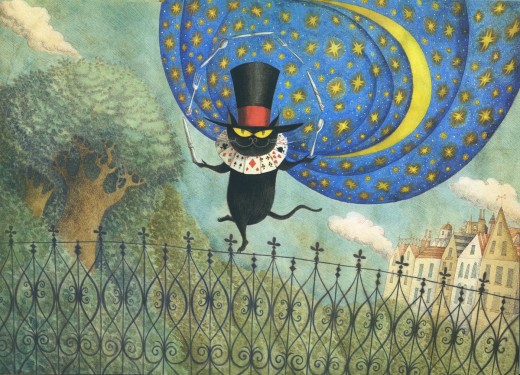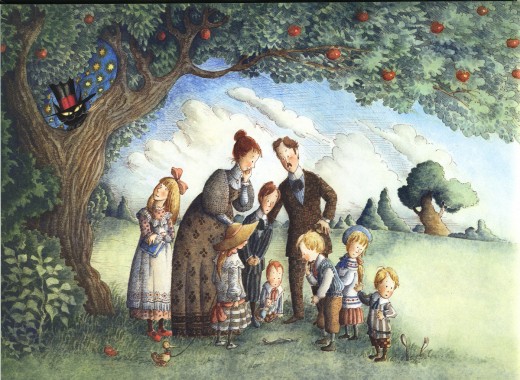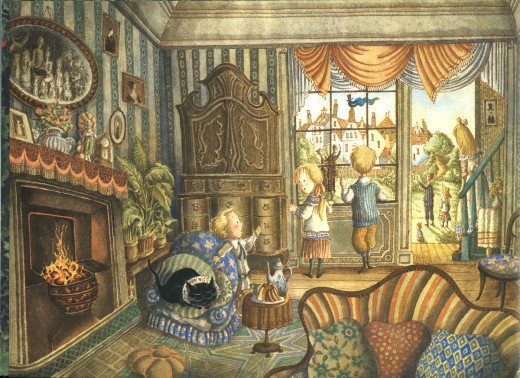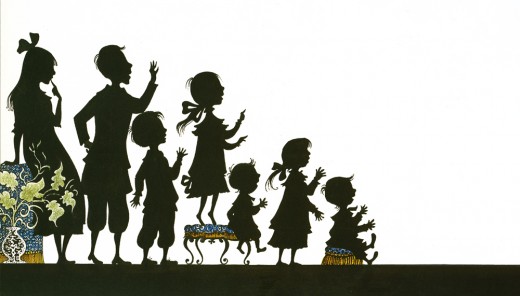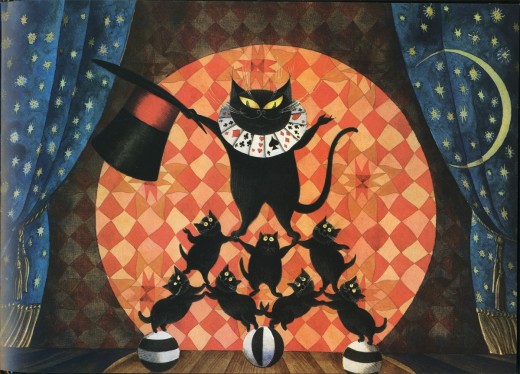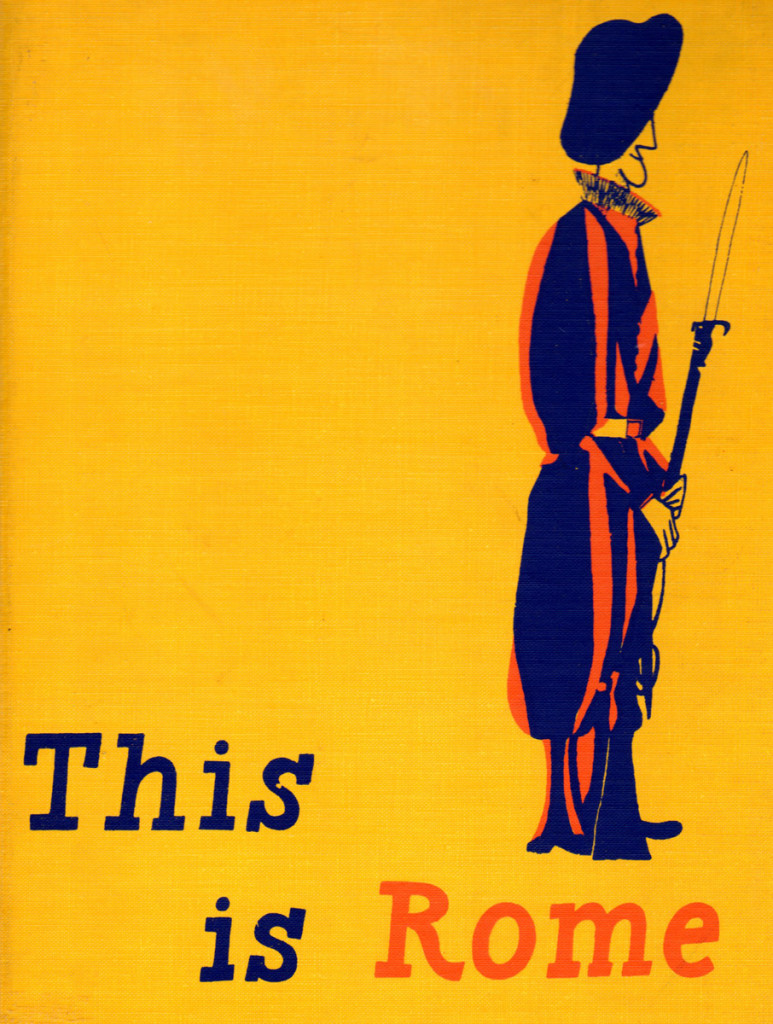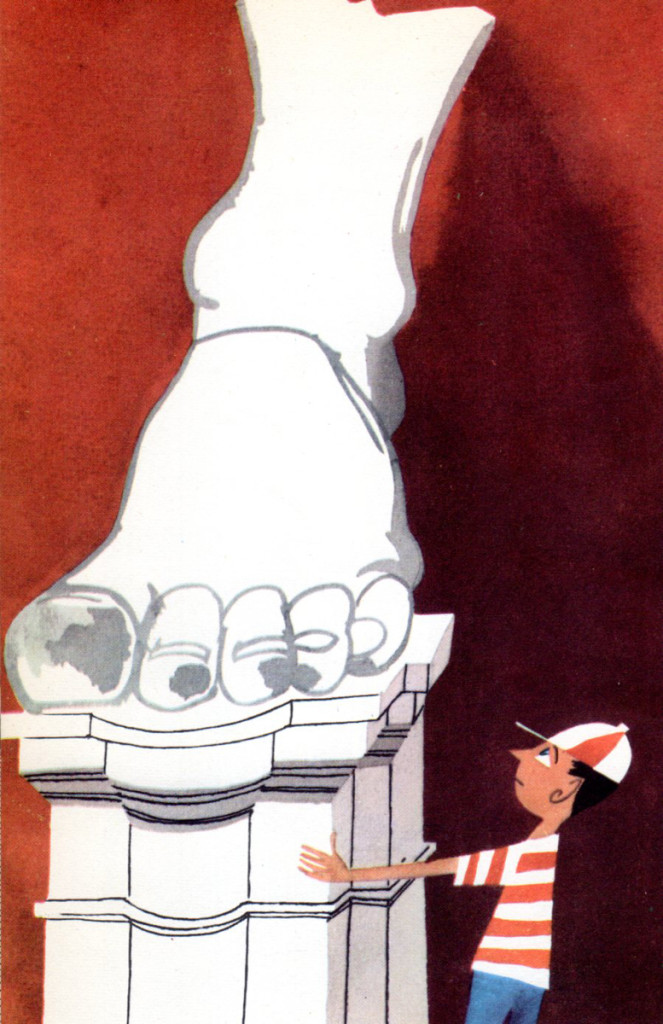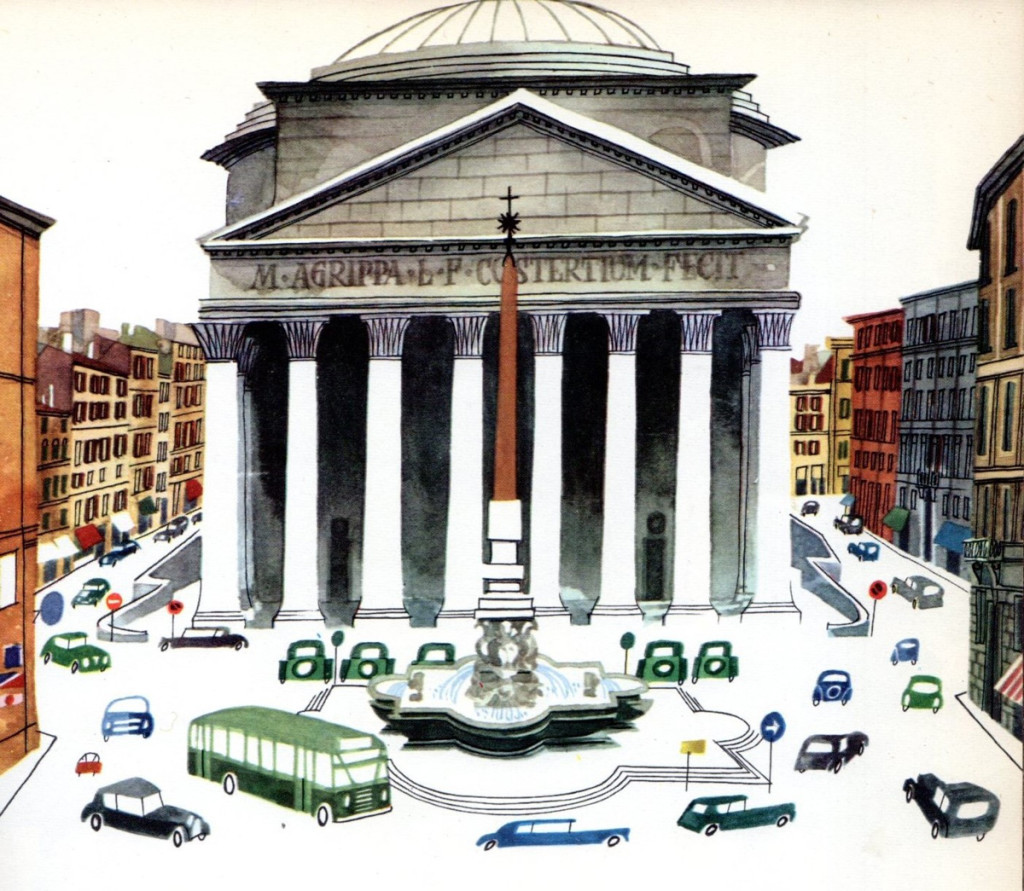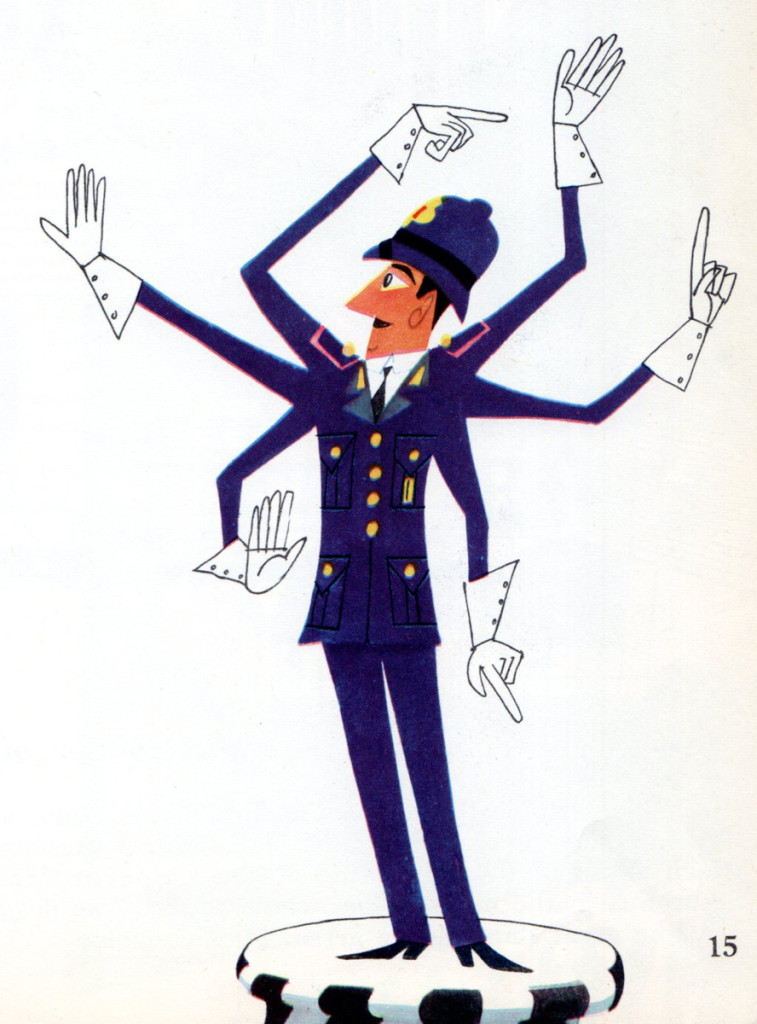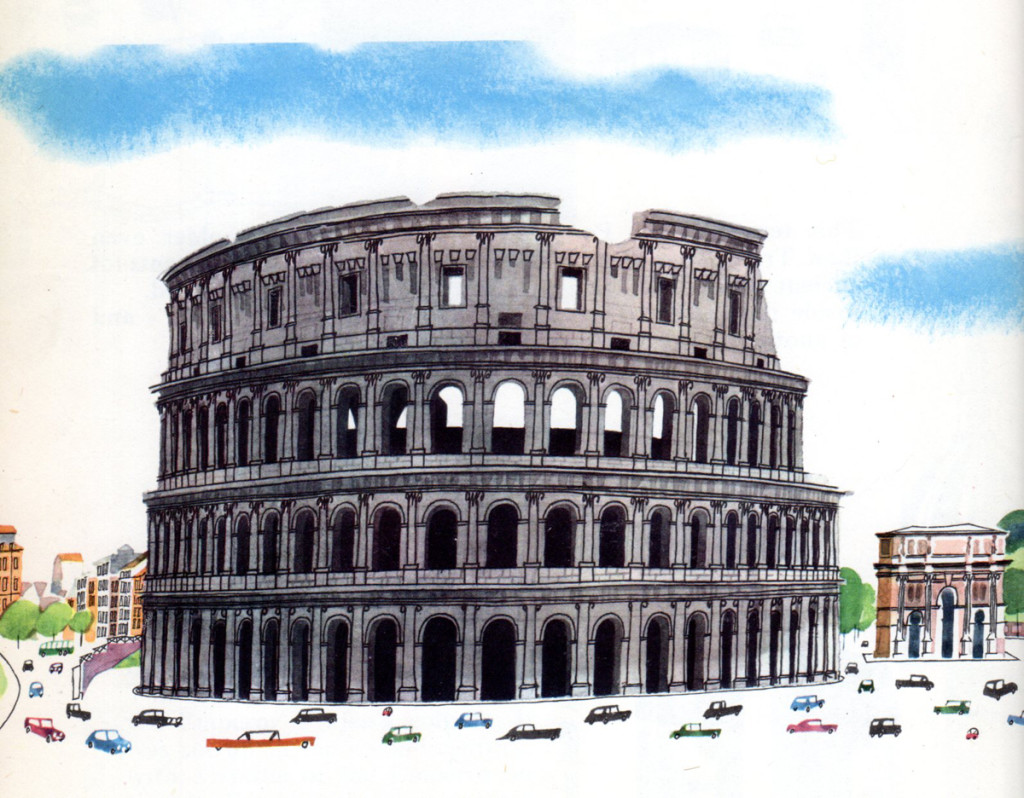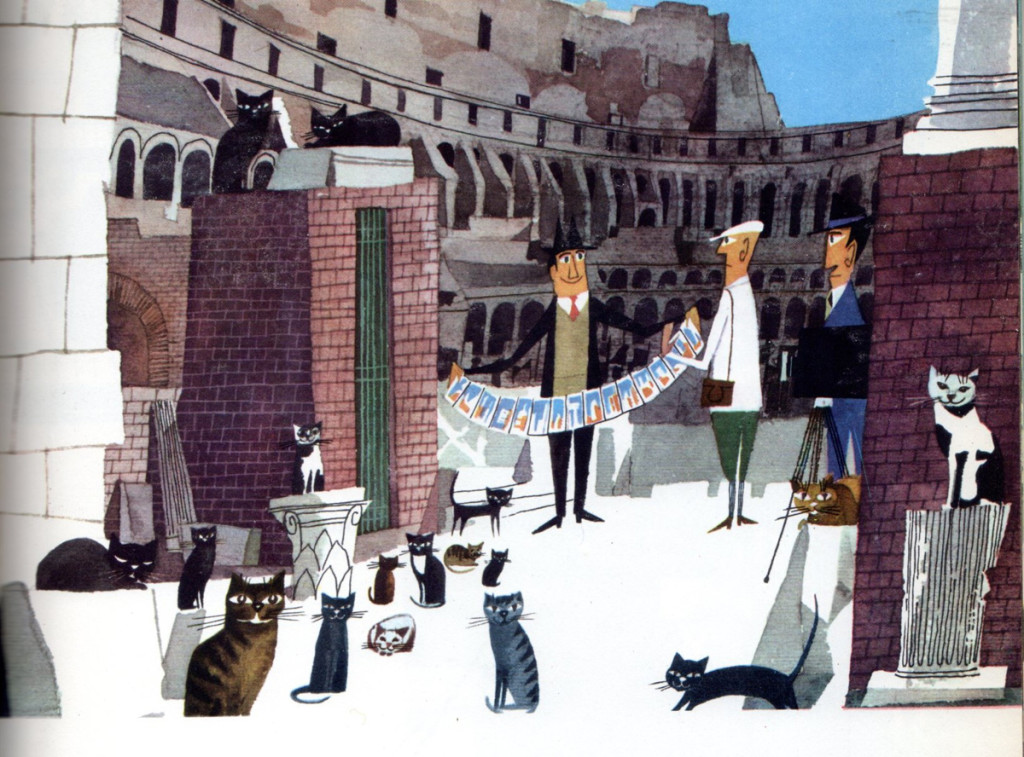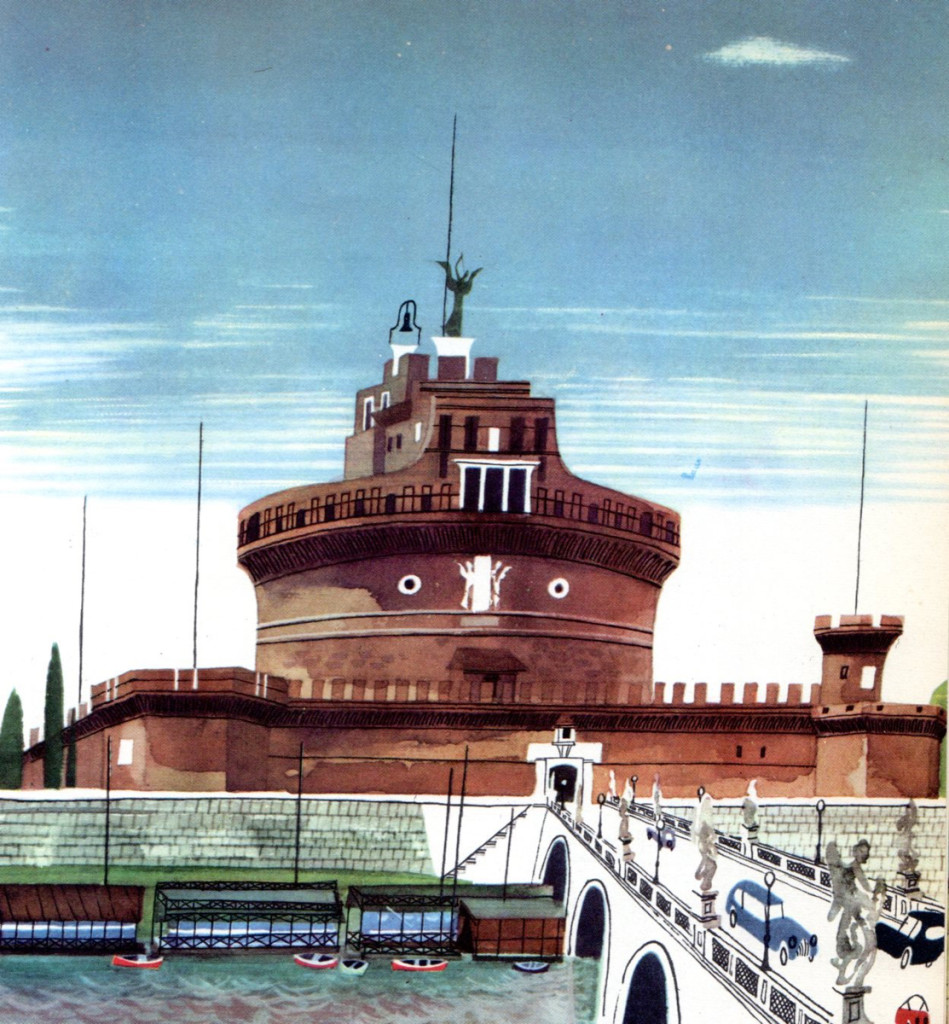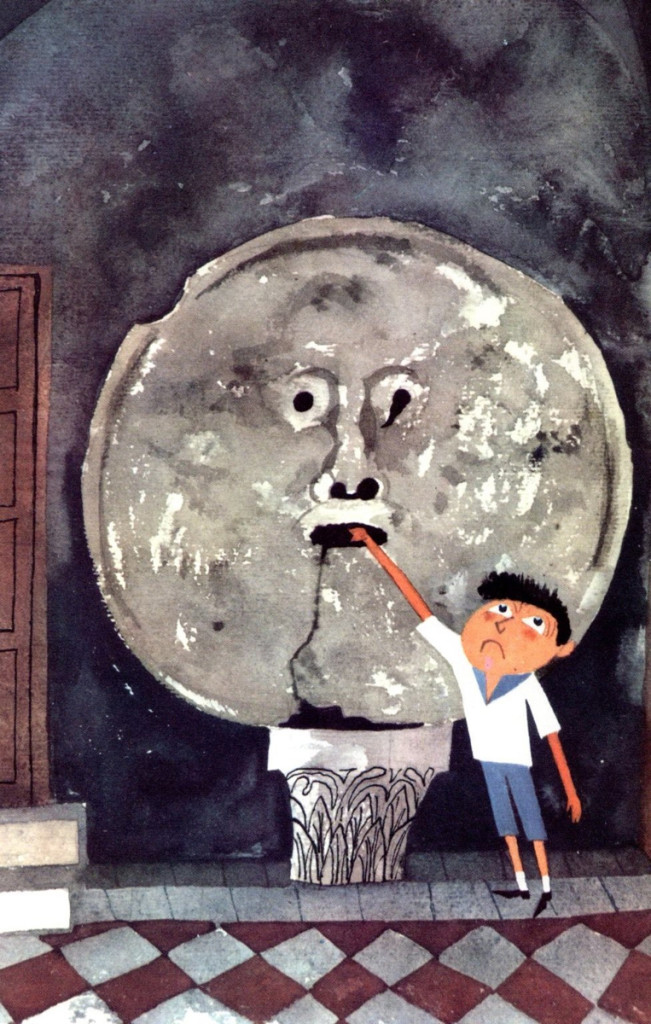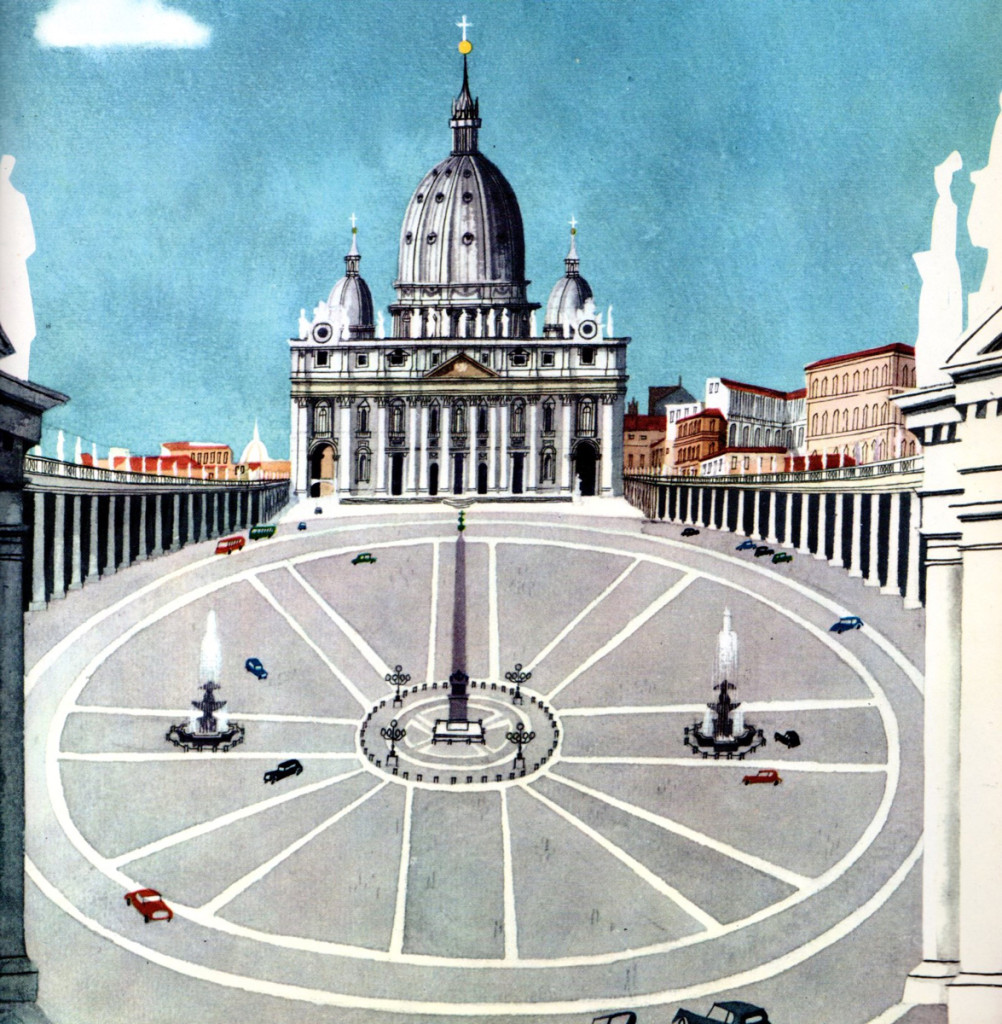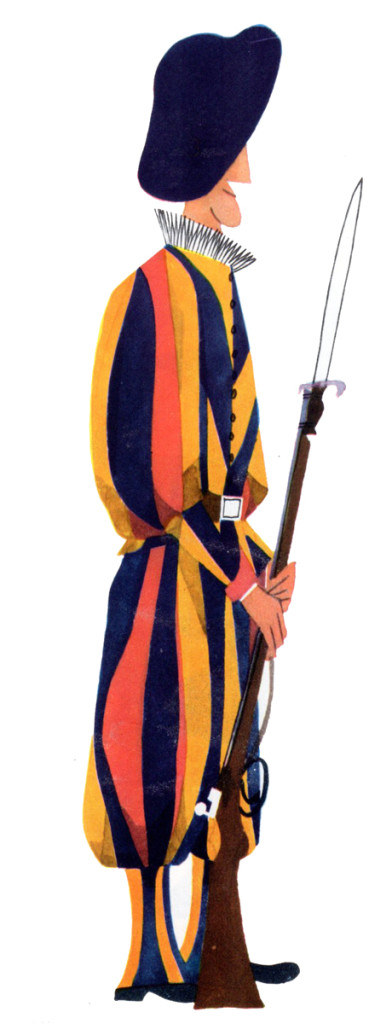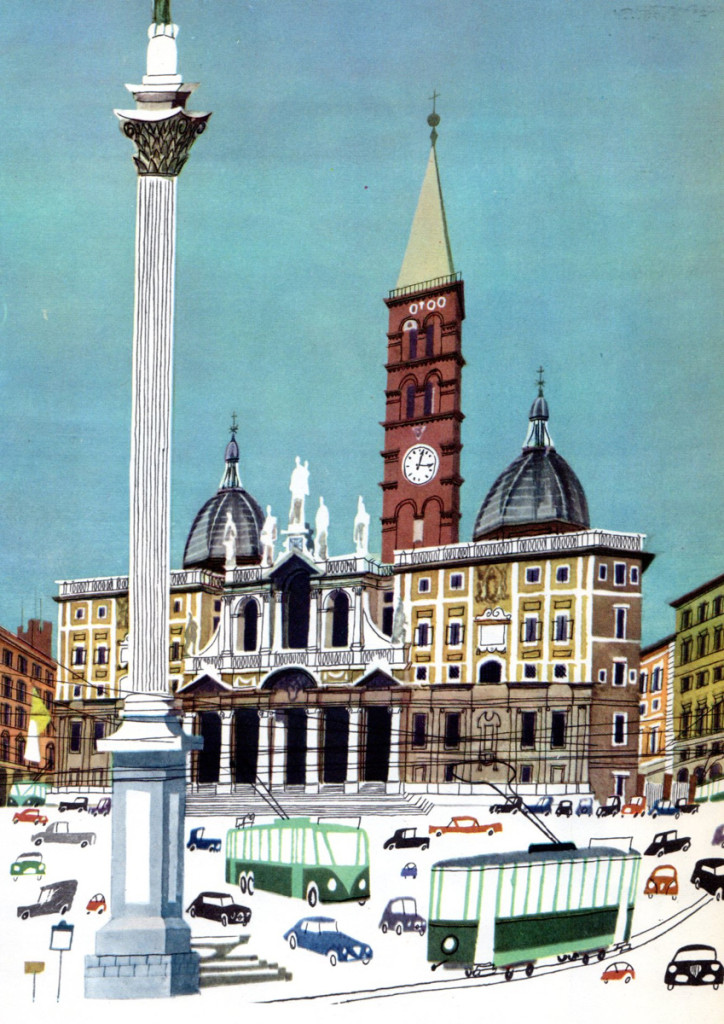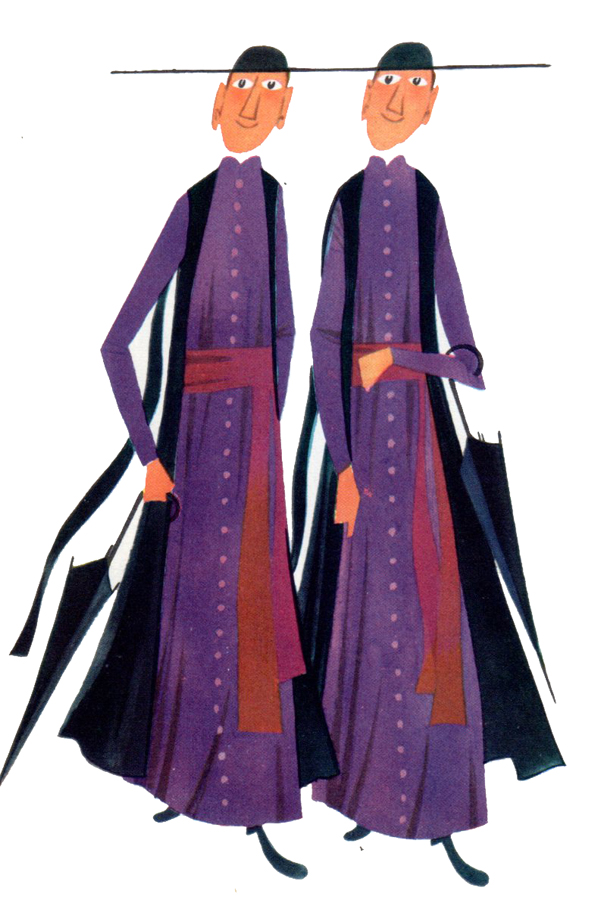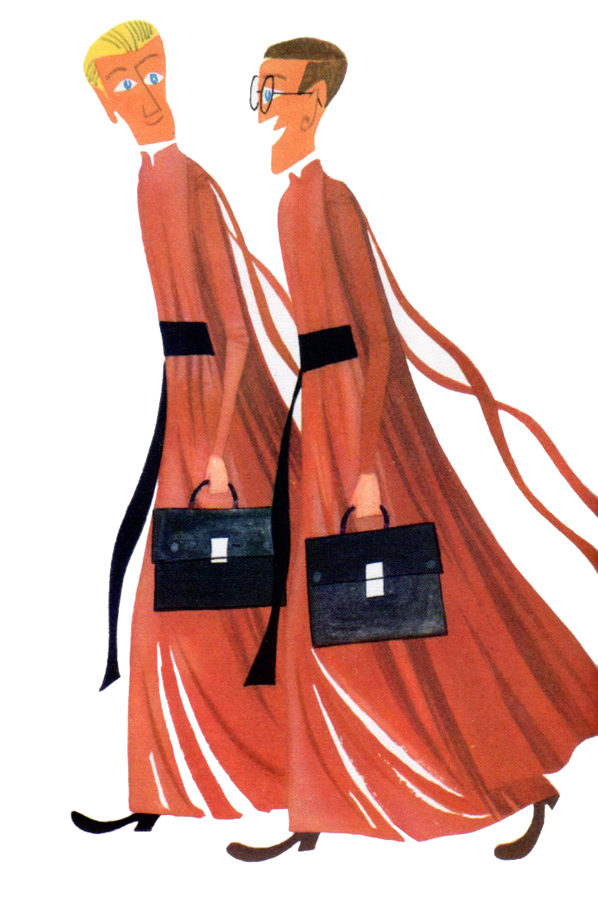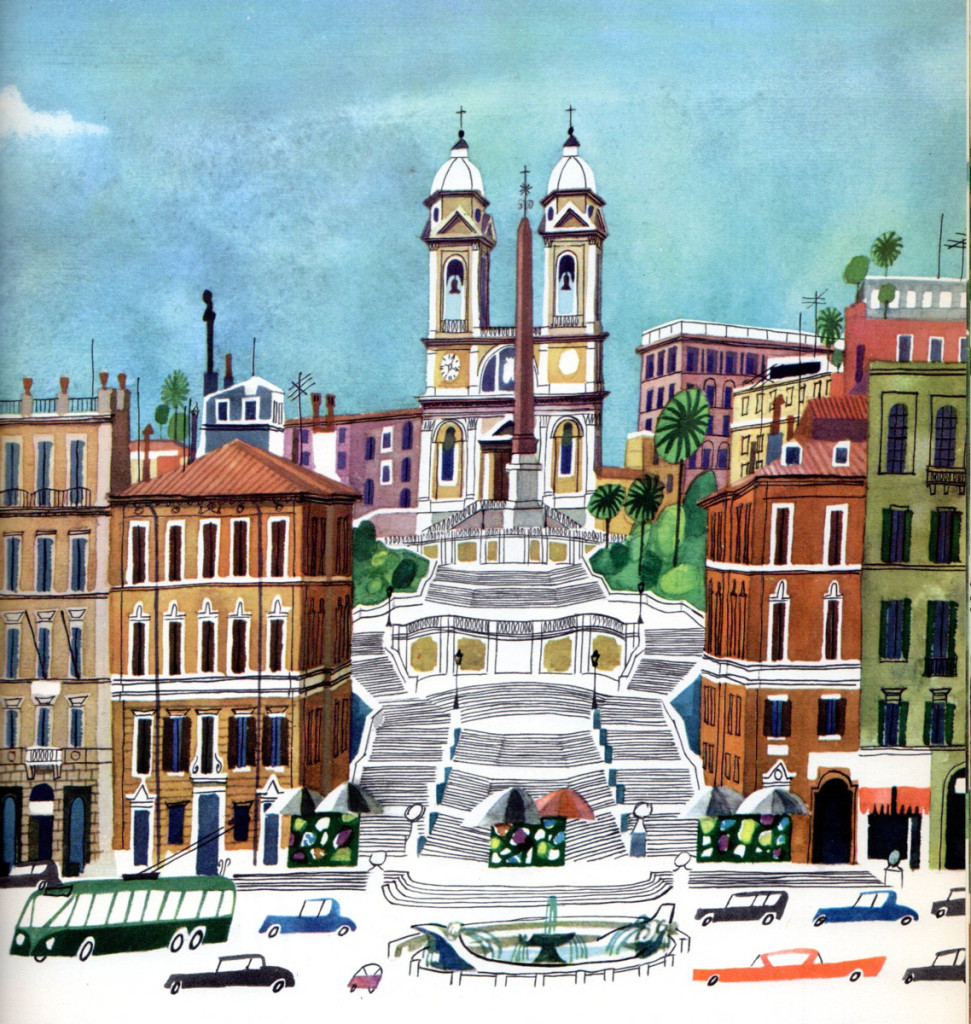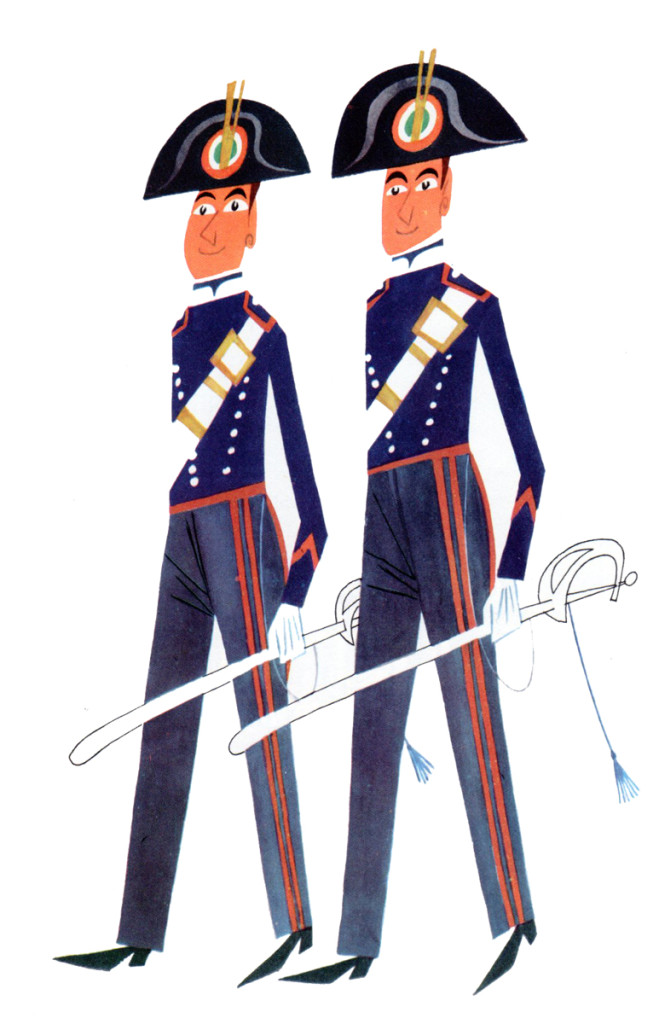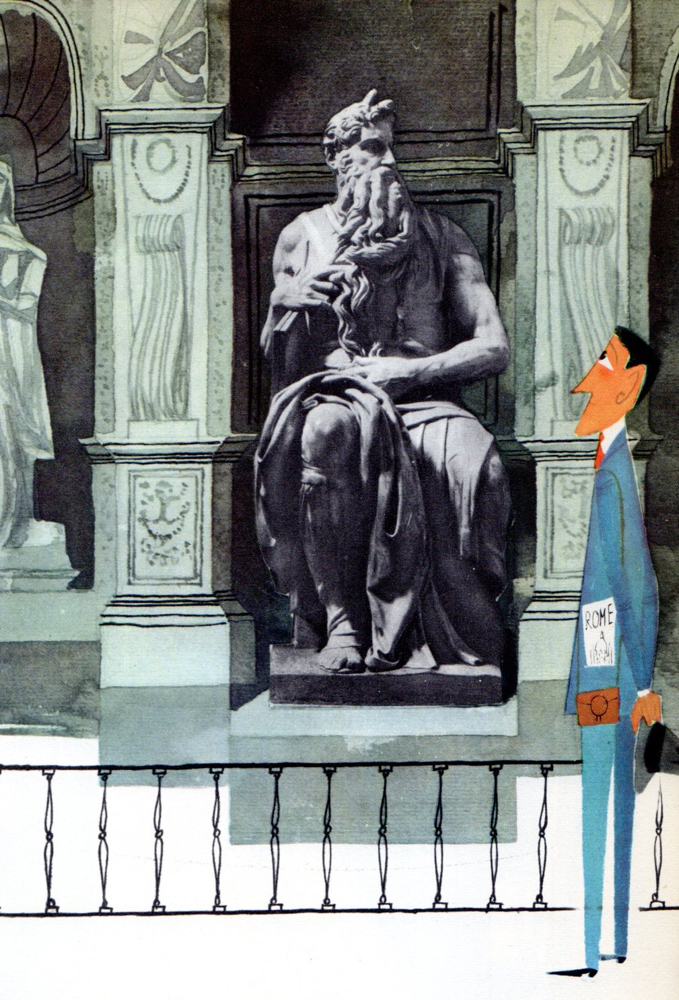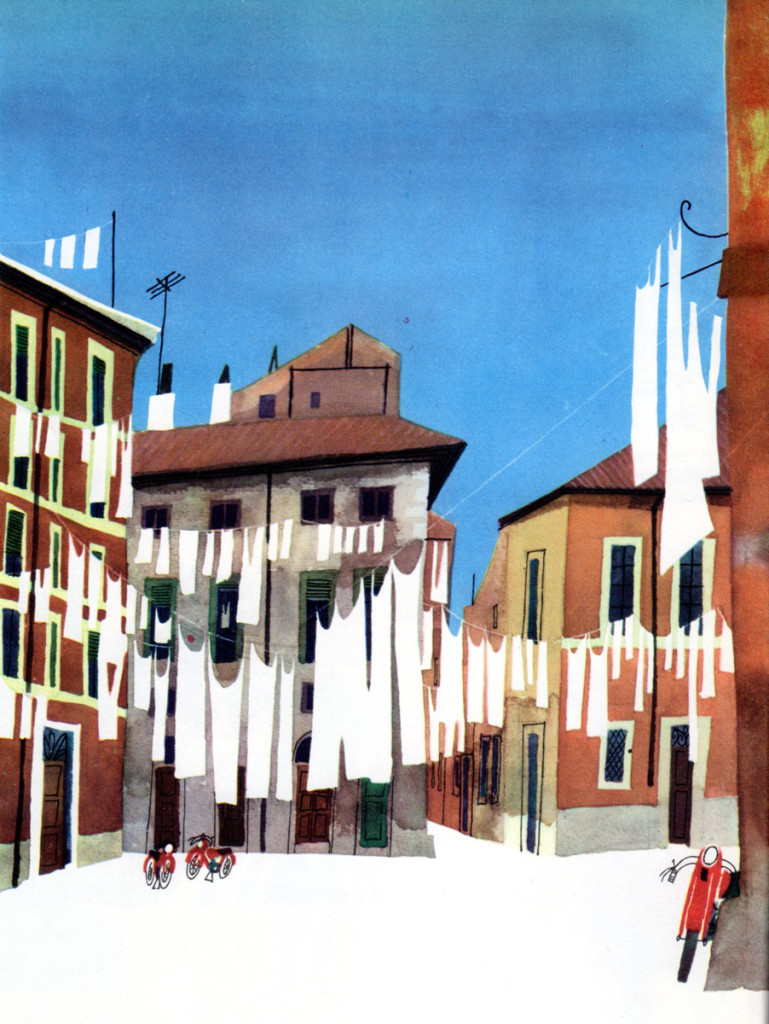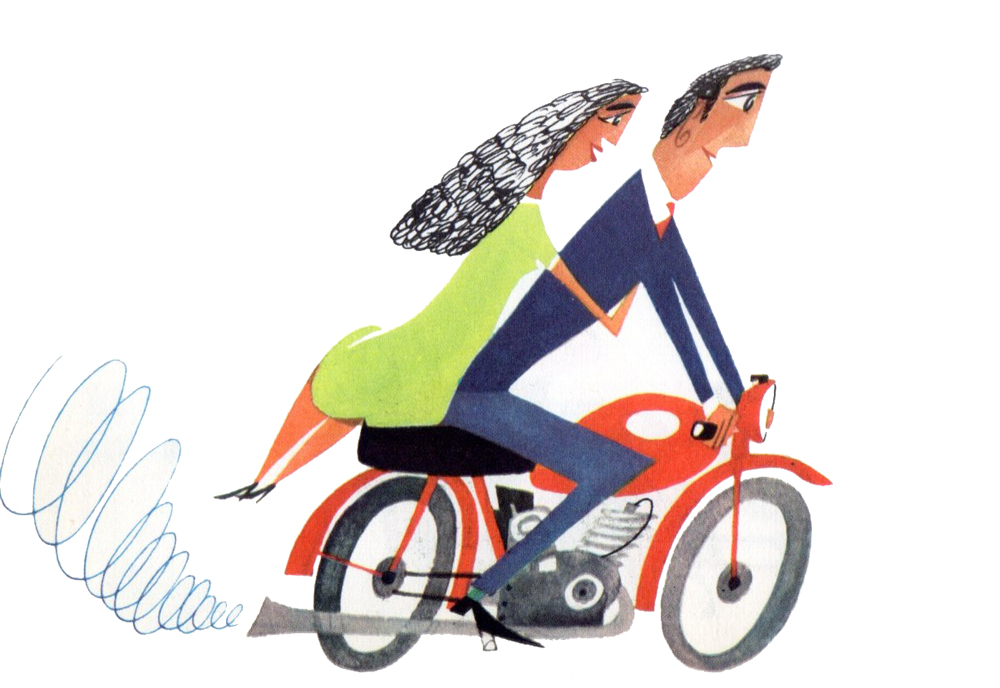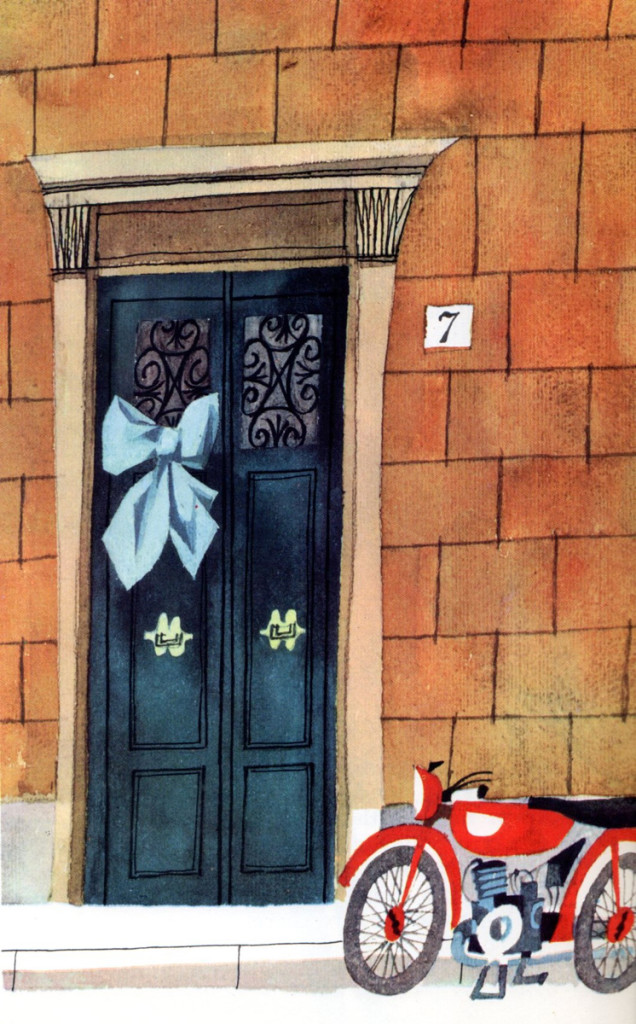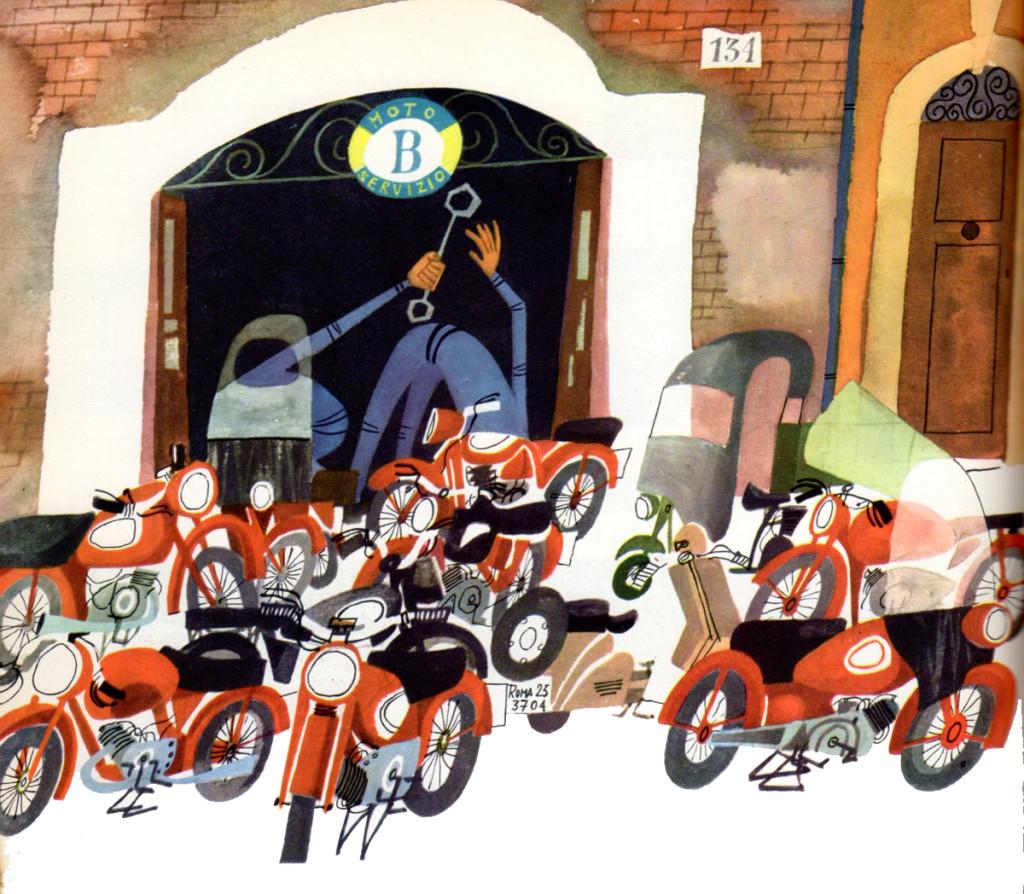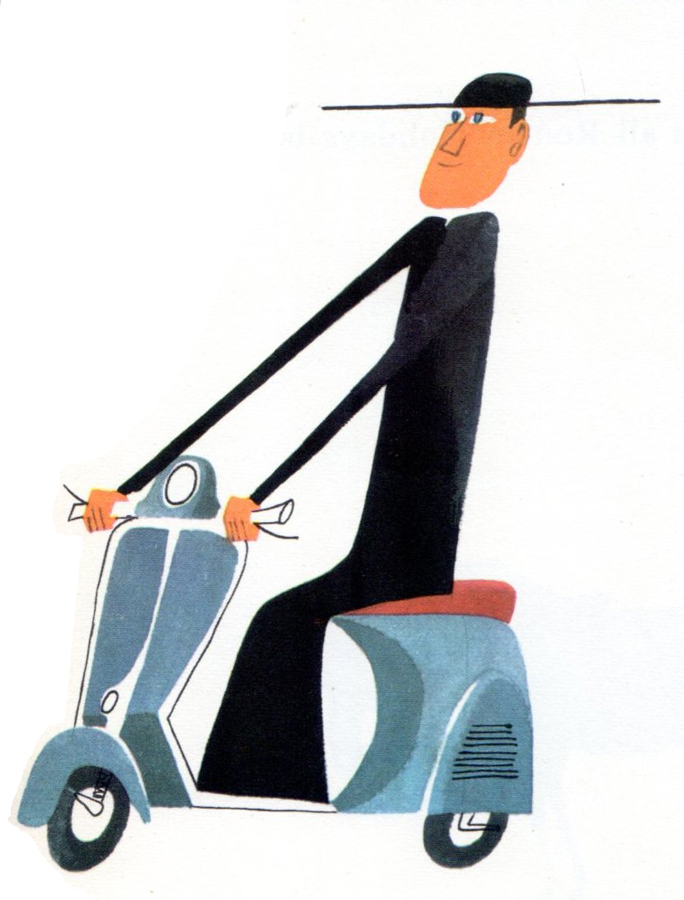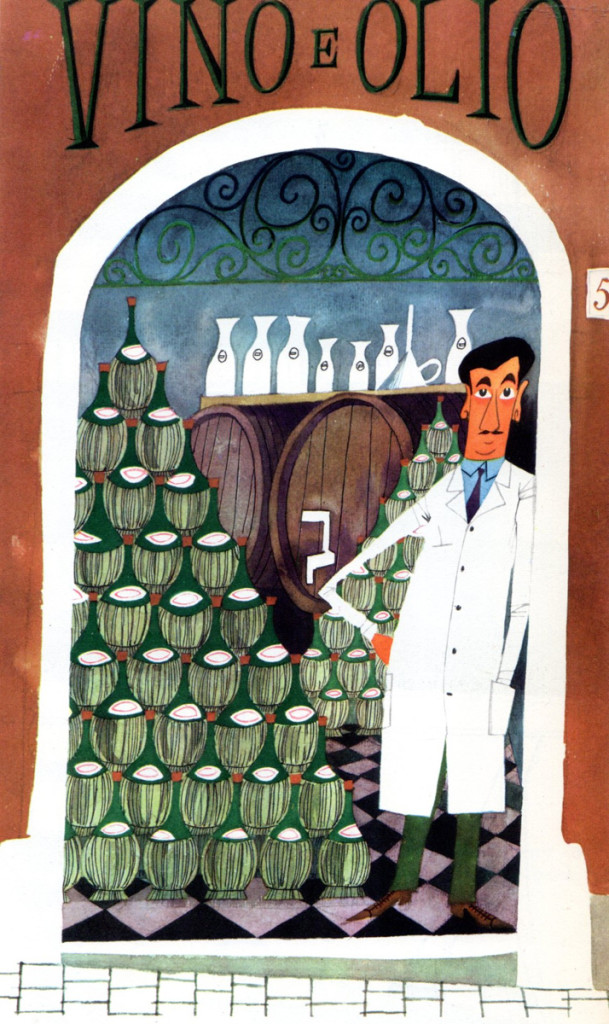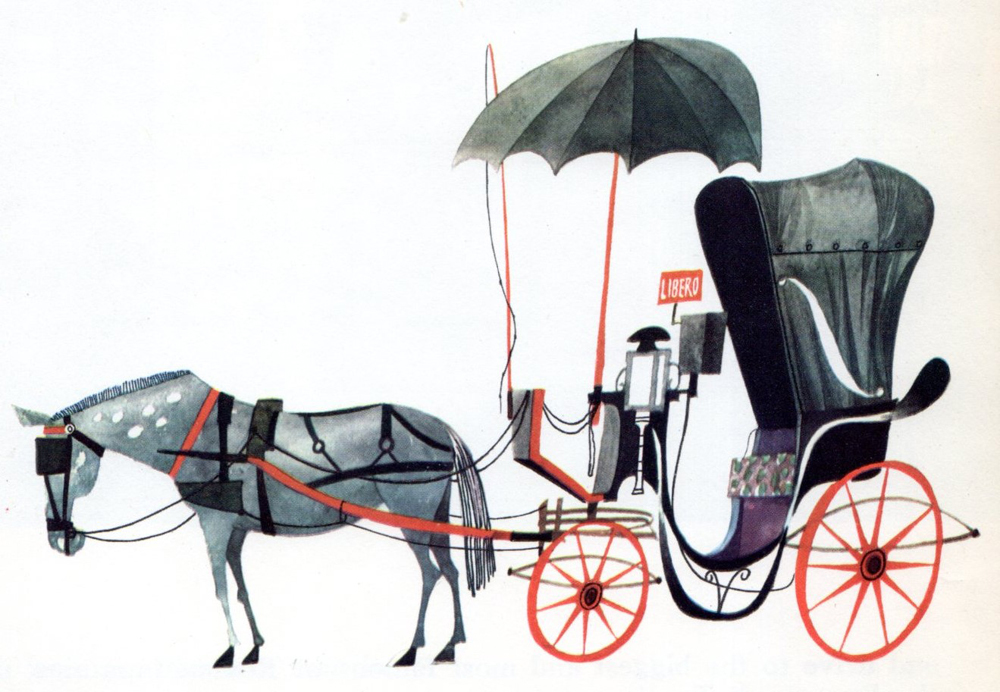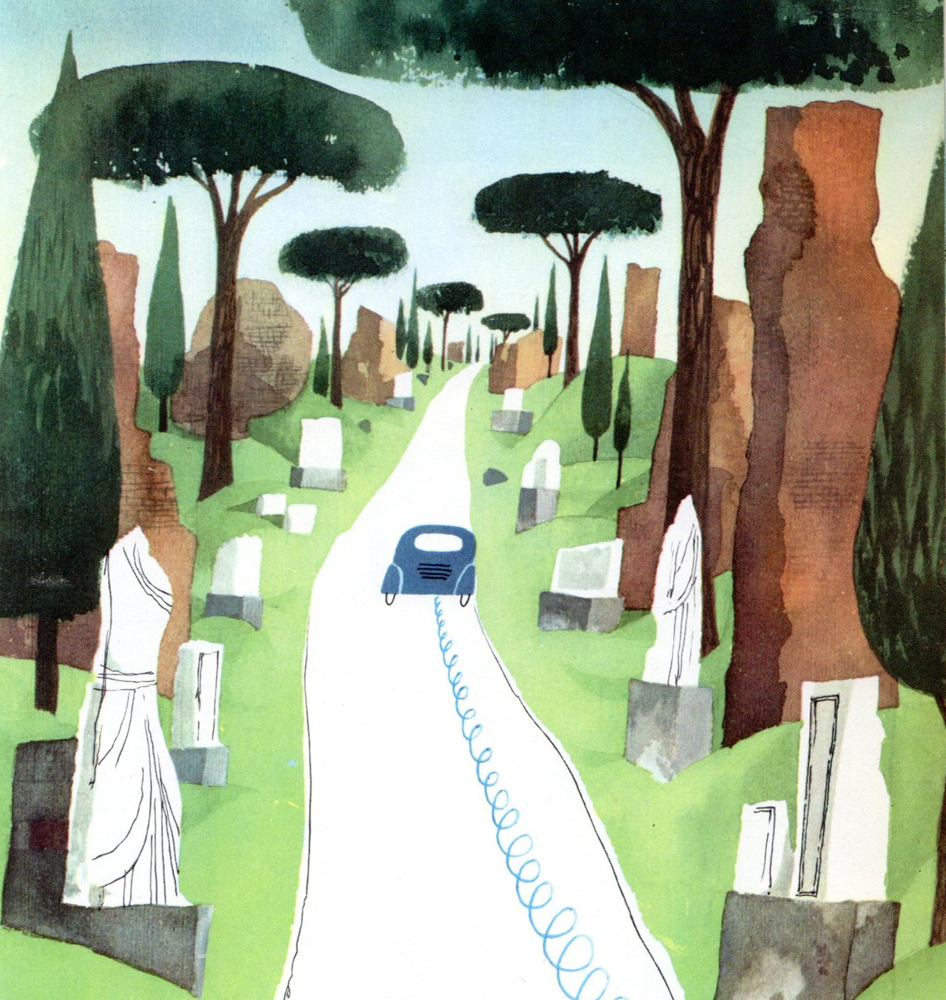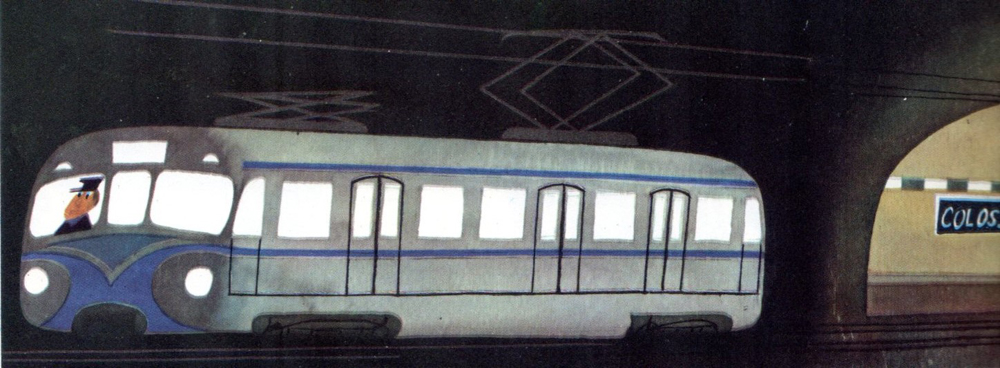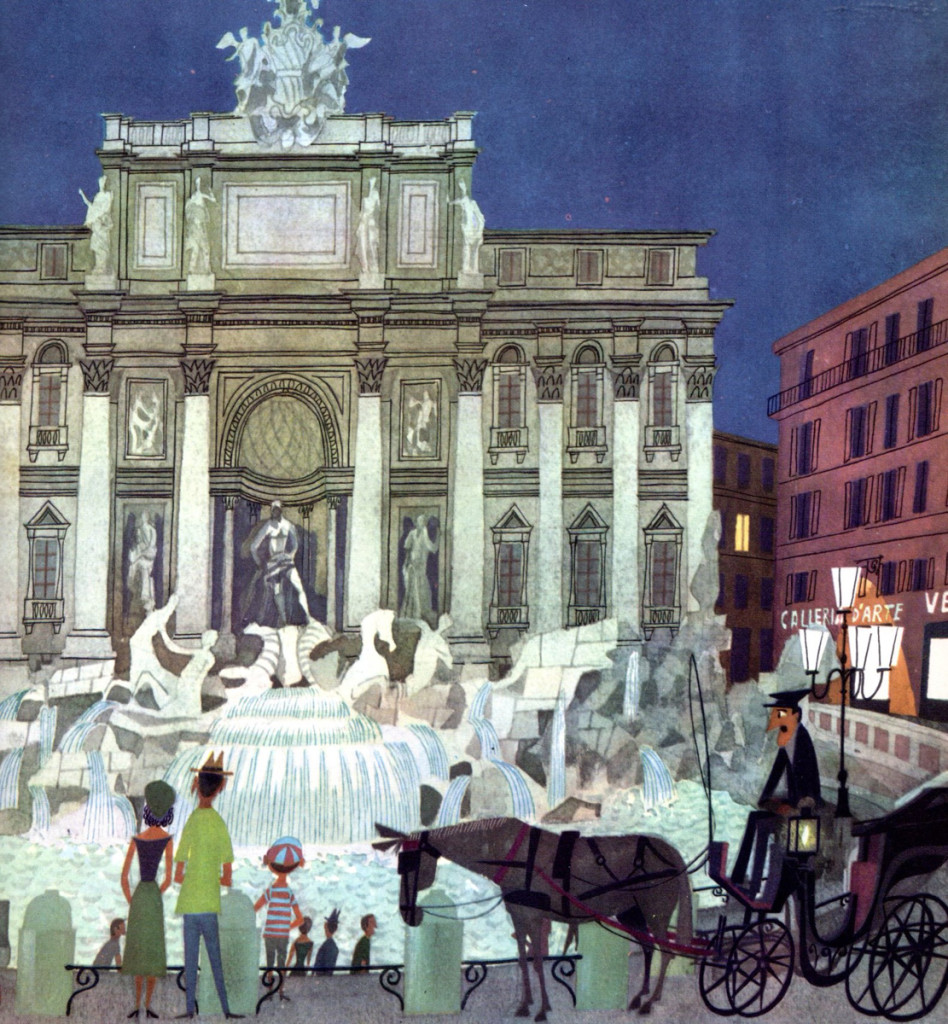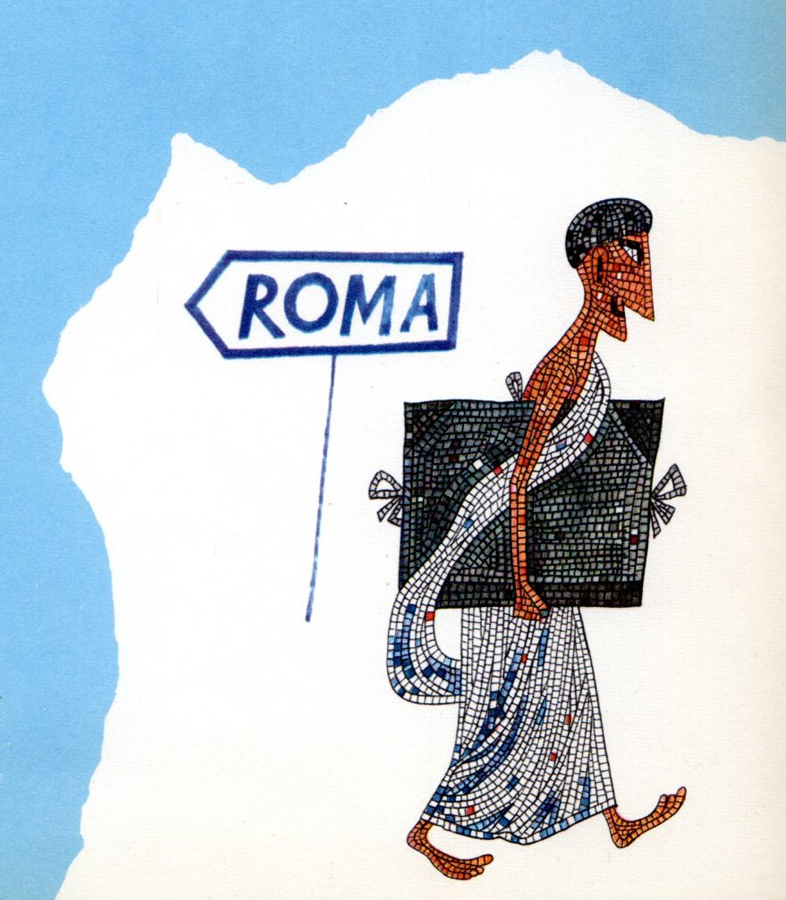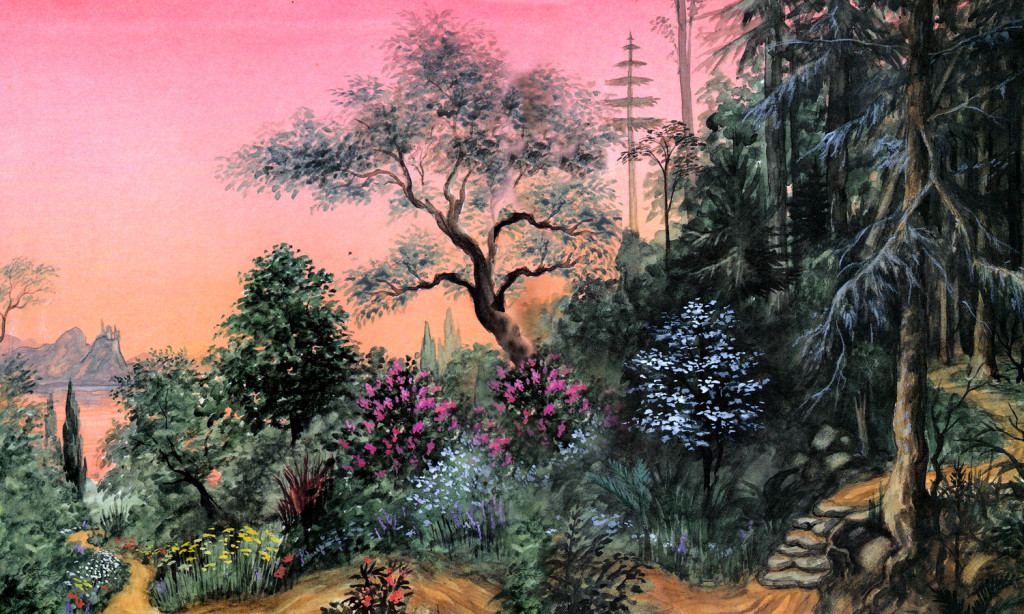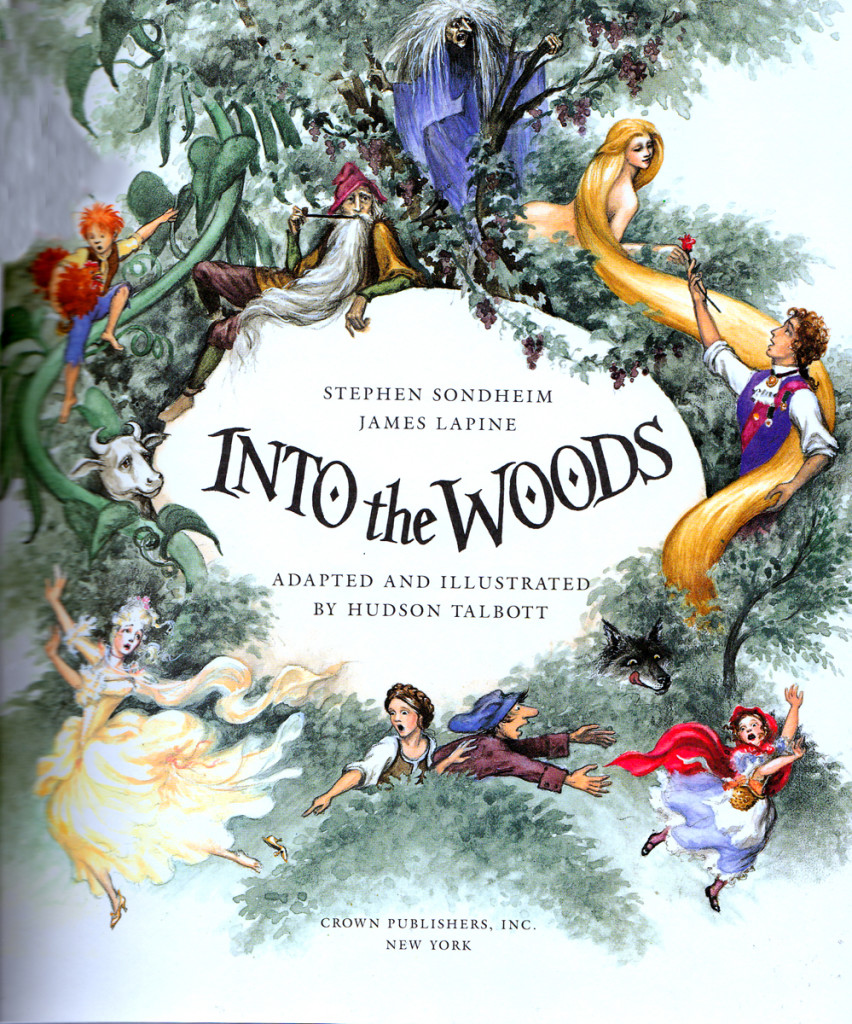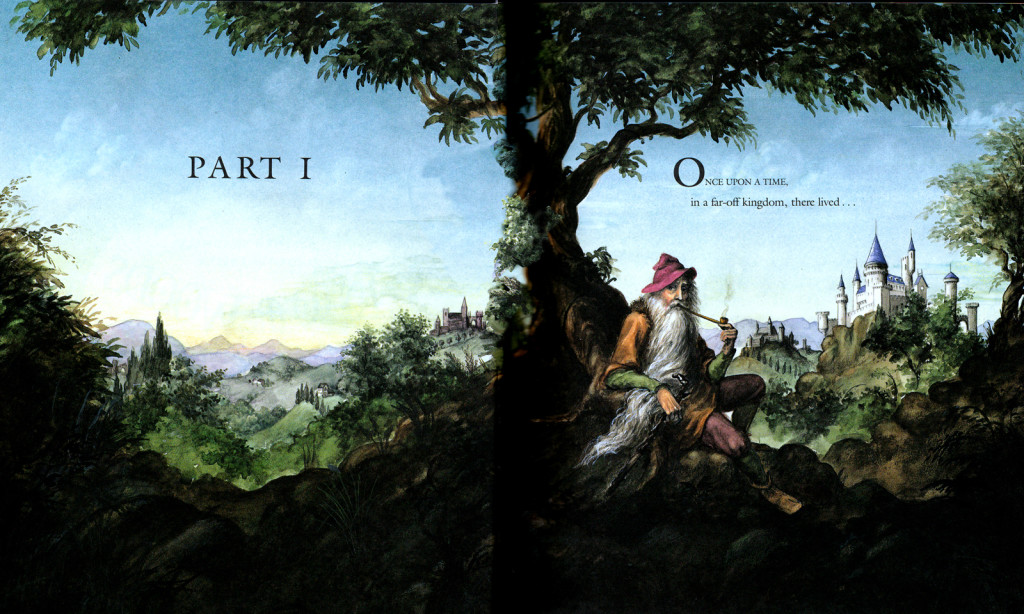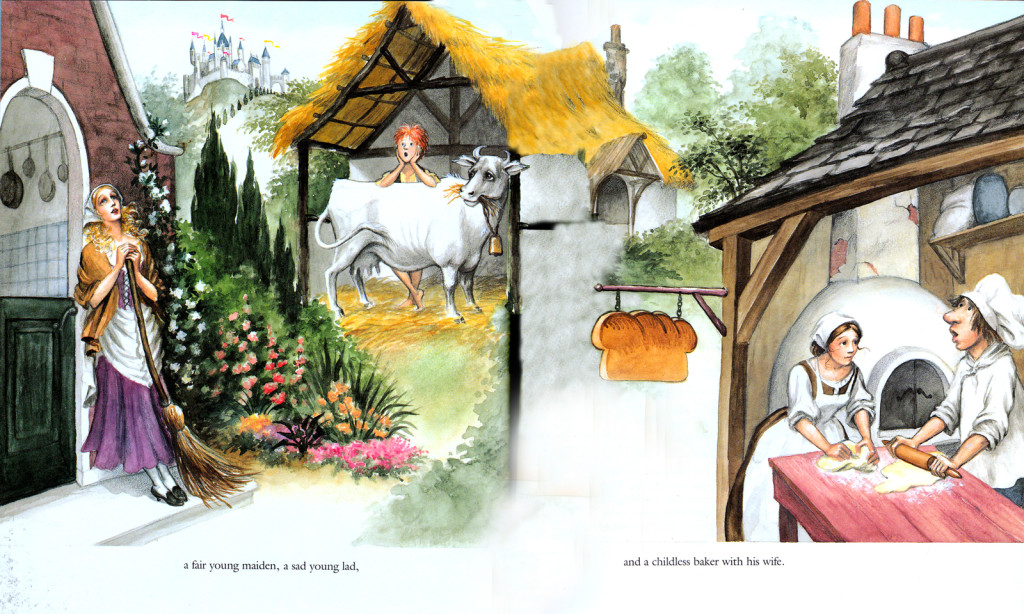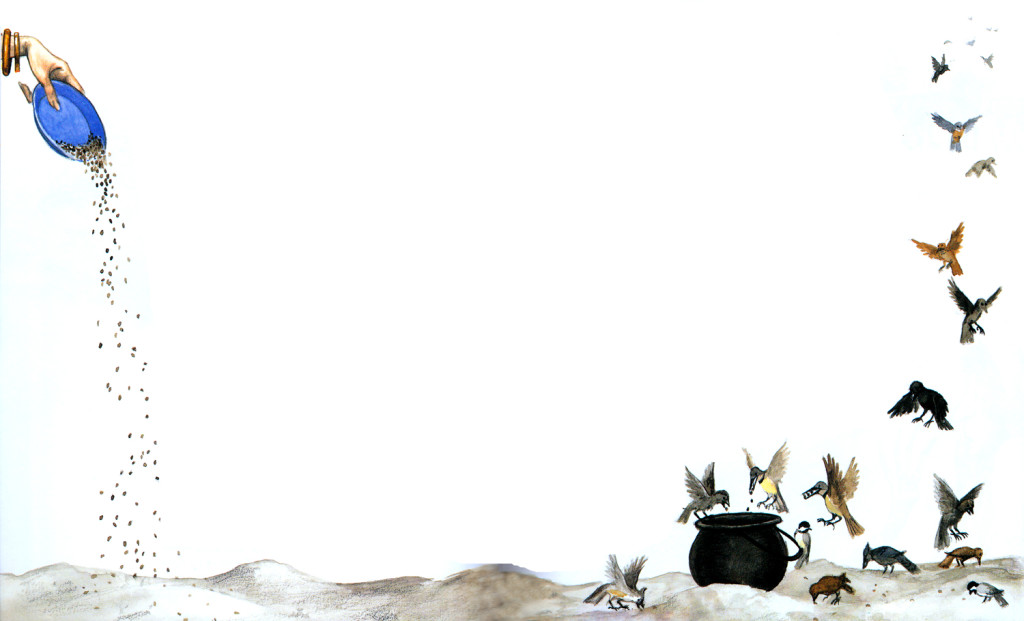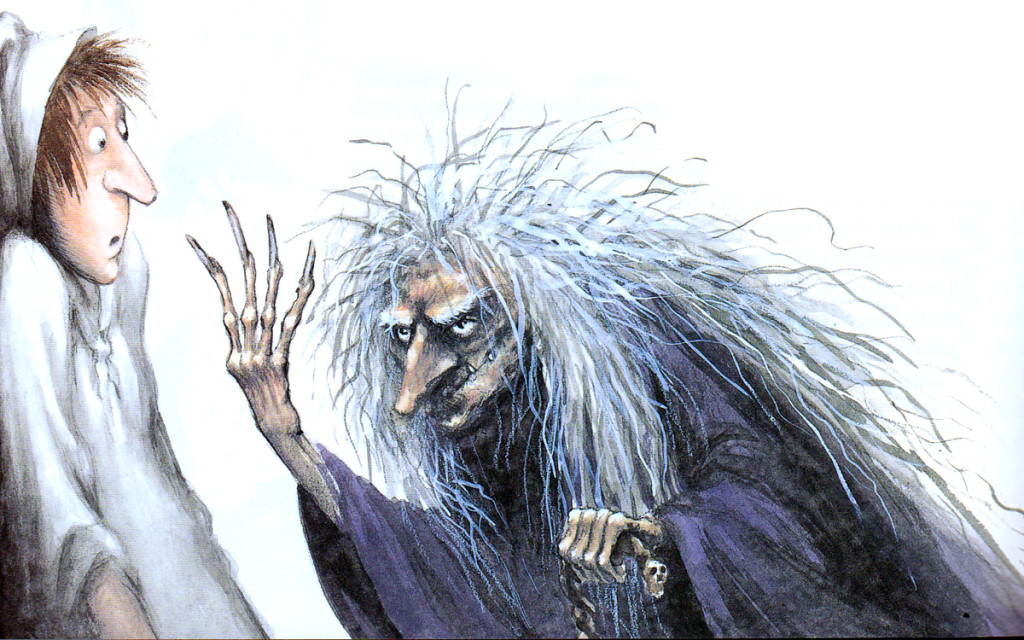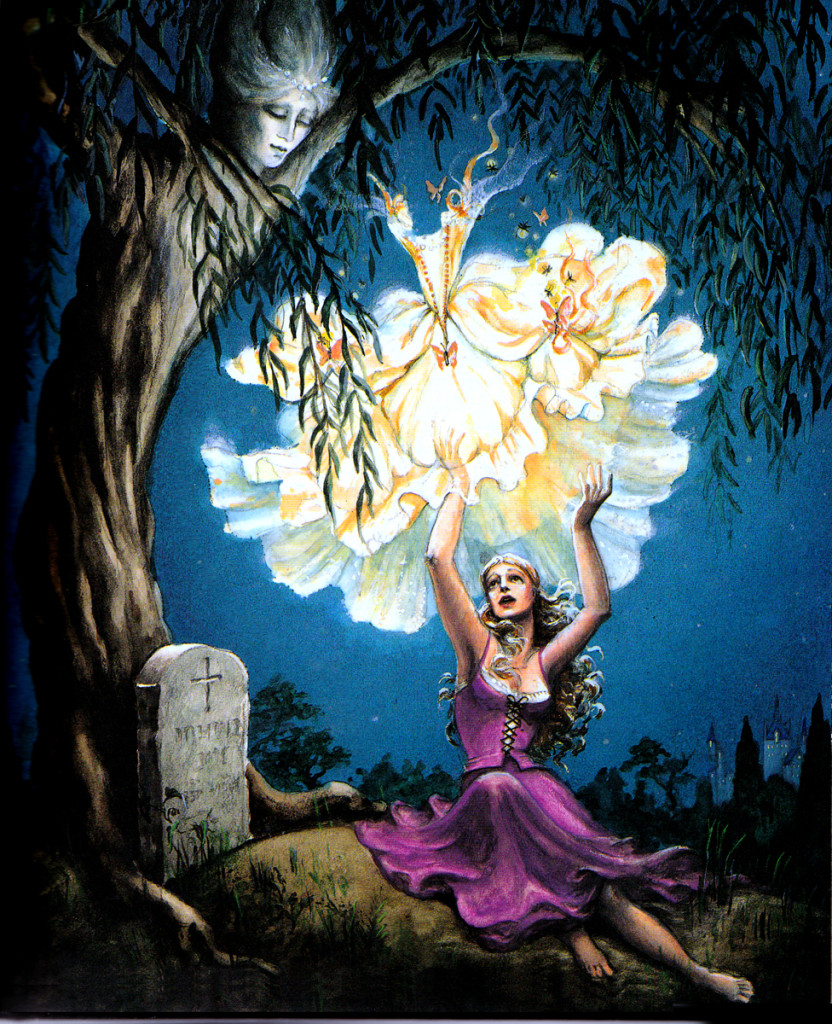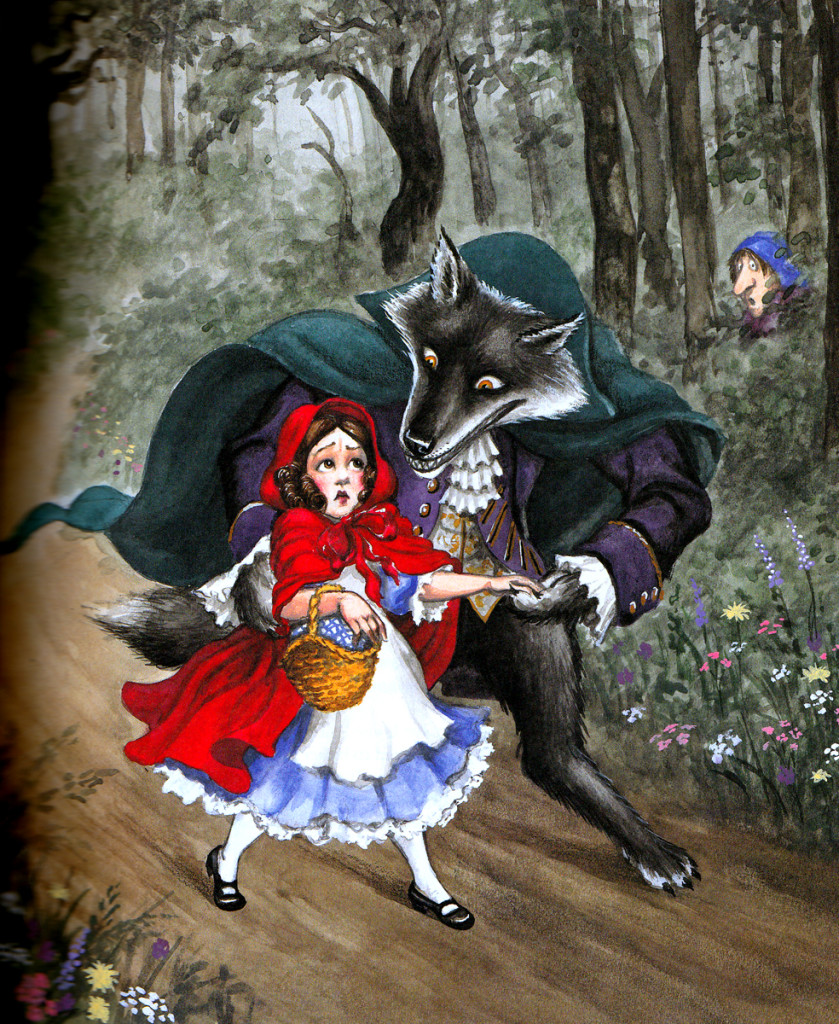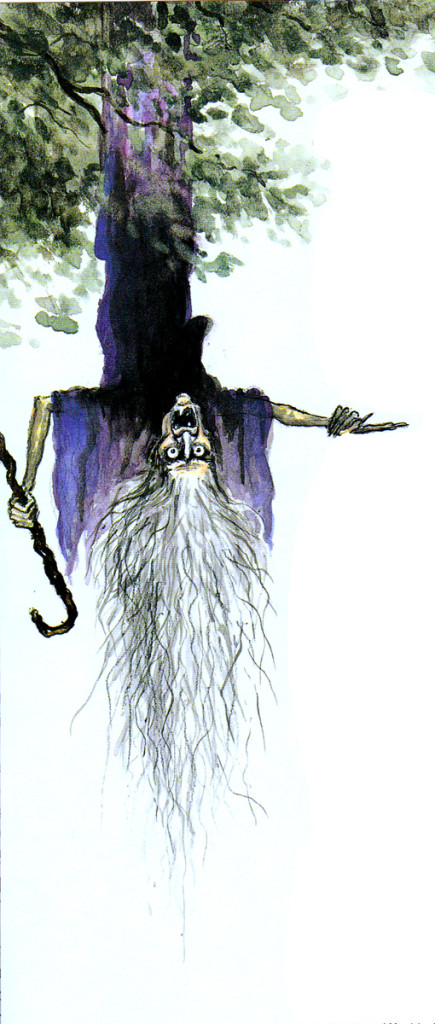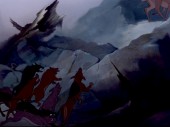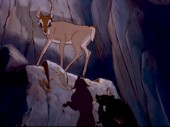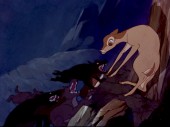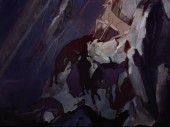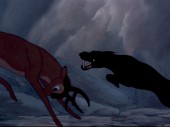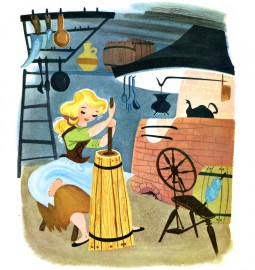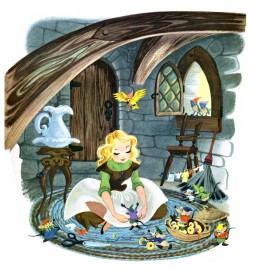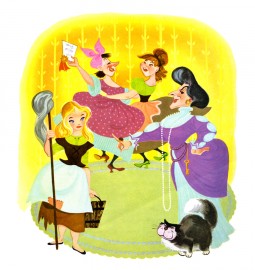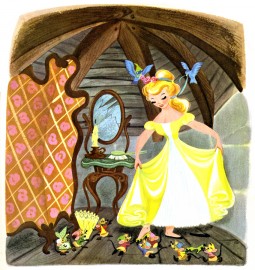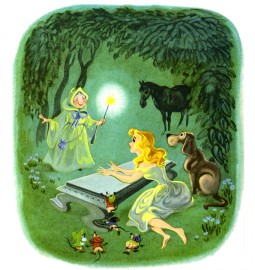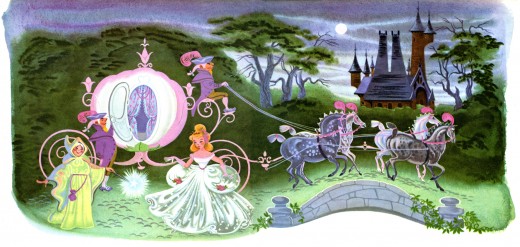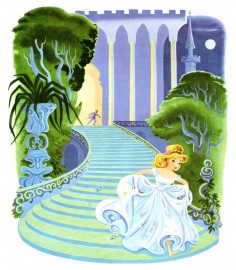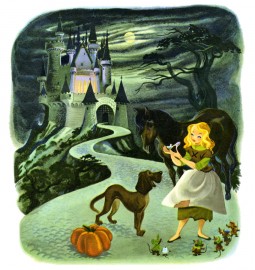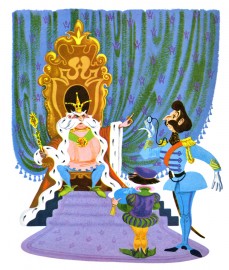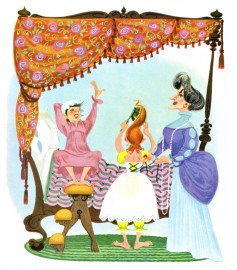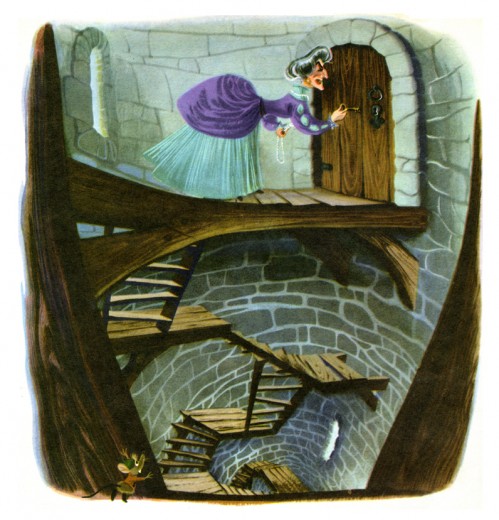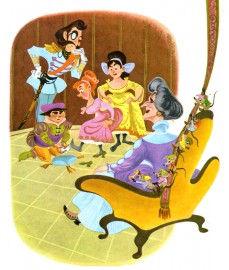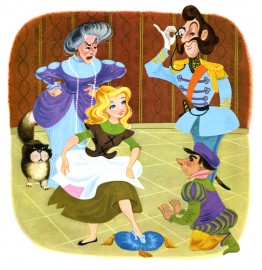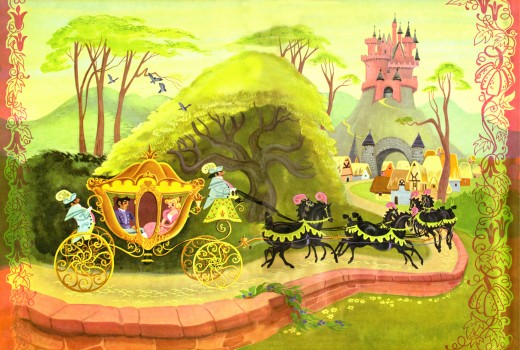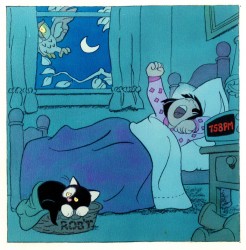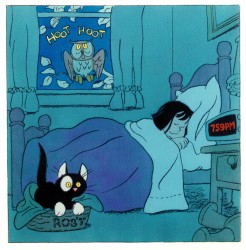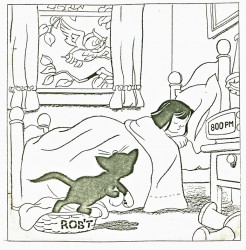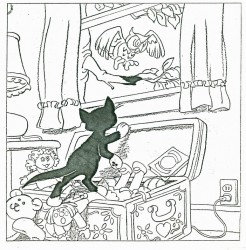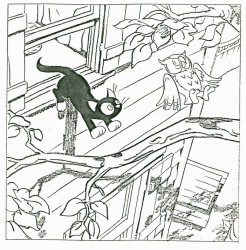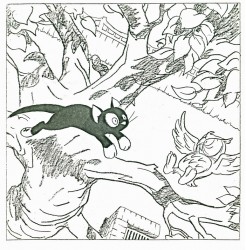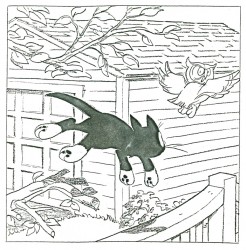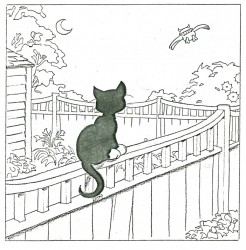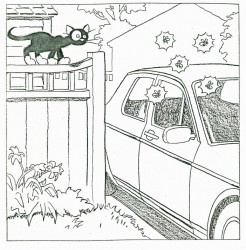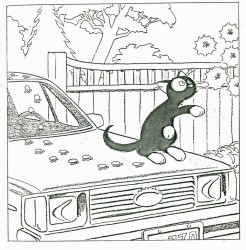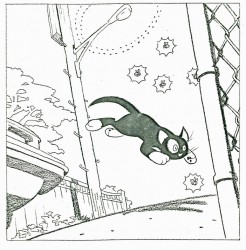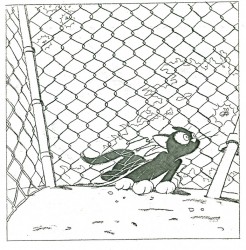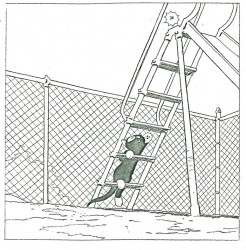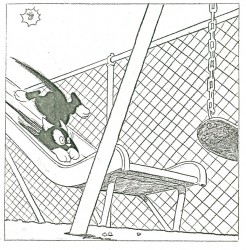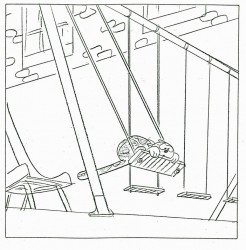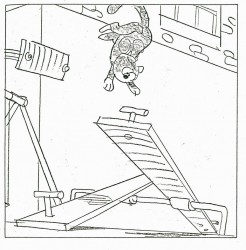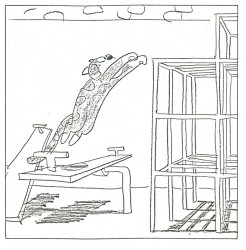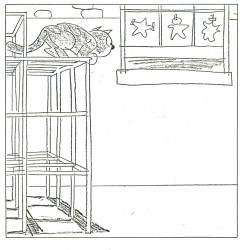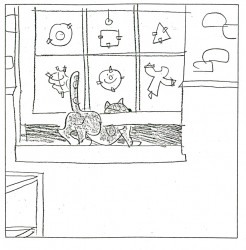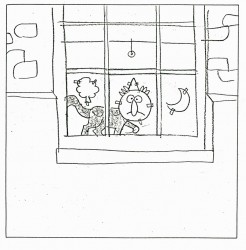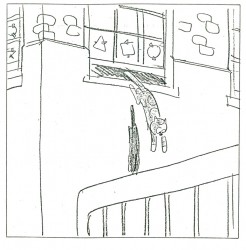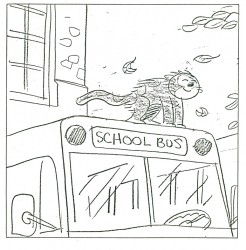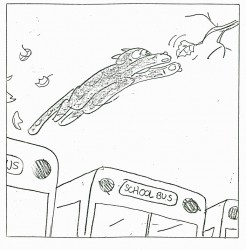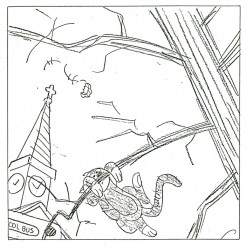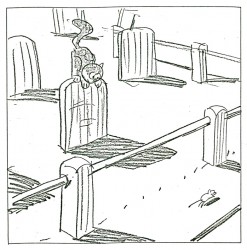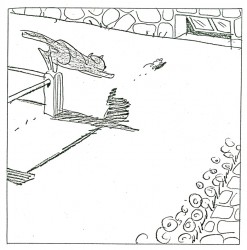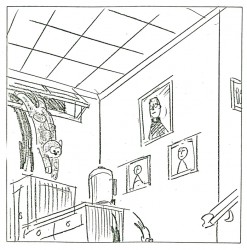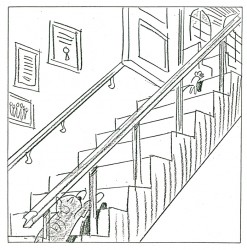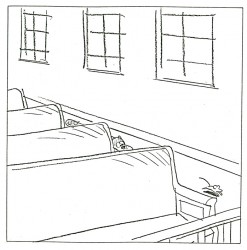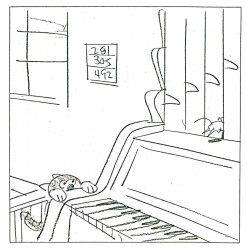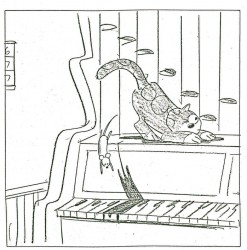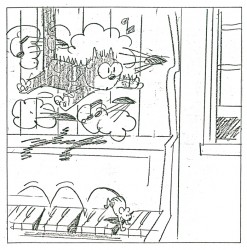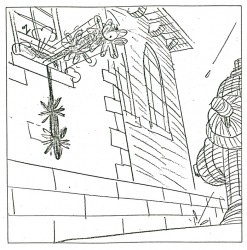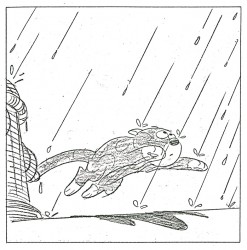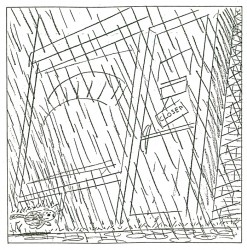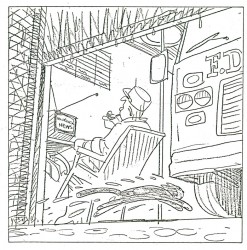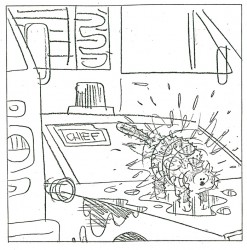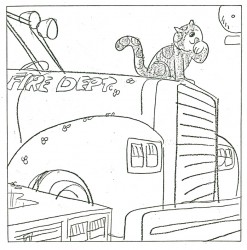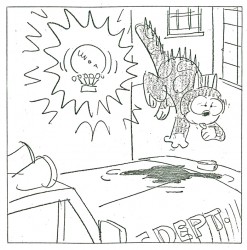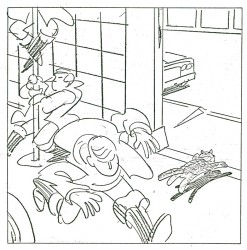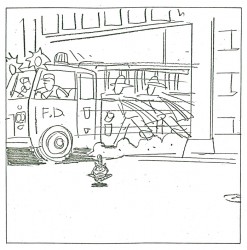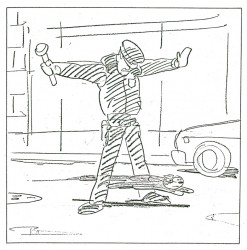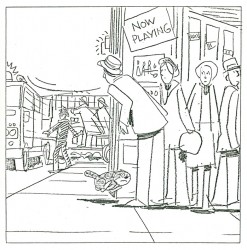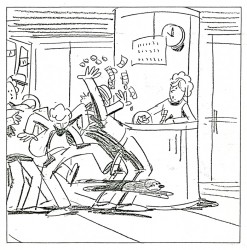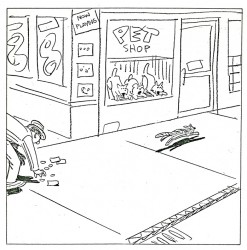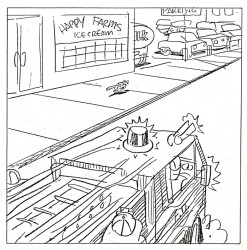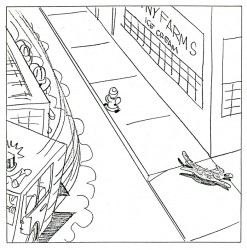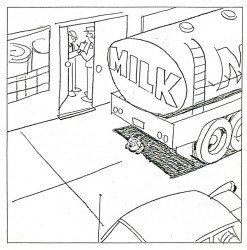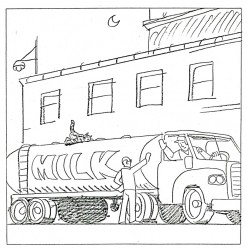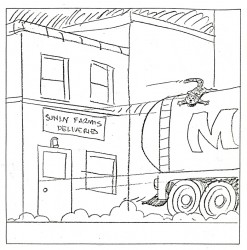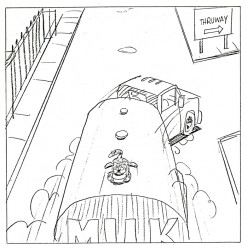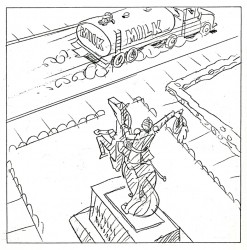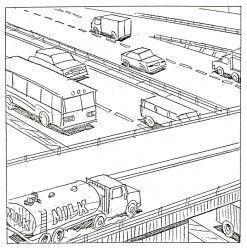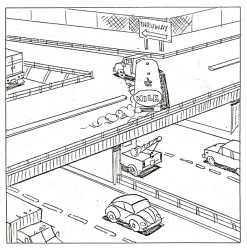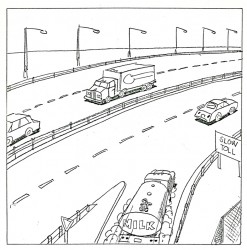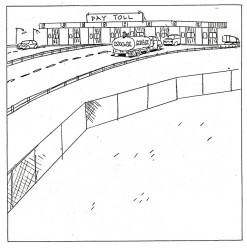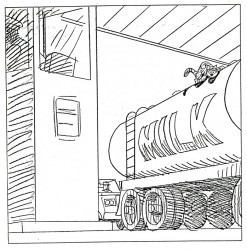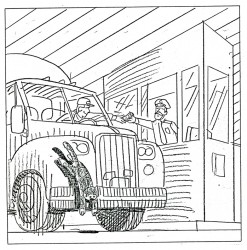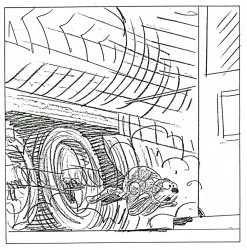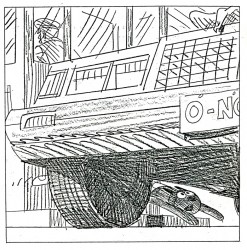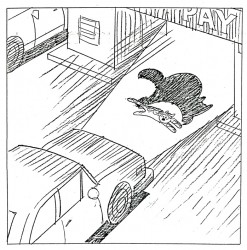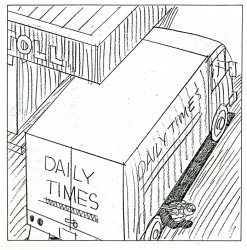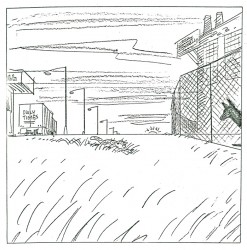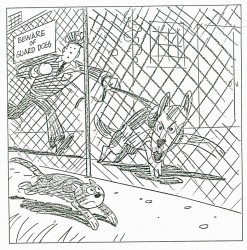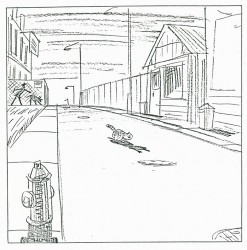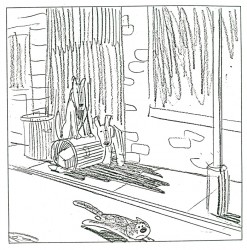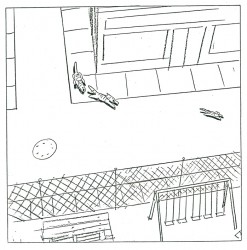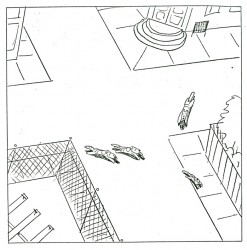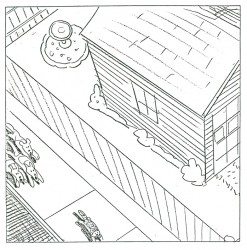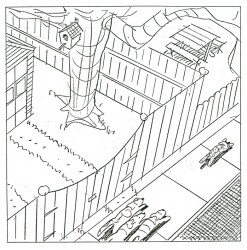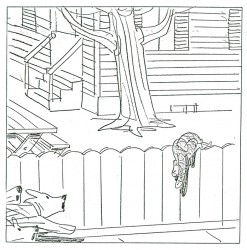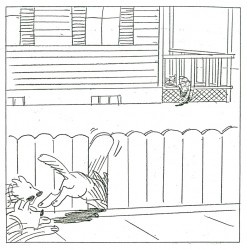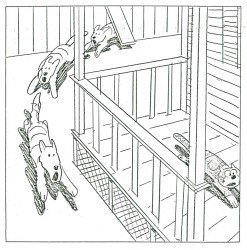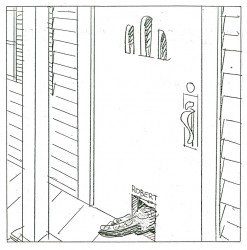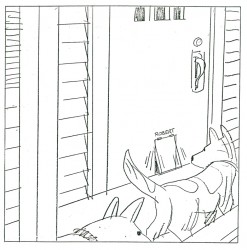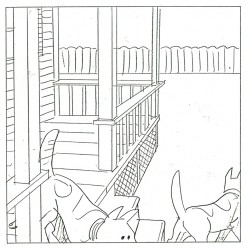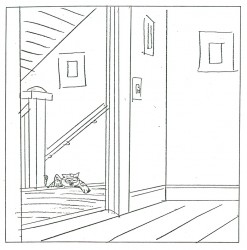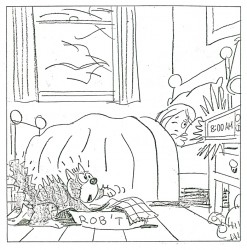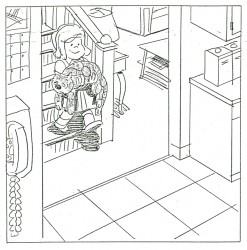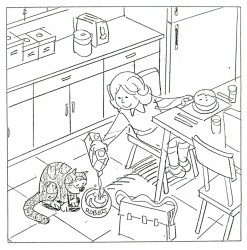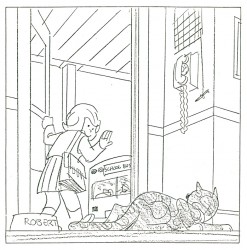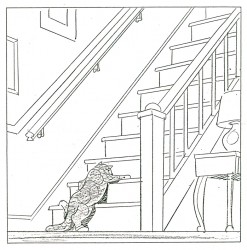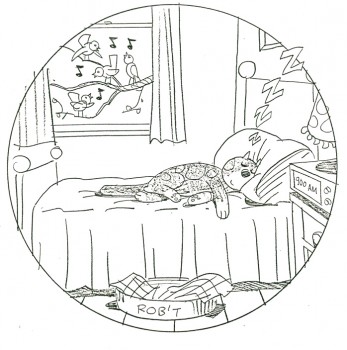Category ArchiveBooks
Animation &Animation Artifacts &Books &Comic Art &Layout & Design &SpornFilms &Story & Storyboards 28 Jun 2013 05:40 am
Jabberwock – repost
- To me, Lewis Carroll‘s nonsense poem, Jabberwocky, is one of the most brilliant pieces ever written. It’s always been important to me, and I’ve collected many versions of it in illustrated versions. Now that I mention it, let me confess that I’m a Lewis Carroll addict, and Jabberwocky is one of my favorites among his many poems.
In film, you have the one live action feature by Terry Gilliam; it’s a good film with a clunky monster in the end. In animation, professionally, I know of only two versions completed. One was by Jan Svankmajer done in 1974. I did a version of it in 1989. Mine, of course, sticks closer to the poem even though it is pretty “arty”.
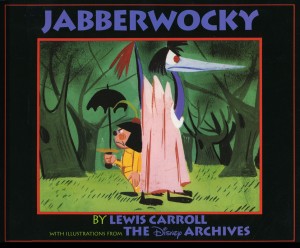 Apparently, there was also a version Disney was preparing as part of Alice In Wonderland. A book was published, credited to the “Disney Archives,” with illustrations from the preparatory drawings of this sequence. It’s obvious that the final versions of these drawings were done by one person, but there’s no record in the book of who did the finals. I’d read somewhere that Marc Davis had a lot to do with it, at one point. Though he obviously was most involved with Alice, herself.
Apparently, there was also a version Disney was preparing as part of Alice In Wonderland. A book was published, credited to the “Disney Archives,” with illustrations from the preparatory drawings of this sequence. It’s obvious that the final versions of these drawings were done by one person, but there’s no record in the book of who did the finals. I’d read somewhere that Marc Davis had a lot to do with it, at one point. Though he obviously was most involved with Alice, herself.
I’m not in love with the images in the book. I like the technique used, but I find the images too cute. Though, it’s amazing how current they look.
(Click on any image to enlarge.)
I’m going to give you a number of the book’s pages today and, in comparison, will follow it up with images from my version tomorrow.
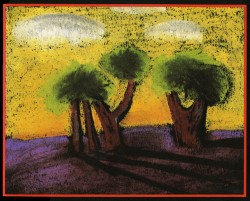
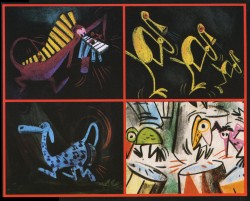
‘Twas brillig and the slithy toves
Did gyre and gimble in the wabe;
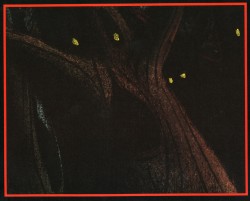
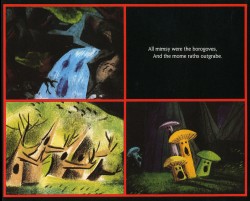
All mimsy were the borogoves,
And the mome raths outgrabe.
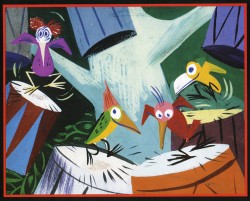
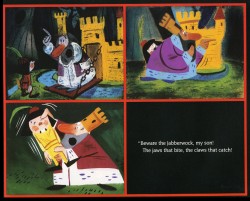
“Beware the Jabberwock, my son!
The jaws that bite, the claws that catch!”
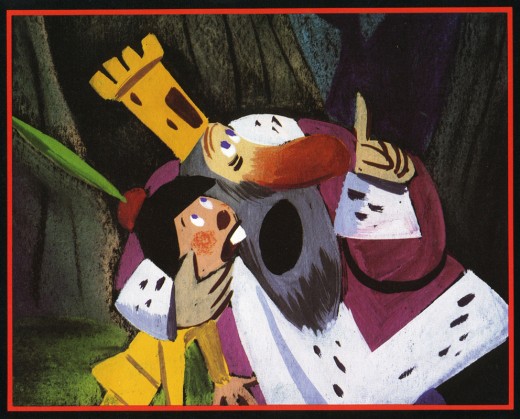
“Beware the Jubjub bird, and shun
The frumious Bandersnatch!”
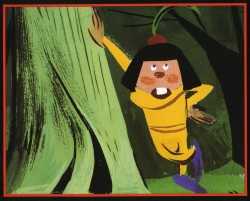
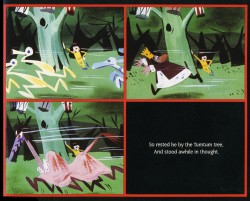
He took his vorpal sword in hand;
Long time the manxome foe he sought -
So rested he by the Tumtum tree
And stood awhile in thought.
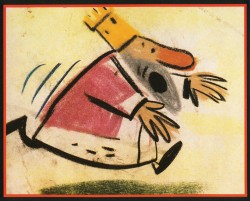
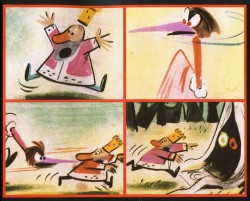
And as in uffish thought he stood,
The Jabberwock, with eyes of flame,
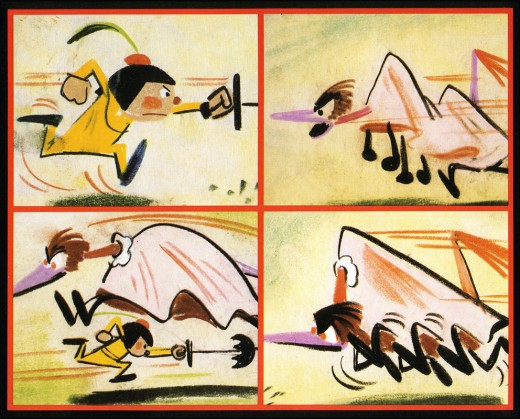
Came whiffling through the tulgey wood,
And burbled as it came!
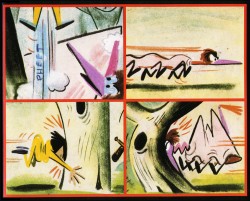
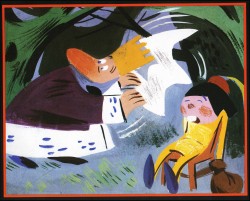
One, two! One, two! And through and through
The vorpal blade went snicker-snack!
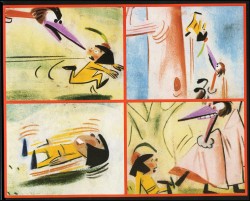
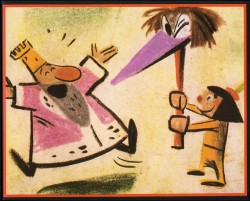
He left it dead, and with its head
He went galumphing back.
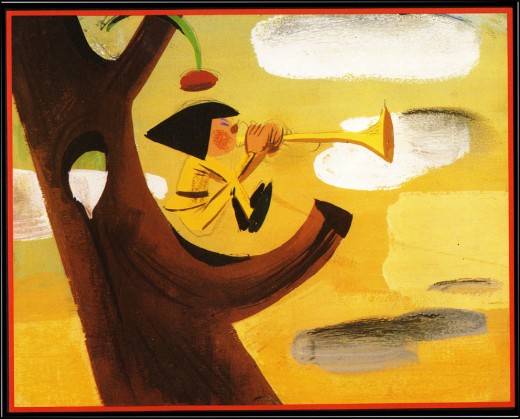
“And hast thou slain the Jabberwock?
Come to my arms, my beamish boy!
O frabjous day! Callooh! Callay!”
He chortled in his joy.
Jim Hill talks a bit about this book on his site in a letter response. here.
For amusement, you might check out this site for translations of this poem into 58 other languages, 23 parodies of the poem, and 10 explanations trying to define what Carroll meant by it.
I’d like to post here a few of the images from my short adaptation of the Lewis Carroll poem, Jabberwocky. In doing the film, I tried to mimic a style I’d used in my oil paintings and felt it was a bit successful. I don’t think the filmed version is all it could be – it was rushed to complete a package which included the 19 min. film, The Hunting of the Snark, as well as an animated documentary done about Lewis Carroll’s nonsense poems. Of course, the video package wouldn’t have made sense without including Jabberwocky.
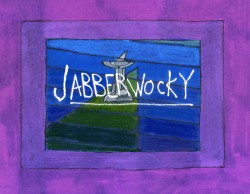
(click any image to enlarge.)
But I’ve scanned these images from the actual artwork and realize how well they’ve held up. I’d like to redo the film digitally someday and see where I can go with it.
Here are some of the images:
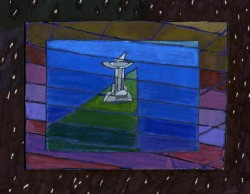
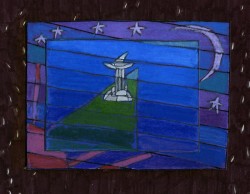
‘Twas brillig and the slithy toves,
Did gyre and gimble in the wabe;
All mimsy were the borogoves,
And the mome raths outgrabe.
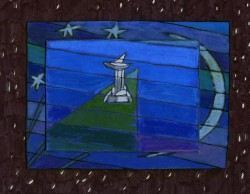
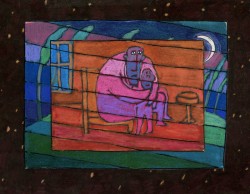
“Beware the Jabberwock, my son!
The jaws that bite, the claws that catch!â€
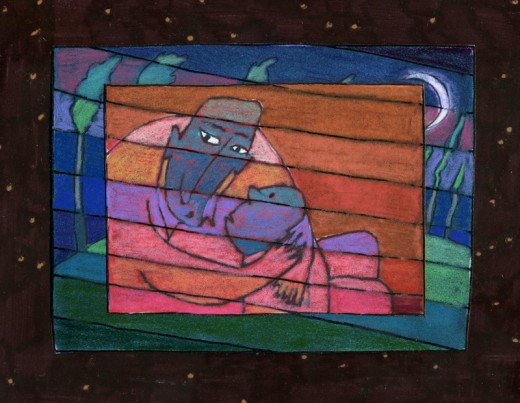
“Beware the Jubjub bird, and shun
The frumious Bandersnatch!â€
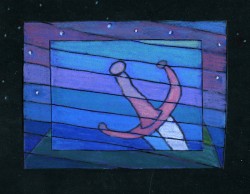
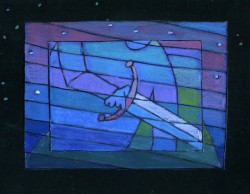
He took his vorpal sword in hand;
Long time the manxome foe he sought -
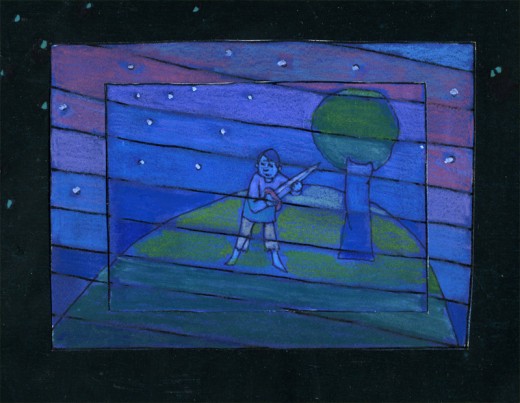
So rested he by the Tumtum tree
And stood awhile in thought.
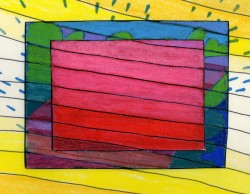
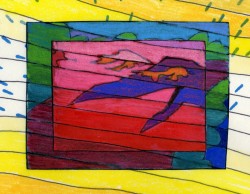
And as in uffish thought he stood,
The Jabberwock, with eyes of flame,
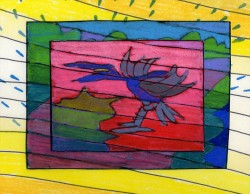
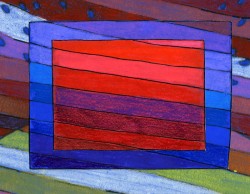
Came whiffling through the tulgey wood,
And burbled as it came!
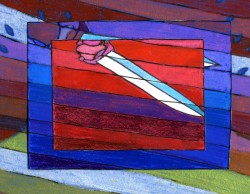
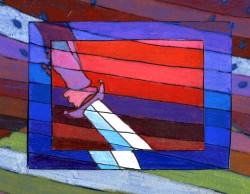
One, two! One, two! And through and through
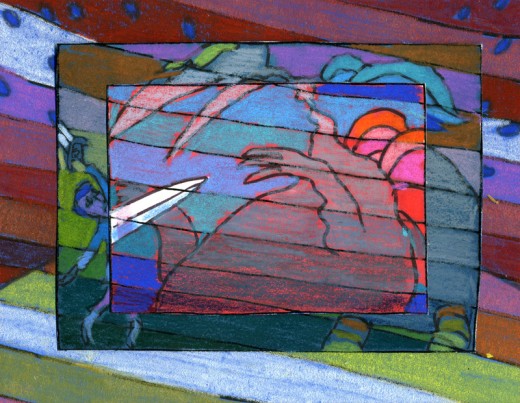
The vorpal blade went snicker-snack!
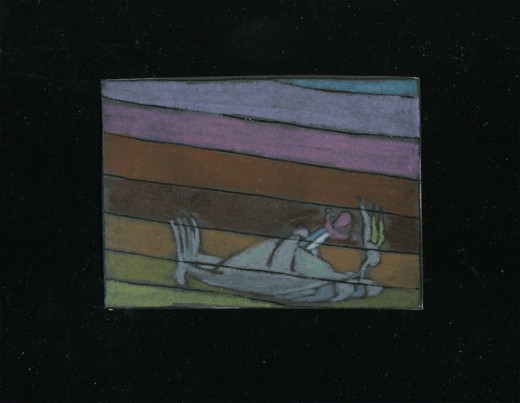
He left it dead, and with its head
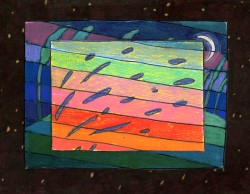
“And hast thou slain the Jabberwock?
Come to my arms, my beamish boy!
O frabjous day! Callooh! Callay!â€
He chortled in his joy.
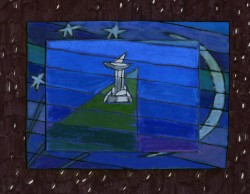
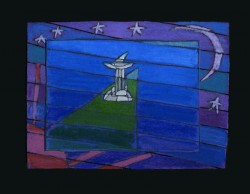
‘Twas brillig and the slithy toves
Did gyre and gimble in the wabe;
Bill Peckmann &Books &Comic Art &Disney &Illustration &repeated posts 26 Jun 2013 06:29 am
Kelly’s 3 Caballeros, again
- Suppose we had a comic book version of The 3 Caballeros; wouldn’t that be fun to see? What if the artwork were done completely by Walt Kelly; would that make it a treasure? I think it does. Bill Peckmann made my week when he sent me the scans to the following comic book. As Bill wrote to me: “Beautiful stuff, like Barks’ art, it’s timeless, looks like it was done yesterday.”
However there’s some residue floating about. Sorry about that, but it is Kelly’s residue.
Not only is the artwork out of this world, but the quality of the printing is brilliant. And the quality of the book, itself, is wonderfully well preserved. You only have to look below to read it. Take your time; this is great.
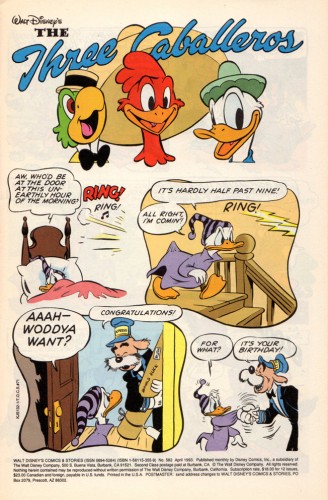 1
1
Many thanks to Bill Peckmann for sharing this gorgeous material with us.
Bill Peckmann &Books &Commentary &Illustration 20 Jun 2013 05:28 am
Peter de Seve
We, in animation, are all familiar with the work of the talented designer, Peter de Seve. Bill Peckmann has sent me a number of clippings of his work: covers from New Yorker magazines, ruff illustrations and articles about him. It makes for a good post on this talented artist.
Back in the mid 1990′s, friend Tom Yohe was art directing an ad agency print job and he called in Peter De Seve to do the illustration. Tom knew I was a huge De Seve fan and he was kind enough to give me Peter’s discarded roughs. Here they be…
The following is an article from a 1994 issue of STEP-BY-STEP GRAPHICS.
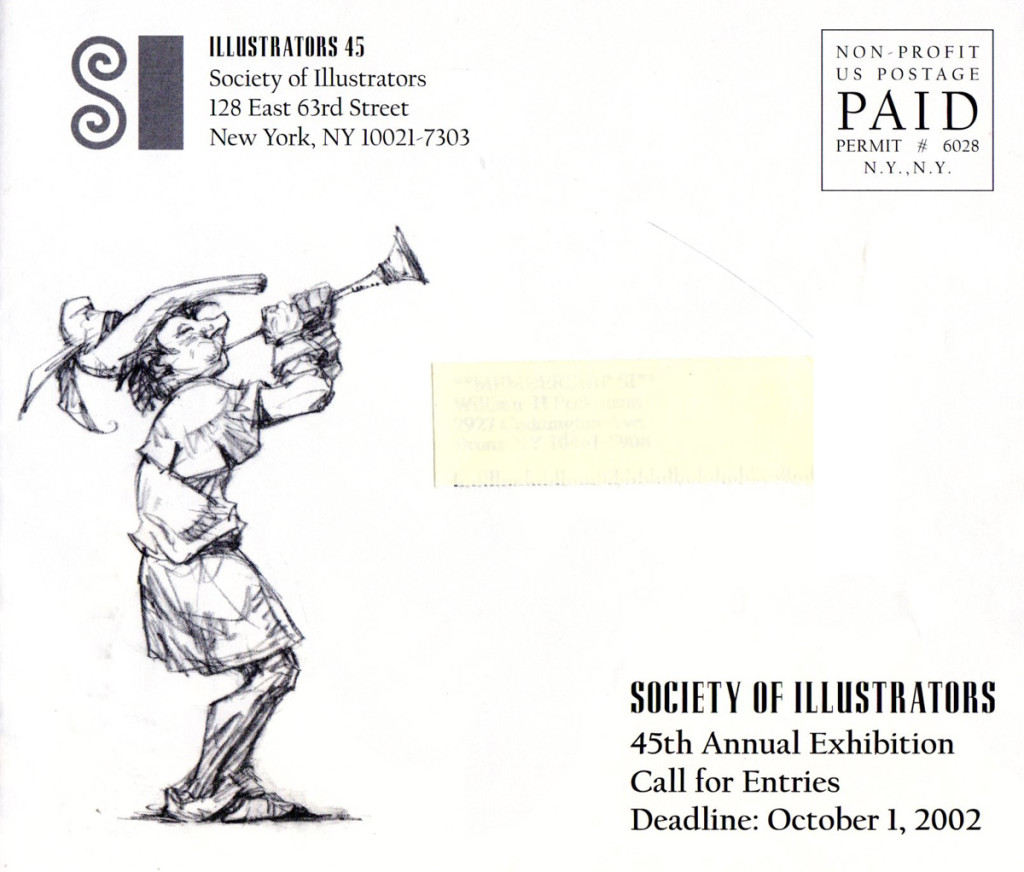 29
29
Books &Disney &Illustration &John Canemaker &Layout & Design 19 Jun 2013 06:53 am
Tenggren’s Arabian Nights
Gustaf Tenggren, of course, was the designer who worked at Disney’s studio during the thirties creating art which became models for Snow White, Bambi, and Pinocchio. John Canemaker wrote extensively about Tenggren in his book, Before the Animation Begins.
The artist moved into publishing after work at the Disney studio where he created The Poky Little Puppy for Little Golden Books. The Tales of the Arabian Nights was another of the many books Tenggren did for them. While visiting John Canemaker I saw the book and photographed some of the illustrations. Hopefully, the quality will be good enough so that I can share them with you. They’re completely original for Mr. Tenggren; not at all inspired by the many European-styled work he was known for. A true artist.
Books &Errol Le Cain &Events &Festivals &Illustration &repeated posts 17 Jun 2013 04:52 am
Mr. Mistoffelees – repost
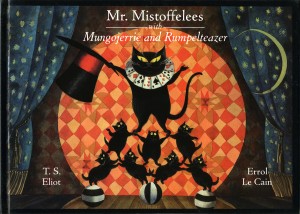 – I’ve posted many of Errol Le Cain‘s illustrations for his children’s books. Ever since coming across that very first paper-bound book, about Briar Rose, (meaning it was the very first I’d seen for sale) I’ve been an avid collector searching out any of the many books he created.
– I’ve posted many of Errol Le Cain‘s illustrations for his children’s books. Ever since coming across that very first paper-bound book, about Briar Rose, (meaning it was the very first I’d seen for sale) I’ve been an avid collector searching out any of the many books he created.
Le Cain was my hero for quite some time. He was a student of Dick Williams’ studio, had learned to animate there and was doing the backgrounds for Dick’s feature The Thief and the Cobbler. Dick pushed him, at one time, to do a film on his own, The Sailor and the Devil, with, of course, Dick’s harsh scrutiny.
I present here his illustrations for the first half of the book, Mr. Mistoffelees with Mungojerrie and Rumpelteazer. The latter half of the book included the Mungojerrie and Rumpelteazer part which we’ll save for another time.
This story is part of the Old Possum’s Book of Practical Cats by T.S. Eliot.
That was, of course, the source material on which Webber and Nunn based their show CATS. These images are so attractive and stylish, I was quite curious to know whether Andrew Lloyd Webber had seen the books. Especially when he was about to put CATS onto the screen as an animated film.
Here are the illustrations by Le Cain:
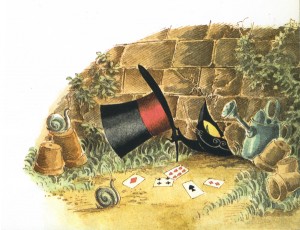
________ (Click any image you’d like to enlarge.)
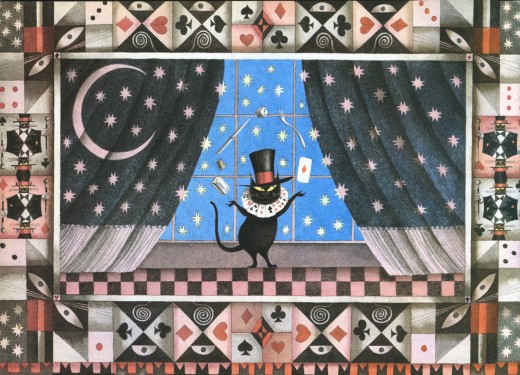
_____________Mr. Mistoffelees
___________You ought to know Mr. Mistoffelees !
___________The Original Conjuring Cat -
___________(There can be no doubt about that).
___________Please listen to me and don’t scoff All his
___________Inventions are off his own bat.
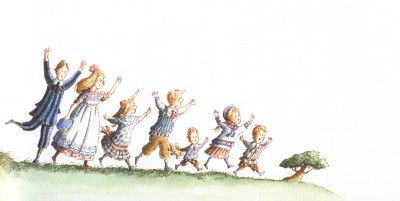
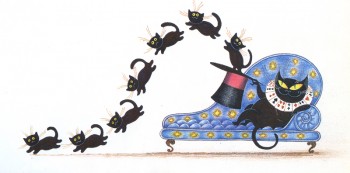
Bill Peckmann &Books &Illustration 14 Jun 2013 04:06 am
Sasek’s Rome
Talk about “Modern Cartoon” Bill Peckman sent me this book about Rome. It’s a beauty and deserves to be shown off. Thanks to Bill for calling attention to Miroslav Sasek‘s work.
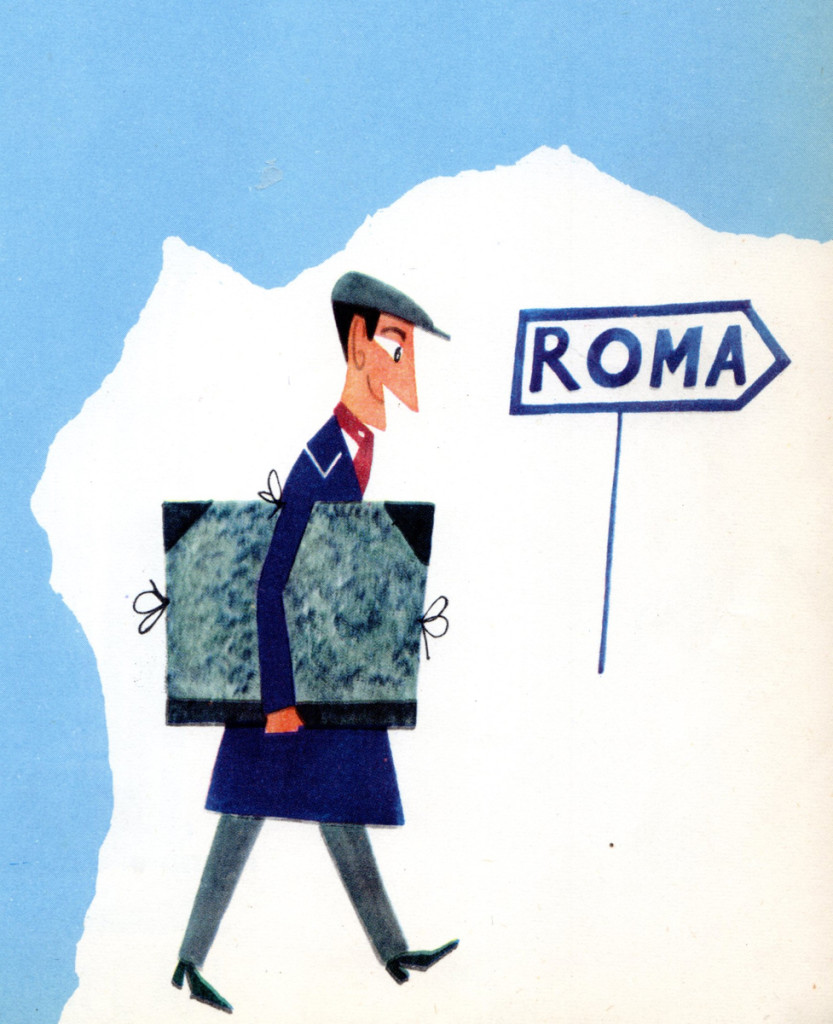 1
1
Check out this Pinterest facebook page.
Books &Illustration &Theater 12 Jun 2013 05:41 am
Into the Woods Book
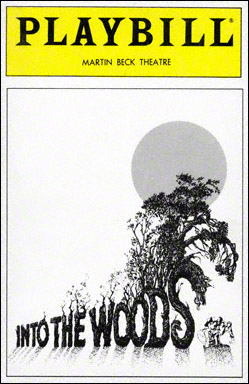 Into the Woods is one of the highlights from the number of musicals Stephen Sondheim has written. The show takes many famous fairy tales and plays them out through the first half of the show.
Into the Woods is one of the highlights from the number of musicals Stephen Sondheim has written. The show takes many famous fairy tales and plays them out through the first half of the show.
With the start of the second Act, we learn the fate of all these fairy tale characters. They’re all victims of their own cupidity. Jack, for example, stupidly sells his family cow for five “magic” beans. The beans are discarded by his angry mother, and Jack climbs into the heavens on that beanstalk.
Once there, Jack falls into his greatest vices, stealing a chicken that lays golden eggs and a magic golden harp. When the giant chases him to get his things back, he falls to earth and dies. Sondheim and cowriter, James Lapine, take the story more seriously and has all the evil of the characters pla itself out, with their suffering for their own irresponsibility.
The show was somewhat successful when it was written, and it was immediately designed to become a live action/animation mix m0vie. Rob Minkoff, one of the directors of The Lion King as well as Stuart Little, was set to direct the film. It eventually fell through, and it’s back in production again with a different director, Rob Marshall (Chicago). Needless to say, there’ll be no animation in the movie anymore. A lot of computer effects.
When it was just a NY theatrical musical, the piece was turned into a large children’s book. I thought it might be fun to post some of it here. So, as of today I’ll offer about two or three posts with a focus on the book’s writer/illustrator, Hudson Talbott.
Talbott was the original writer of “We’re Back! A Dinosur’s Story.” That was made into an animated feature for Steven Spielberg back in 1993. He’s also done many designs and illustrations for the Metropolitan Opera Guild and the Metropolitan Museum of Art.
Here are some of the first pages of the book. Note that I’m only posting the illustrations.
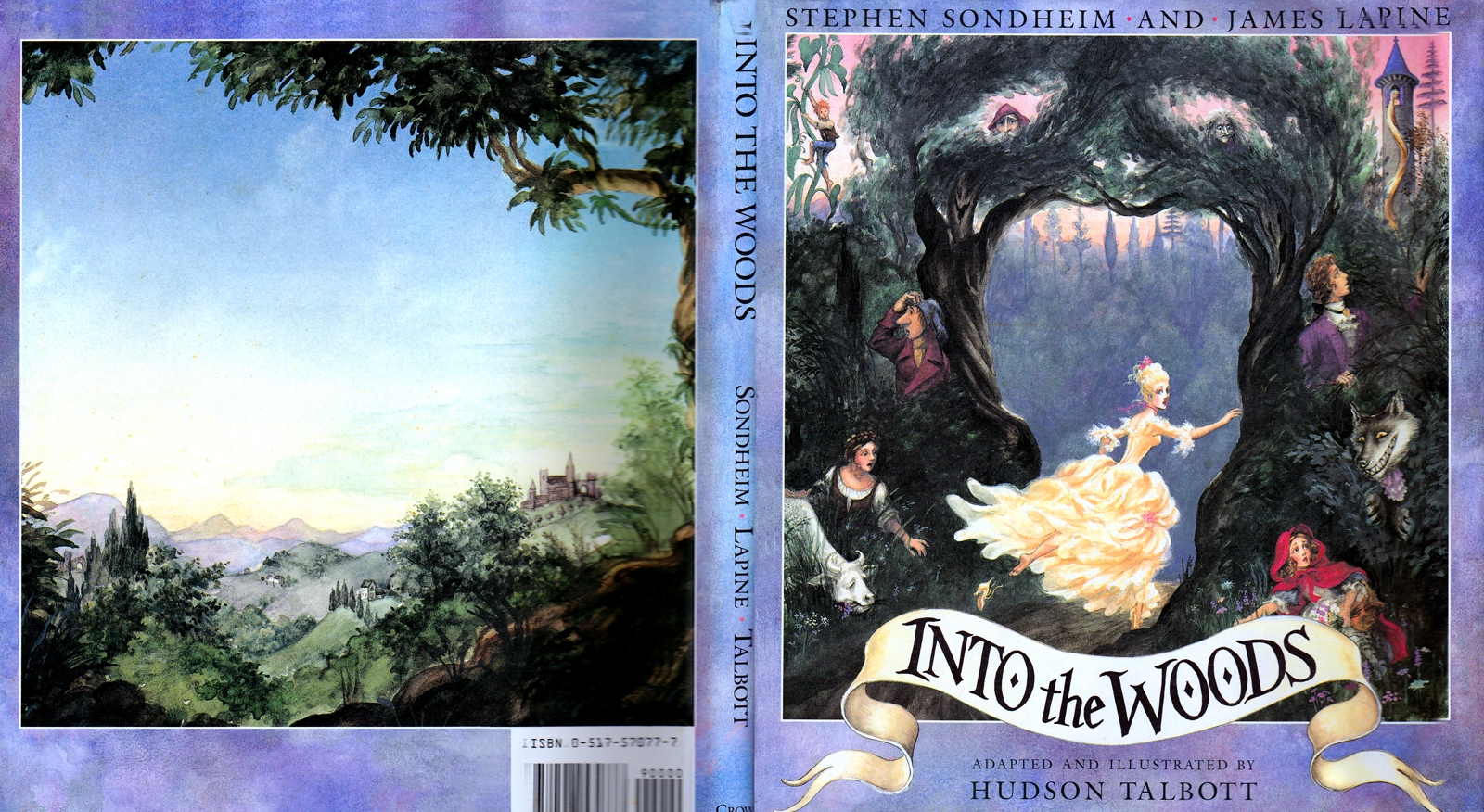
Dust Jacket Art
No, this is not upside down, except by design.
Animation &Books &Disney &repeated posts 11 Jun 2013 03:42 am
Retta Scott and Cinderella – repost
– Retta Scott‘s name was always an intriguing one for me.
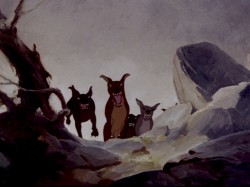 She was an animator on Bambi, Dumbo and Plague Dogs. She was layed off at Disney’s when they hit a slump in 1941 but came back to do a number of Little Golden Books for Disney. The most famous of her books was her version of Cinderella, one which was so successful that it remains in print today as a big Little Golden Book.
She was an animator on Bambi, Dumbo and Plague Dogs. She was layed off at Disney’s when they hit a slump in 1941 but came back to do a number of Little Golden Books for Disney. The most famous of her books was her version of Cinderella, one which was so successful that it remains in print today as a big Little Golden Book.
When asked why females weren’t animators at the studio, the Nine Old Men who traveled the circuit, back in the 1970′s, often mentioned her. They usually also said that she was one of the
.
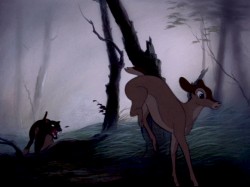
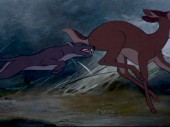
most forceful artists at the studio, but her timing always needed some help (meaning from a man.) Ms. Scott was known predominantly for her animation in Bambi. Specifically, she’s credited with the sequence where the hunter’s dogs chase Faline to the cliff wall and Bambi is forced to fight them off.
The scene is beautifully staged and, indeed, is forceful in its violent, yet smooth, movement. I was a young student of animation, so this sequence had a long and lasting impression on me.
Here are some of her illustrations for Cinderella published in 1950 to tie in with the Disney film. Oddly, the illustrations don’t completely look like the film’s characters. The cat and mice are close, but Cinderella, herself, is very different, less realistic. She looks more like a Mary Blair creation. When I was young, I was convinced that these were preproduction illustrations done for the film. If only.
I won’t post all the illustrations of the book; I want to give an indication of her work, and I think this should be enough to do that.
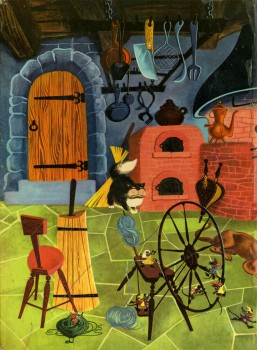
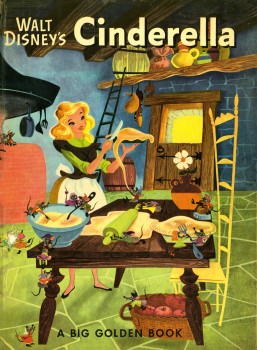
(Click any image to enlarge.)
Action Analysis &Animation &Articles on Animation &Books &Commentary &Disney &Illustration &Richard Williams &Rowland B. Wilson &SpornFilms &Story & Storyboards &Tissa David 10 Jun 2013 03:31 am
Illusions – 3
I’ve written two posts about Frank Thomas and Ollie Johnston‘s book, The Illusion of Life the last couple of weeks. I came to the book only recently and realizing that I’d never really read the book, I thought it was time. So in doing so, I’ve found that I have a lot to write about. The book has come to be accepted almost as gospel, and I decided to give my thoughts.
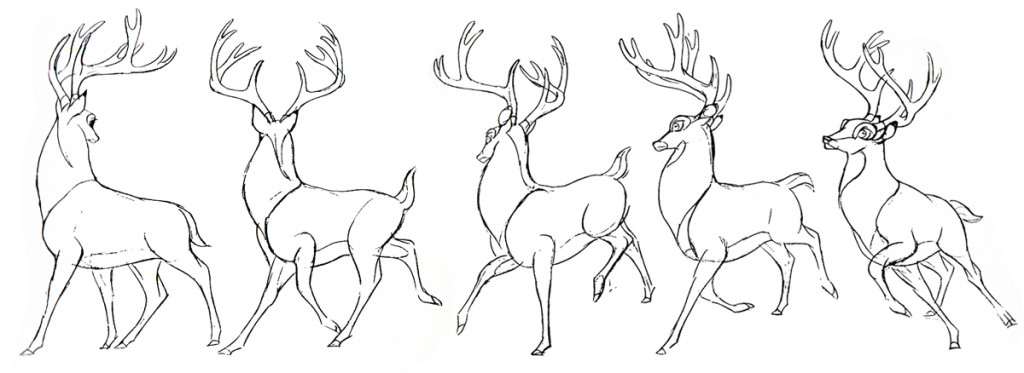
There were two major complaints I’ve had with what I’ve read in their book so far, and I spent quite a bit of time reviewing those.
- First out of the box, I was stunned to read that these two of Disney’s “nine old men” said that they’d originally believed that each prime animator should control one, maybe two characters in the film. Then, later in life they decided that an animator should do an entire scene with all of the characters within it. This is not what I’d seen the two (or the nine) do in actual practice. post 1
Secondly, they argue for animating in a rough format, and they give solid reasons for this. As a matter of fact, it was Disney, himself, in the Thirties who demanded the animators work rough and solid assistants who could draw well back them up. Then much later in the book the two author/animators suggest that it’s better for an animator to work as clean as possible with assistants just doing touch-up. This helped out the Xerox process, but didn’t necessarily help for good animation. post 2
The book starts out sounding like it’s going to be a history of Disney animation, but then starts getting into the rules of animation (squash and stretch, overlapping action and anticipation and all those other goodies) exploiting Disney animation art in demonstration. Soon the book moved into storytelling and how to try to keep the material fresh and interesting. It all becomes a bit obvious, but you keep hoping that some great secret will be revealed by the two masterful oldsters.
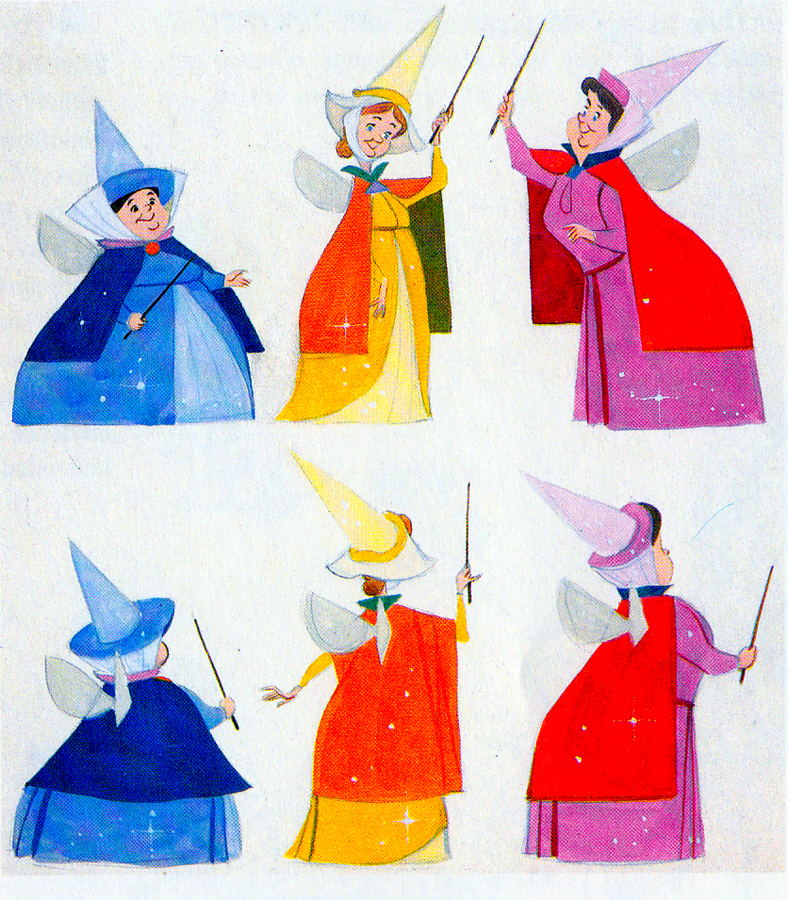 They do go into depth about how to develop characters when making animated films. They offer lots of examples from Orville, the albatross in The Rescuers to the three fairies in Sleeping Beauty, but their greatest attention goes to Baloo the Bear in The Jungle Book. They were having a hard time with this guy; they had been trying to do an Ed Wynn type character, until Walt Disney, himself, suggested Phil Harris. Once they auditioned Harris, they knew they were on the right track, and the character kept grabbing more screen time and grew ever larger. In the end, audiences just loved him.
They do go into depth about how to develop characters when making animated films. They offer lots of examples from Orville, the albatross in The Rescuers to the three fairies in Sleeping Beauty, but their greatest attention goes to Baloo the Bear in The Jungle Book. They were having a hard time with this guy; they had been trying to do an Ed Wynn type character, until Walt Disney, himself, suggested Phil Harris. Once they auditioned Harris, they knew they were on the right track, and the character kept grabbing more screen time and grew ever larger. In the end, audiences just loved him.
Personally, I’ve always hated Phil Harris’ performance in this film. What was it doing in Rudyard Kipling’s book? When I was a kid, Harris and Louis Prima were the perfect examples of my father’s entertainers. He loved these guys and spent a lot of time in front of the family TV watching the Dinah Shore Show______Tom Oreb designs for Sleeping Beauty.
and other such entertaining Variety Shows with
lots of little 50′s big-band jazz-type acts. I hated it; this was my parent’s kind of music and humor and had nothing to do with me. I was the kid who paid his quarter to see the Walt Disney movies (that was the children’s price of admission in 1959.)
In their book they say they knew he was perfect because generations of kids later (who have no idea who Phil Harris was) still take joy from Baloo. What they forgot is what I knew all along. This was The Jungle Book. If they had been truly creative, they would have developed a character in line with Kipling’s material that would have been an original, not an impersonation of Doobey Doobey Doo, Phil Harris. The same is true of Louis Prima as a monkey. (There was a time when Disney said that they should never animate monkeys because monkeys are funny on their own, in real life. Animation wouldn’t make them funnier.) Sebastian Cabot, as Bagheera, works as does George Sanders as Shere Khan.
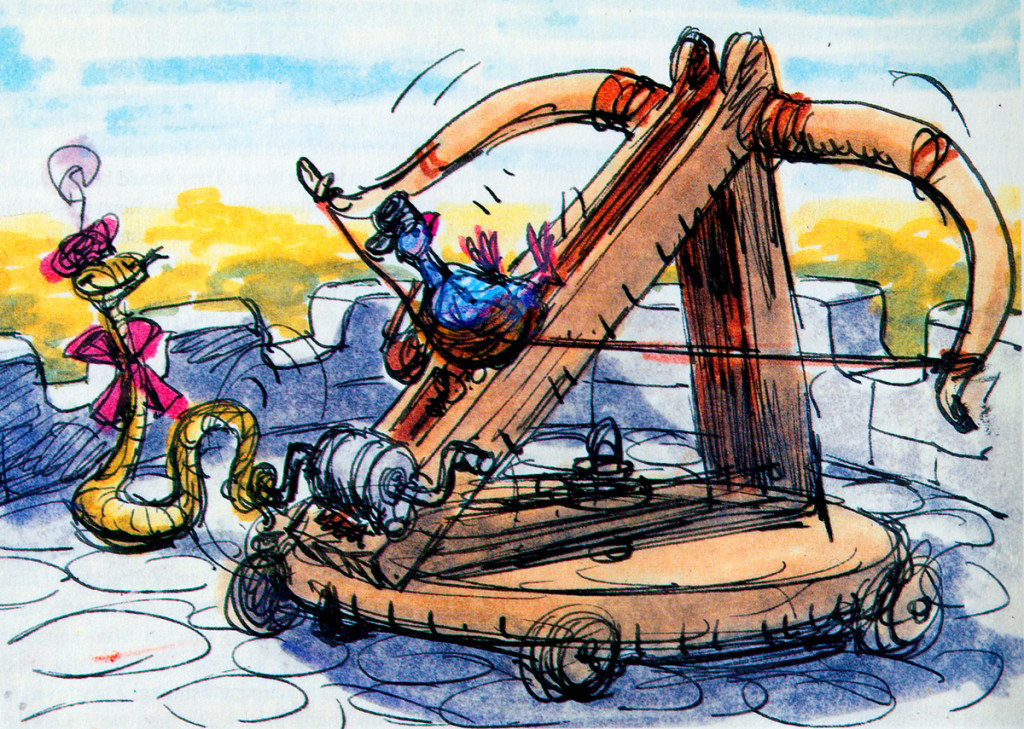
- Right: A discarded sequence from Robin Hood showed a messenger pigeon so fat and heavy he had to be shot into the air. This gave the animators the beginnings of The Albatross Air Lines in The Rescuers.
Phil Harris was so successful, they dragged him into Robin Hood as well. Robin Hood. The very same character from The Jungle Book is now Little John! All those cowboy voices in Robin Hood don’t work either, especially when you mix them up with Brits like Peter Ustinov and Brian Bedford. When these two thespians work against Pat Buttram, Andy Devine and George Lindsey, it’s one thing. Throw in a Phil Harris, and you have something else again. Where are we, the audience, supposed to be? Is it “Merry Ol’ England”? Or is it the lazy take on character development by a few senior animators who have taken license to jump away from the story writers for the sake of easy characters of the generation they’re familiar with. Robin Hood is a mess of a story – even though it’s a solid original they’re working from, and I find it hard to take written advice from these fine old animation pros who take an easy way out for the sake of their animation; shape shifting classic tales to fit their wrinkles.
At least, that’s how I see it – saw it. And perhaps that’s why it’s taken me so long to read this book. I felt (at the age of 14 when these films came out) that the Disney factory had turned into something other than the people who’d made Snow White and Bambi and Lady and the Tramp.
They had, in fact, become the nine old men.
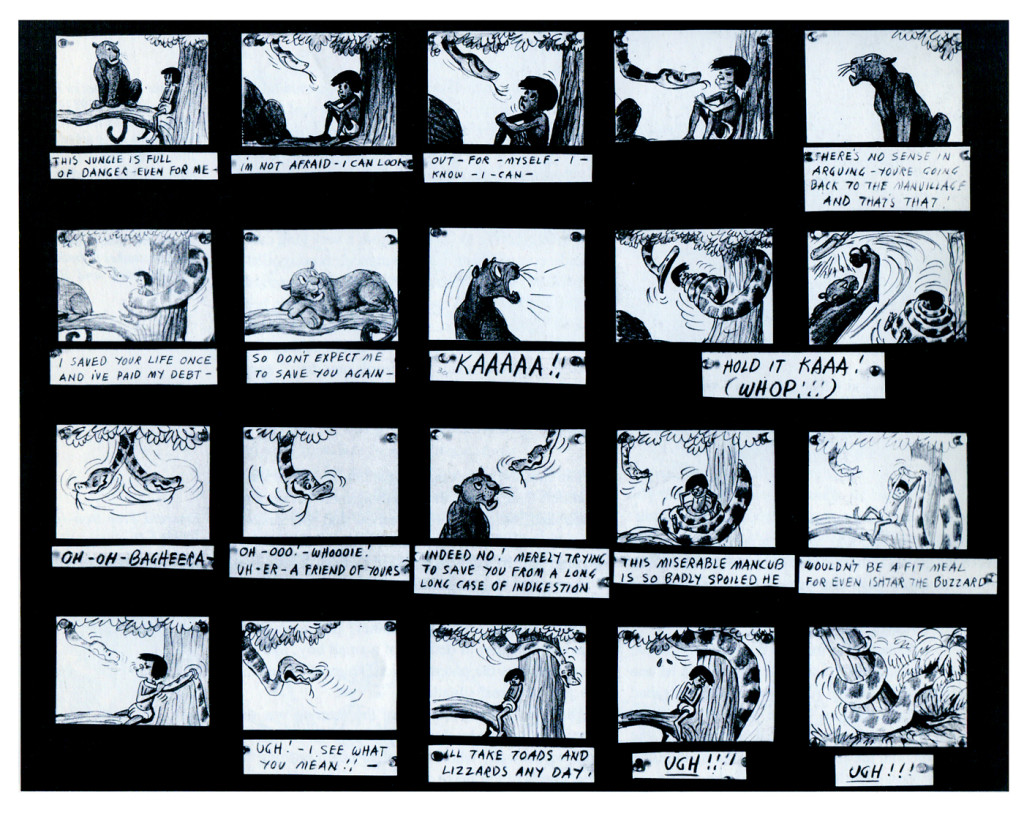
The Jungle Book was the last film Bill Peet worked on. He left
before the film was done. He’d had a long, contentious relationship
with Disney. He never felt he’d gotten the respect he deserved.
They were incredibly talented animators, and they certainly knew how to do their jobs. The animation, itself, was first rate (sometimes even brilliant as Shere Khan demonstrates), but try comparing the stories to earlier features. Even Peter Pan and Cinderella are marvelously developed. Artists like Bill Peet and Vance Gerry knew how to do their jobs, and they did them well. When Peet quit the studio, because he felt disrespected, Disney’s solid story development walked out the door.
The animators were taking the easy route rather than properly developing their stories. The stories had lost all dynamic tension and had become back-room yarns. Good enough, but not good.
Today was Nik Ranieri‘s last day at Disney’s studio. He’s definitive proof, in the eyes of Disney, that 2D animation is dead as an art form. This is the end result of some of the changes Thomas and Johnston suggest in their book. The medium took a hit back then; it just took this long for the suits to catch up. Good luck to Nik and the other Disney artists who no longer work steadily in what is still a vitally strong medium.
Bill Peckmann &Books &Rowland B. Wilson 31 May 2013 05:28 am
Bedtime for Robert
- Bill Peckmann collaborated with Rowland Wilson, back in the early ’80s, on a charming little book for children that never found a publisher and, consequently, never was completed. Bill had a bound copy of the book – in a mockup form – and sent it to me. I, naturally, would like to share it.
First, here’s the note on the inner sleeve of the cover:
- ABOUT BEDTIME FOR ROBERT, A WORDLESS BOOK
Bedtime for Robert is intended to bring to small children an early experience of the special personal relationship one has to a book; the availability and flexibility that a book enjoys over a fixed-time medium such as television.
Being wordless, the book needs no translation. The child has access to it at any time without relying on adults. This early exposure to the physical reality of books will, we believe, enhance the experience of reading later on.
The story combines the pull of a narrative with information that appeals to a child’s curiosity: in this case what goes on at night in the adult world. Although the child must go to bed (reluctantly), Robert the cat’s curiosity leads him into this forbidden adult world. Robert is all cat with cat qualities, not a little person in a cat suit as most cartoon cats are. The child can project his own emotions into the character.
The authors are booklovers with extensive experience in both print and film. We have both won Emrnys and other awards for our animation designs for educational TV.
We believe this is the first book to utilize the principles of film continuity in a printed form. This continuity is vital to the understanding of a narrative without the aid of words.
The use of film pacing supports the unfolding of adventure and humor in a wordless story.
The book is planned to be in color. The pages up to 17 are in finished linework and the rest is in rough layout form.
Robert is conceived as a series. The character and structure would remain constant. The variables would be in the cat’s adventures in various places, seasons, times of the day, and occupations.
Please contact either of us at the addresses below. This is a simultaneous submission.
Yours truly,
Rowland Wilson
Willi Peckmann
You’ll see immediately how original this book is:
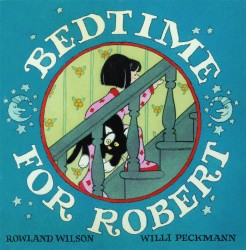
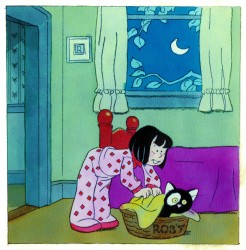 3
3(Click any image to enlarge.)
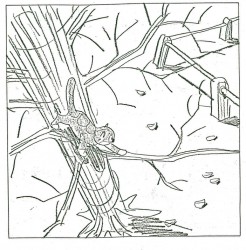 28
28 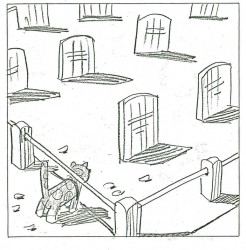 29
29
And just to put everything in proper perspective, here’s a letter they received from Houghton Mifflin rejecting the book. He was Rowland B. Wilson, for god’s sake!
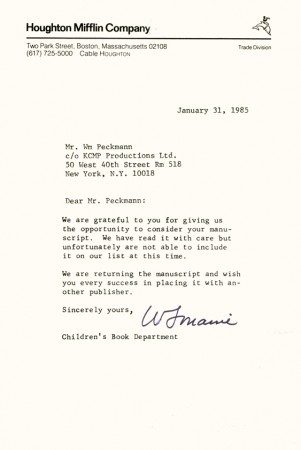
Bill Peckmann added this background info: “The rejection slip from
Houghton Mifflen really hurt the most because our thinking at the time
was that since they were publishing Bill Peet’s books (my all time
favorites), we thought they would understand the concept of “Robert”
better than anyone else. Go figure”
